32 physics experiments that changed the world
From the discovery of gravity to the first mission to defend Earth from an asteroid, here are the most important physics experiments that changed the world.

Physics experiments have changed the world irrevocably, altering our reality and enabling us to take gigantic leaps in technology. From ancient times to now, here's a look at some of the greatest physics experiments of all time.

Conservation of energy
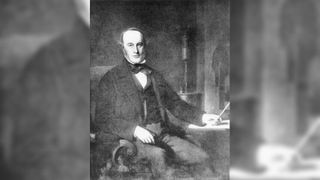
Energy conservation — the idea that energy cannot be created or destroyed, only transformed — is one of the most important laws of physics. James Prescott Joule demonstrated this rule, the first law of thermodynamics , when he filled a large container with water and fixed a paddle wheel inside it. The wheel was held in place by an axle with a string around it and then looped over a pulley and attached to a weight, which, when dropped, caused the wheel to spin. By sloshing the water with the wheel, Joule demonstrated that the heat energy gained by the water from the wheel's movement was equal to the potential energy lost by dropping the weight.
Measurement of the electron's charge
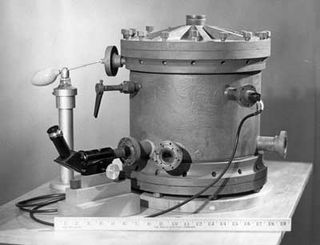
As the fundamental carriers of electric charge, electrons carry the smallest amount of electricity possible. But the particles are truly tiny, with a mass 1,838 times smaller than the already-minuscule proton.
So how could you measure the charge on something so small? Physicist Robert Millikan's answer was to drop electrically charged oil drops through the plates of a capacitor and adjust the voltage of the capacitor until the electric field it emitted produced a force on some of the drops that balanced out gravity — thus suspending them in the air. Repeating the experiment for different voltages revealed that, no matter the size of the drops, the total charge it carried was a multiple of a base number. Millikan had found the fundamental charge of the electron.
"Gold foil experiment" revealing the structure of the atom

Once thought to be indivisible, the atom was slowly divided and split by a series of experiments during the late 19th and early 20th centuries. These included J.J. Thomson's 1897 discovery of the electron and James Chadwick's 1932 identification of the neutron. But perhaps the most famous of these experiments was Hans Geiger and Ernest Marsden's " gold foil experiment ." Under the direction of Ernest Rutherford, the students fired positively charged alpha particles at a thin sheet of gold foil. To their surprise, the particles passed through, revealing that atoms consisted of a positively charged nucleus separated by a significant empty space by their orbiting electrons.
Nuclear chain reaction
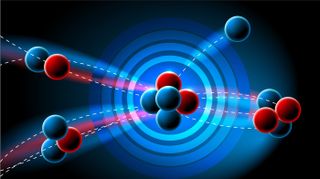
By the mid-20th century, scientists were aware of the basic structure of the atom and that, according to Einstein, matter and energy were different forms of the same thing. This set the stage for the wartime work of Enrico Fermi, who in 1942 demonstrated that atoms could be split to release enormous quantities of energy.
While working at the University of Chicago with an experimental setup he called an "atomic pile," Fermi demonstrated the first-ever controlled nuclear fission reaction. Fermi fired neutrons at the unstable isotope uranium-235, causing it to split and release more neutrons in a growing chain reaction. The experiment paved the way for the development of nuclear reactors and was used by J. Robert Oppenheimer and the Manhattan Project to build the first atomic bombs.
Wave-particle duality

One of the most famous experiments in physics is also one that illustrates, with disturbing simplicity, the bizarreness of the quantum world. The experiment consisted of two slits, through which electrons would travel to create an interference pattern on a screen, like waves. Scientists were stunned when they placed a detector near the screen and found that its presence caused the electrons to switch their behavior to act instead as particles.
First performed by Thomas Young to demonstrate the wave nature of light, the experiment was later used by physicists in the 20th century to show that all particles, including photons , were both waves and particles at the same time — and they acted more like particles when they were being measured directly.
Splitting of white light into colors
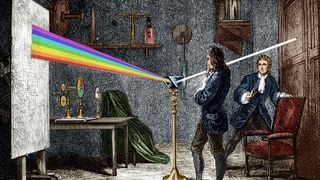
White light is a mixture of all the colors of the rainbow, but before 1672, the composite nature of light was completely unknown. Isaac Newton determined this by using a prism that bent light of different wavelengths, or colors, by different amounts, decomposing white light into its composite colors. The result was one of the most famous experiments in scientific history and a discovery that, alongside other contributions by Newton, gave birth to the modern field of optics.
Discovery of gravity
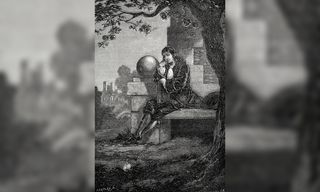
In perhaps the most widely repeated story in all of science, Newton is said to have chanced upon the theory of gravity while contemplating under the shade of an apple tree. According to the legend, when an apple fell and struck him on the head, he supposedly yelled "Eureka!" as he realized that the same force that brought the apple tumbling to Earth also kept the moon in orbit around our planet and Earth circling the sun. That force, of course, would become known as gravity .
The story is slightly embellished, however. According to Newton's own account, the apple did not strike him on the head, and there's no record of what he said or if he said anything, at the moment of discovery. Nonetheless, the realization led Newton to develop his theory of gravity in 1687, which was updated by Einstein's theory of general relativity 228 years later.
Blackbody radiation
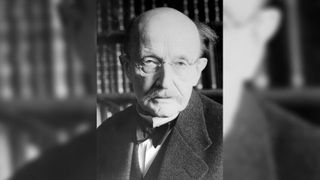
By the turn of the 20th century, many physicists — having advanced theories that explained gravity, mechanics, thermodynamics and the behavior of electromagnetic fields — were confident that they had conquered the vast majority of their field. But one troubling source of doubt remained: Theories predicted the existence of a "blackbody" — an object capable of absorbing and then remitting all incident radiation. The problem was that physicists couldn't find it.
In fact, data from experiments conducted with close approximations of black bodies — a box with a single hole whose inside walls are black — revealed that significantly less energy was emitted from blackbodies than classical theories led scientists to believe, especially at shorter wavelengths. The contradiction between experiment and theory became known as the "ultraviolet catastrophe."
The discovery prompted Max Planck to propose that the energy emitted by blackbodies wasn't continuous but rather split into discrete integer chunks called quanta. His radical proposal catalyzed the development of quantum mechanics , whose bizarre rules are completely unintuitive to observers living in the macroscopic world.
Einstein and the eclipse

Following its publication in 1915, Einstein's groundbreaking theory of general relativity briefly remained just that — a theory. Then, in 1919, astronomer Sir Arthur Eddington devised and completed stunning proof using that year's total solar eclipse .
Key to Einstein's theory was the notion that space — and, therefore, the path that light would follow through it — was warped by powerful gravitational forces. So, as the moon's shadow passed in front of the sun, Eddington recorded the position of nearby stars from his vantage point on the island of Principe in the Gulf of Guinea. By comparing these positions to those he had recorded at night without the sun in the sky, Eddington observed that they had been shifted slightly by the sun's gravity, completing his stunning proof of Einstein's theory.
Higgs boson

In 1964, Peter Higgs suggested that matter gets its mass from a field that permeates all of space, imparting particles with mass through their interactions with a particle known as the Higgs boson .
To search for the boson, thousands of particle physicists planned, constructed and fired up the Large Hadron Collider . In 2012, after trillions upon trillions of collisions in which two protons are smashed together at near light speed, the physicists finally spotted the telltale signature of the boson.
Weighing the world
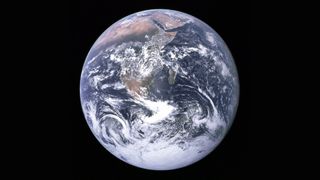
Although he's perhaps best known for his discovery of hydrogen, 18th-century physicist Henry Cavendish's most ingenious experiment accurately estimated the weight of our entire planet. Using a special piece of equipment known as a torsion balance (two rods with one smaller and one larger pair of lead balls attached to the end), Cavendish measured the minuscule force of gravitational attraction between the masses. Then, by measuring the weight of one of the small balls, he measured the gravitational force between it and Earth, giving him an easy formula for calculating our planet's density and — therefore, its weight — that remains accurate to this day.
Conservation of mass
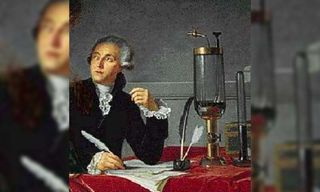
Much like energy, matter in our universe is finite and cannot be created or destroyed, only rearranged. In 1789, to arrive at this startling conclusion, French chemist Antoine Lavoisier placed a burning candle inside a sealed glass jar. After the candle had burned and melted into a puddle of wax, Lavoisier weighed the jar and its contents, finding that it had not changed
Leaning Tower of Pisa experiment
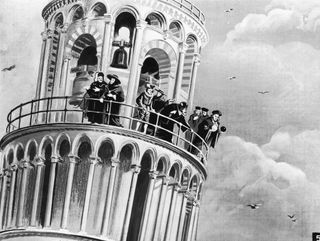
Greek philosopher Aristotle believed that objects fall at different rates because the force acting upon them was stronger for heavier objects — a claim that went unchallenged for more than a millennium.
Then came the Italian polymath Galileo Galilei, who corrected Aristotle's false claim by showing that two objects with different masses fall at exactly the same rate. Some claim Galileo's famous experiment was conducted by dropping two spheres from the Leaning Tower of Pisa, but others say this part of the story is apocryphal. Nonetheless, the experiment was perhaps most famously demonstrated by Apollo 15 astronaut David Scott, who, while dropping a feather and a hammer on the moon, showed that without air, the two objects fell at the same speed.
Detection of gravitational waves
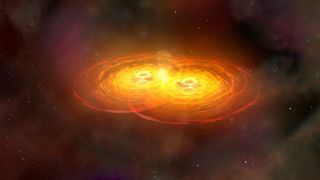
If gravity warps space-time as Einstein predicted, then the collision of two extremely dense objects, such as neutron stars or black holes , should also create detectable shock waves in space that could reveal physics unseen by light. The problem is that these gravitational waves are tiny, often the size of a few thousandths of a proton or neutron, so detecting them requires an extremely sensitive experiment.
Enter LIGO, the Laser Interferometer Gravitational-Wave Observatory. The L-shaped detector has two 2.5-mile-long (4 km) arms containing two identical laser beams. When a gravitational wave laps at our cosmic shores, the laser in one arm is compressed and the other expands, alerting scientists to the wave's presence. In 2015, LIGO achieved its task, making the first-ever direct detection of gravitational waves and opening up an entirely new window to the cosmos.
Destruction of heliocentrism
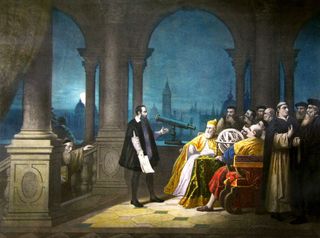
The idea that Earth orbits the sun goes back to the fifth century B.C. to Greek philosophers Hicetas and Philolaus. Nonetheless, Claudius Ptolemy's belief that Earth was the center of the universe later took root and dominated scientific thought for more than a millennium.
Then came Nicolaus Copernicus, who proposed that Earth did, in fact, revolve around the sun and not the other way around. Concrete evidence for this was later offered by Galileo, who in 1610 peered through his telescope to observe the planet Venus moving through distinct phases — proof that it, too, orbited the sun. Galileo's discovery did not win him any friends with the Catholic Church, which tried him for heresy for his unorthodox proposal.
Foucault's pendulum
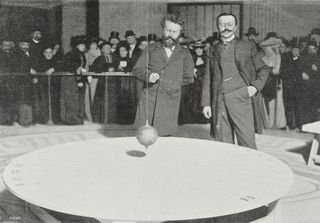
First used by French physicist Jean Bernard Léon Foucault in 1851, the famous pendulum consisted of a brass bob containing sand and suspended by a cable from the ceiling. As it swung back and forth, the angle of the line traced out by the sand changed subtly over time — clear evidence that some unknown rotation was causing it to shift. This rotation was the spinning of Earth on its axis.
Discovery of the electron
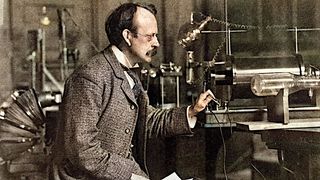
In the 19th century, physicists found that by creating a vacuum inside a glass tube and sending electricity through it, they could make the tube give off a fluorescent glow. But exactly what caused this effect, called a cathode ray, was unclear.
Then, in 1897, physicist J.J. Thomson discovered that by applying a magnetic field to the rays inside the tube, he could control the direction in which they traveled. This revelation showed Thomson that the charge within the tube came from tiny particles 1,000 times smaller than hydrogen atoms. The tiny electron had finally been found.
Deflection of an asteroid
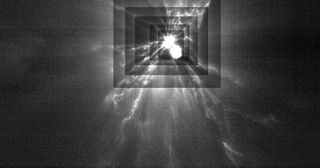
In 2022, NASA scientists hit an astronomical "bull's-eye" by intentionally steering the 1,210-pound (550 kilograms), $314 million Double Asteroid Redirection Test (DART) spacecraft into the asteroid Dimorphos just 56 feet (17 meters) from its center. The test was designed to see if a small spacecraft propelled along a planned trajectory could, if given enough lead time, redirect an asteroid from a potentially catastrophic impact with Earth.
DART was a smashing success . The probe's original goal was to change the orbit of Dimorphos around its larger partner — the 2,560-foot-wide (780 m) asteroid Didymos — by at least 73 seconds, but the spacecraft actually altered Dimorphos' orbit by a stunning 32 minutes. NASA hailed the collision as a watershed moment for planetary defense, marking the first time that humans proved capable of diverting Armageddon, and without any assistance from Bruce Willis.
Faraday induction
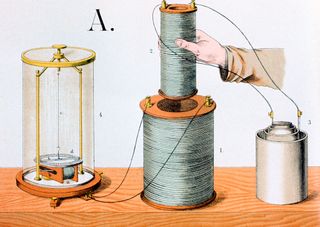
In 1831, Michael Faraday, the self-taught son of a blacksmith born in rural south England, proposed the law of electromagnetic induction. The law was the result of three experiments by Faraday, the most notable of which involved the movement of a magnet inside a coil made by wrapping a wire around a paper cylinder. As the magnet moved inside the cylinder, it induced an electric current through the coil — proving that electric and magnetic fields were inextricably linked and paving the way for electric generators and devices.
Measurement of the speed of light

Light is the fastest thing in our universe, which makes measuring its speed a unique challenge. In 1676, Danish astronomer Ole Roemer chanced upon the first estimate for light's propagation while studying Io, Jupiter's innermost moon. By timing the eclipses of Io by Jupiter, Roemer was hoping to find the moon's orbital period.
What he noticed instead was that, as Earth's orbit moved closer to Jupiter, the time intervals between successive eclipses became shorter. Roemer's crucial insight was that this was due to a finite speed of light, which he roughly calculated based on Earth's orbit. Other methods later refined the measurement of light's speed, eventually arriving at its current value of 2.98 × 10^8 meters per second (about 186,282 miles per second).
Disproof of the "luminiferous ether"
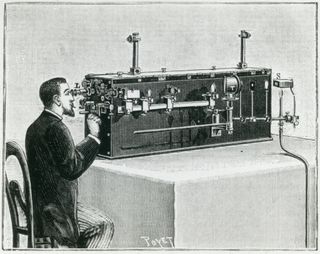
Most waves, such as sound waves and water waves, require a medium to travel through. In the 19th century, physicists thought the same rule applied to light, too, with electromagnetic waves traveling through a ubiquitous medium dubbed the "luminiferous ether."
Albert Michelson and Edward W. Morley set out to prove this conjecture with a remarkably ingenious hypothesis: As the sun moves through the ether, it should displace some of the strange substance, meaning light should travel detectably faster when it moves with the ether wind than against it. They set up an interferometer experiment that used mirrors to split light beams along two opposing directions before bouncing them back with distant mirrors. If the light beams returned at different times, then the ether was real.
But the light beams inside their interferometer did not vary. Michelson and Morley concluded that their experiment had failed and moved on to other projects. But the result — which had conclusively disproved the ether theory — was later used by Einstein in his theory of special relativity to correctly state that light's speed through a fixed medium does not change, even if its source is moving.
Discovery of radioactivity
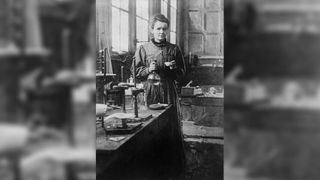
In 1897, while working in a converted shed with her husband Pierre, Marie Curie began to investigate the source of a strange new type of radiation emitted from the elements thorium and uranium. Marie Curie discovered that the radiation these elements emitted did not depend on any other factors, such as their temperature or molecular structure, but changed purely based on their quantities. While grinding up an even more radioactive substance known as pitchblende, she also discovered that it consisted of two elements that she dubbed radium and polonium.
Curie's work revealed the nature of radioactivity, a truly random property of atoms that comes from their internal structure. Curie won the Nobel Prize (twice) for her discoveries — making her the first woman to do so — and later trained doctors to use X-rays to image broken bones and bullet wounds. She died of aplastic pernicious anemia, a disease caused by radiation exposure, in 1934.
Expansion of the universe
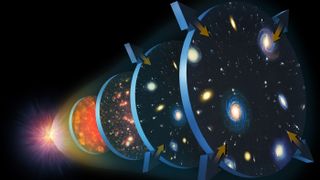
While using the 100-inch Hooker telescope in California to study the light glimmering from distant galaxies in 1929, Edwin Hubble made a surprising observation: The light from the distant galaxies appeared to be shifted toward the red end of the spectrum — an indication that they were receding from Earth and each other. The farther away a galaxy was, the faster it was moving away.
Hubble's observation became a crucial piece of evidence for the Big Bang theory of our universe. Yet precise measurements for galaxies' recession, known as the Hubble constant, still confound scientists to this day .
Put simply, the universe is indeed expanding, but depending on where cosmologists look, it's doing so at different rates. In the past, the two best experiments to measure the expansion rate were the European Space Agency 's Planck satellite and the Hubble Space Telescope . The two observatories, each of which used a different method to measure the expansion rate, arrived at different results. These conflicting measurements have led to what some call a "cosmology crisis" that could reveal new physics or even replace the standard model of cosmology.
Ignition of nuclear fusion
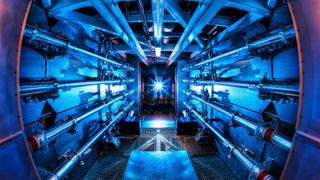
In 2022, scientists at the National Ignition Facility (NIF) at Lawrence Livermore National Laboratory in California used the world's most powerful laser to achieve something physicists have been dreaming about for nearly a century: the ignition of a pellet of fuel by nuclear fusion .
The demonstration marked the first time that the energy going out of the plasma in the nuclear reactor's fiery core exceeded the energy beamed in by the laser, and has been a rallying call for fusion scientists that the distant goal of near-limitless and clean power is, in fact, achievable.
However, scientists have cautioned that the energy from the plasma exceeds only that from the lasers, and not from the energy from the whole reactor. Additionally, the laser-confinement method used by the NIF reactor, built to test thermonuclear explosions for bomb development, will be difficult to scale up.
Measurement of Earth's circumference

By roughly 500 B.C., most ancient Greeks believed the world was round — citing evidence provided by Aristotle and guided by a suggestion from Pythagoras, who believed a sphere was the most aesthetically pleasing shape for our planet.
Then, around 245 B.C., Eratosthenes of Cyrene thought of a way to make the measurement directly. Eratosthenes hired a team of bematists (professional surveyors who measured distances by walking in equal-length steps called stadia) to walk from Syene to Alexandria. They found that the distance between the two cities was roughly 5,000 stadia.
Eratosthenes then visited a well in Syene that had been reported to have an interesting property: At noon on the summer solstice each year, the sun illuminated the well's bottom without casting any shadows. Eratosthenes went to Alexandria during the solstice, stuck a pole in the ground and measured the shadow from it to be about one-fiftieth of a complete circle. Pairing this with his measurement of the distance between the two cities, he determined that Earth's circumference was about 250,000 stadia, or 24,497 miles (39,424 km). Earth is now known to measure 24,901 miles (40,074 km) around the equator, making the ancient Greeks' measurements remarkably accurate.
Discovery of black holes
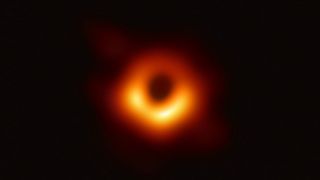
The acceptance of Einstein's theory of general relativity led to some startling predictions about our universe and the nature of reality. In 1915, Karl Schwarzschild's solutions to Einstein's field equations predicted that it was possible for mass to be compressed into such a small radius that it would collapse into a gravitational singularity from which not even light could escape — a black hole.
Schwarzschild's solution remained speculation until 1971, when Paul Murdin and Louise Webster used NASA's Uhuru X-ray Explorer Satellite to identify a bright X-ray source in the constellation Cygnus that they correctly contended was a black hole.
More conclusive evidence came in 2015, when the LIGO experiment detected gravitational waves from two of the colliding cosmic monsters. Then, in 2019, the Event Horizon Telescope captured the first image of the accretion disk of superheated matter surrounding the supermassive black hole at the center of the galaxy M87.
Discovery of X-rays
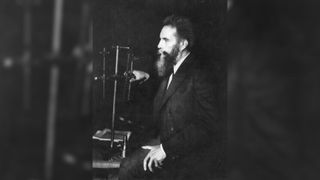
While testing whether the radiation produced by cathode rays could escape through glass in 1895, German physicist Wilhelm Conrad Röntgen saw that the radiation could not only do so, but it could also zip through very thick objects, leaving a shadow on a lead screen placed behind them. He quickly realized the medical potential of these rays — later known as X-rays — for imaging skeletons and organs. His observations gave birth to the field of radiology, enabling doctors to safely and noninvasively scan for tumors, broken bones and organ failure.
The Bell test
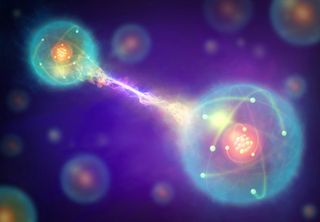
In 1964, physicist John Stewart Bell proposed a test to prove that quantum entanglement — the weird instantaneous connection between two far-apart particles that Einstein objected to as "spooky action at a distance" — was required by quantum theory.
The test has taken many experimental forms since Bell first proposed it, but the findings remain the same: Despite what our intuition tells us, what happens in one part of the universe can instantaneously affect what happens in another, provided the objects in each region are entangled.
Detection of the quark
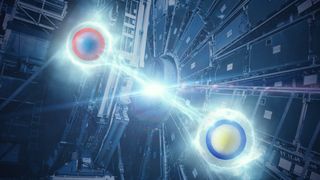
In 1968, experiments at the Stanford Linear Accelerator Center found that electrons and their lepton cousins, muons, were scattering from protons in a distinct way that could only be explained by the protons being composed of smaller components. These findings matched predictions by physicist Murray Gell-Mann, who dubbed them "quarks" after a line in James Joyce's "Finnegans Wake."
Archimedes' naked leap from his bathtub
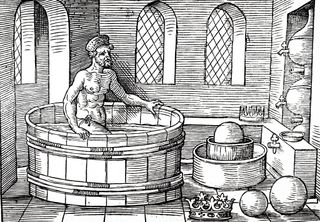
First recorded in the first century B.C. by Roman architect Vitruvius, Archimedes' discovery of buoyancy is one of the most famous stories in science. The prompting for Archimedes' finding came from King Hieron of Syracuse, who suspected that a pure-gold crown a blacksmith made for him actually contained silver. To get an answer, Hieron enlisted Archimedes' help.
The problem stumped Archimedes, but not long after, as the story goes, he filled up a bathtub with water and noticed that the water spilled out as he got in. This caused him to realize that the water displaced by his body was equal to his weight — and because gold weighed more than silver, he had found a method for judging the authenticity of the crown. "Eureka!" ("I've got it!") Archimedes is said to have cried, leaping from his bathtub to announce his discovery to the king.
Deepest and most detailed photo of the universe
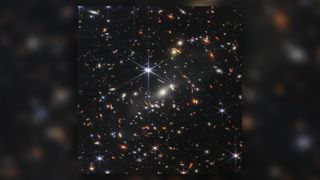
In 2022, the James Webb Space Telescope unveiled the deepest and most detailed picture of the universe ever taken . Called "Webb's First Deep Field," the image captures light as it appeared when our universe was just a few hundred million years old, right when galaxies began to form and light from the first stars started flickering.
The image contains an overwhelmingly dense collection of galaxies, the light from which, on its way to us, was warped by the gravitational pull of a galaxy cluster. This process, known as gravitational lensing, brings the fainter light into focus. Despite the dizzying number of galaxies in view, the image represents just a tiny sliver of sky — the speck of sky blocked out by a grain of sand held on the tip of a finger at arm's length.
OSIRIS-REx asteroid-sampling mission
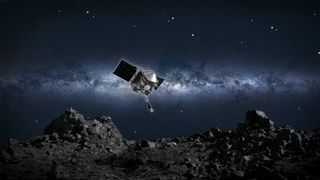
In 2023, NASA's OSIRIS-REx spacecraft came hurtling back through Earth's atmosphere after a years-long journey to Bennu, a " potentially hazardous asteroid " with a 1-in-2,700 chance of smashing cataclysmically into Earth — the highest odds of any identified space object.
The goal of the mission was to see whether the building blocks for life on Earth came from outer space. OSIRIS-REx circled the asteroid for 22 months to search for a landing spot, touching down to collect a 2-ounce (60 grams) sample from Bennu's surface that could contain the extraterrestrial precursors to life on our planet. Scientists have already found many surprising details that have the potential to rewrite the history of our solar system .
Sign up for the Live Science daily newsletter now
Get the world’s most fascinating discoveries delivered straight to your inbox.
Ben Turner is a U.K. based staff writer at Live Science. He covers physics and astronomy, among other topics like tech and climate change. He graduated from University College London with a degree in particle physics before training as a journalist. When he's not writing, Ben enjoys reading literature, playing the guitar and embarrassing himself with chess.
Large Hadron Collider finds 1st evidence of the heaviest antimatter particle yet
Do atoms ever touch?
NASA's Parker Solar Probe will reach its closest-ever point to the sun on Christmas Eve
Most Popular
- 2 Everything you need to know about digiscoping
- 3 MIT's massive database of 8,000 new AI-generated EV designs could shape how the future of cars look
- 4 'Rising temperatures melted corpses out of the Antarctic permafrost': The rise of one of Earth's most iconic trees in an uncertain world
- 5 Space photo of the week: James Webb and Chandra spot a cosmic 'Christmas Wreath' sparkling in the galaxy next door

12 experiments that changed the world
by Charlie Evans · 10/09/2018
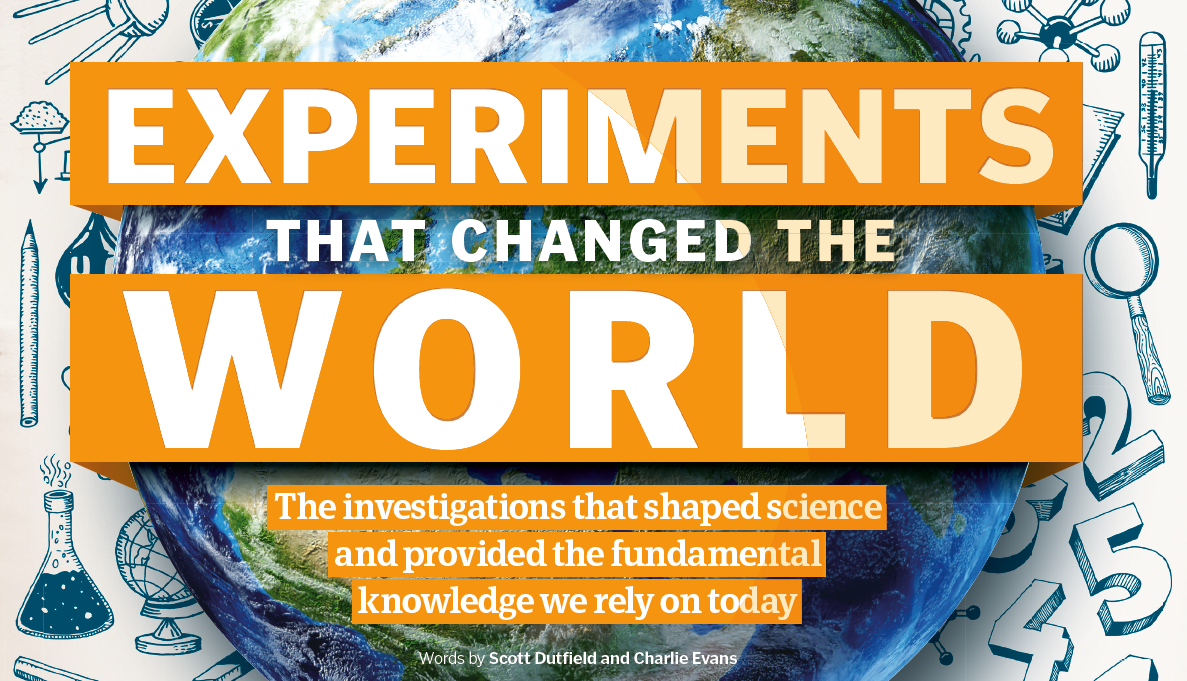
Cavendish weighs the world
N ot only did the solitary and eccentric Henry Cavendish discover hydrogen, but he also successfully measured the weight of the world. His ambitious experiment used a special piece of equipment called a torsion balance, and in 1798 he reported his results. By measuring the gravitational attraction between two different sized lead spheres, he calculated the Earth’s density. The apparatus consisted of a 1.8-metre wooden rod that had a 0.73-kilogram lead sphere attached to each end, suspended from a wire. A separate system of two larger 159-kilogram lead balls were placed close to the smaller balls. This exerted enough gravitational force so that when the weights were tugged slightly the rod twists (a telescope was used to observe this). Cavendish performed his experiments in a dark and wind-proof to prevent any external air currents and temperature differences affecting his results. He was able to calculate the Earth’s density by using the ratios of the forces between the spheres and the gravitational attraction of the Earth to the spheres. Incredibly, his results were very accurate, and his great experiment meant we could also calculate the mass of the Sun and the Moon and even other planets in our Solar System.
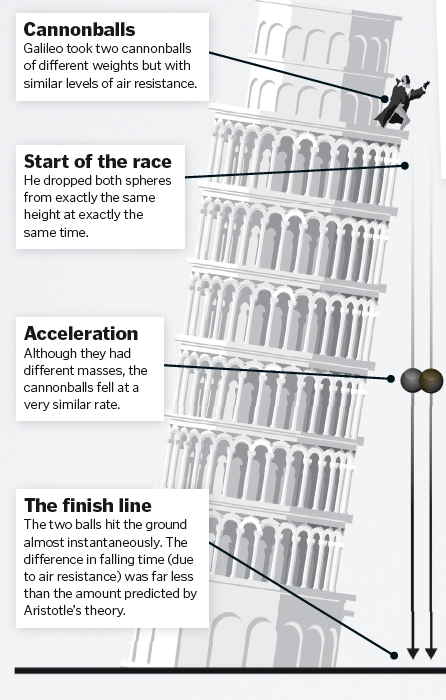
Galileo Galilei and the Leaning Tower of Pisa Experiment
Imagine you drop a bowling ball from one hand and a feather from the other. Which will fall faster? It is obviously the bowling ball, but this doesn’t reflect the nature of the force of gravity. Greek philosopher Aristotle had proposed that objects fell at different rates because gravity would act more strongly on heavier objects, but it turns out that the feather falls slower only because of air resistance. If you could perform the same experiment in a vacuum, the feather and ball will hit the ground at exactly the same time. It is difficult to separate fact from legend, but the story goes that Aristotle’s theory of gravity went unchallenged until Italian polymath Galileo Galilei disproved it. Though he spent the last years of his life imprisoned for going against the popular beliefs of the time, his work on speed, velocity, gravity and free fall provided the foundations of the understanding of how the planets and Solar System moved. Hundreds of years after his death his experiment was repeated on the Moon – unsurprisingly, Galileo was right
Mendel’s peas
How do we inherit our genes from our parents? The answer was actually discovered not by studying humans but peas. Gregor Johann Mendel, an Augustinian friar, crossbred peas with differing characteristics in order to evaluate how different features were inherited in their offspring. His work focused on pea plants and their seven observable traits: the shapes of the pods and seeds; plant height; flower position; and seed, pod and flower colour.
The study took around eight years, in which time he observed some 28,000 pea plants. When looking at the colour of peas produced, Mendel found that different generations of plants expressed different ratios of green and yellow peas, with yellow being the dominant colour. He discovered that genes are paired and the mathematical pattern seen throughout generations caused their dominant and recessive expression. This pattern can also apply to the genetics that code for our eye and hair colour.
Fleming’s accidental discovery of penicillin
1928, at St Mary’s Hospital in London, Alexander Fleming was busy investigating the bacterium, Staphylococcus aureus. The bacteria had been wreaking havoc, causing fatal infections, and there was no medicine at the time to treat them. On one occasion, Fleming forgot to put one of his Petri dishes into an incubator.
He noticed that a mould had a clear zone around it. He investigated and found that the mould had contaminated the dish, inhibiting the growth of the bacteria. England, 20th century While he was away on a two-week holiday the bacteria multiplied, and on his return he noticed something unusual in the rogue Petri dish. There was an area where the bacteria could not grow and instead left a ‘mould juice’ to form a clear Penicillium notatum. By the late 1930s, scientists Howard Florey and Ernst Boris Chain had managed to isolate and purify penicillin, and the antibiotic was available as an injection by 1941. It is estimated that this discovery has saved up to 200 million lives to date.
Pasteur uncovers the origin of cells
Back in the 1800s, people thought food spoiled and diseases were caused by ‘bad air’ or life spontaneously generating. Louis Pasteur didn’t – he rejected the idea that mice could be randomly created from rotting wheat and old cloth over a few weeks. After noticing that his own vats of beer were turning sour, Pasteur started analysing them only to discover they were swarming with bacteria. This convinced him that the spoiling of his brew was caused by these tiny microorganisms. He designed a simple experiment to prove his revolutionary germ theory, and as a result, disproved the idea that cells could come from nothing. So crucial was his work in the food and medicine industry that we even named a process after him – pasteurisation; the process of heat-treating something for a short time and cooling it down quickly to make it safe from bacteria.
Fermi’s nuclear reactor
After the atom was split and the term ‘nuclear fission’ was coined, physicist Enrico Fermi applied the principle to create the first self-sustaining nuclear chain reaction in a human-made reactor: Chicago Pile-1. Scientists were aware that a nuclear reactor would allow for the production of a weapon like nothing seen before. The outbreak of WWII meant that weapon production was a priority, a consequence of which was the birth of both the Manhattan Project and Fermi’s reactor. Once uranium-235 is hit with a neutron, the nucleus splits to form two smaller nuclei and more neutrons, which then go on to split other uranium atoms, thus forming a chain reaction. The reactor was made from stacks of graphite blocks to slow down fast uranium neutrons, increasing the likelihood of nuclear fission. This reaction needed to be controlled in order for it to be safe. Control rods made from cadmium were used to absorb the excess neutrons created from the nuclear fission. Adding or removing the rods could control the longevity of the chain reaction. This reaction produced large amounts of energy, which could then be harnessed for warfare.
Rutherford strikes gold
It was previously believed that the structure of the atom was a sphere of positive charge housing smaller negatively charged electrons within it, like plums within a pudding. To test the accuracy of this ‘plum pudding’ model — under the direction of Ernest Rutherford — Hans Geiger and Ernest Marsden performed a series of experiments between 1908–1913 to prove Rutherford’s theory of an atomic model, which resembled planets orbiting the Sun.
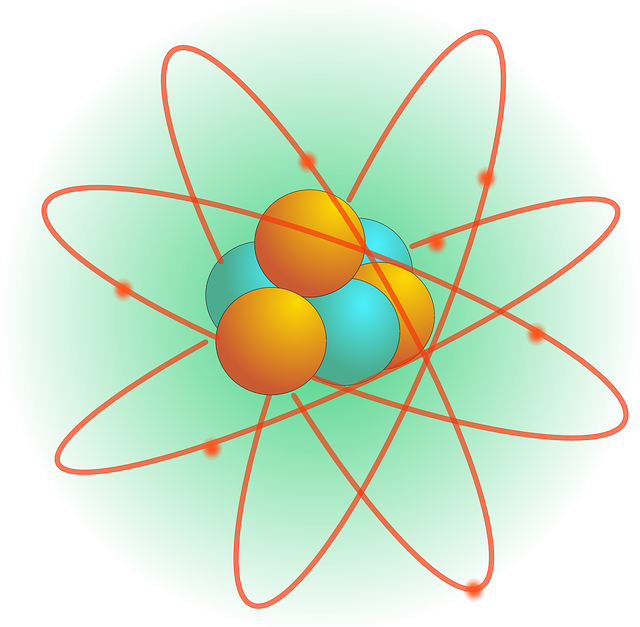
The physicists used a radioactive substance to bombard a thin piece of gold foil with positively charged alpha particles. The majority of particles passed through the foil without any deflection, suggesting that atoms had a great deal of open space.
However, some were deflected o the gold foil at different angles, which meant that those particular particles had hit something with the same charge. This meant that rather than a positive charge engulfing electrons, a smaller positive charge was held in the dense middle, thus heralding the discovery of the atomic nucleus.
Lavoisier and the conservation of mass
It was a French chemist named Antoine Lavoisier who formulated the concept of the conservation of mass – the idea that matter can neither be created nor destroyed, only rearranged. He did so by measuring the mass of reactants and products during chemical reactions. One of Lavoisier’s experiments entailed placing a burning candle inside a sealed glass jar. As the wick burned down and the candle melted, the weight of the jar and its contents remained the same, thereby proving his pioneering theory. At the time, chemists were exploring the formation of calx (an oxide), predicting that metals lost mass as they were burnt. Lavoisier countered this with the idea that calx was the result of atmospheric gas interacting with the metal. Rather than the metal losing mass, he found it gained weight by combining with oxygen from the air.
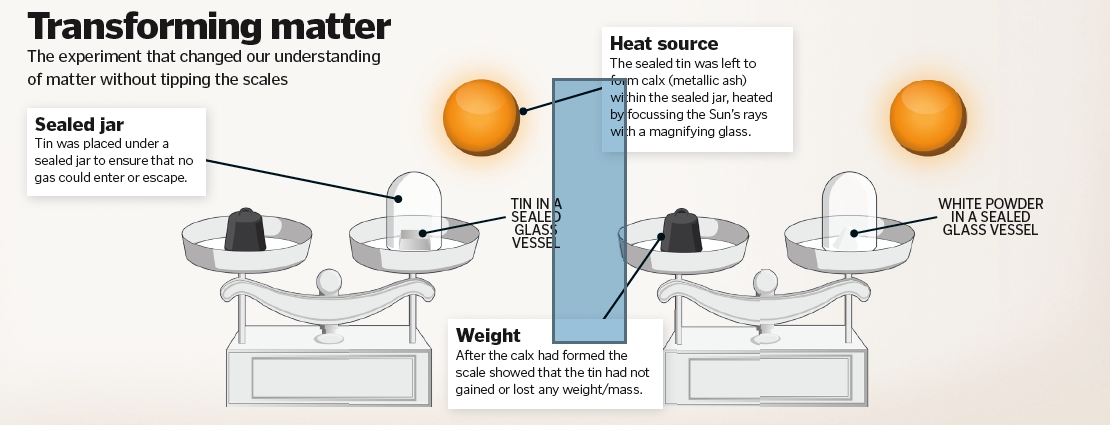
Lind cures sailors’ scurvy
Bleeding gums, your teeth dropping out, weak limbs, swollen legs and nasty patches of blood under your skin – a pirate’s life probably wouldn’t have been ideal for most of us. Scurvy was one of the diseases that plagued pirates and sailors in the early days of seafaring. We know today that the disease is caused by a serious lack of vitamin C, something we need to form collagen, a vital component in structural and supportive connective tissue. Without enough collagen, the blood vessels and bones of those with scurvy break down until they suer a slow and painful death. But in the time of Scottish physician James Lind, there was no knowledge about these tiny nutrients. People thought that scurvy might be contagious or caused by madness. In 1747, Lind started one of the world’s first clinical trials. He suspected that acids could help stop the putrefaction of the body, and he devised a trial to test dierent ways of introducing certain acids into people’s diets. He divided a group of 12 scurvy-ridden sailors into six groups of two, all of which were to eat the same diet as one another but with the addition of an acidic supplement. Each group was treated with either a quart of cider, 25 drops of elixir of vitriol, two spoonfuls of vinegar, half a pint of seawater, two oranges and one lemon, or a spice paste, every day. After six days most of the sailors eating the fruit had made an almost complete recovery. While Lind was on the wrong track about the cause of the disease, he had found the cure.
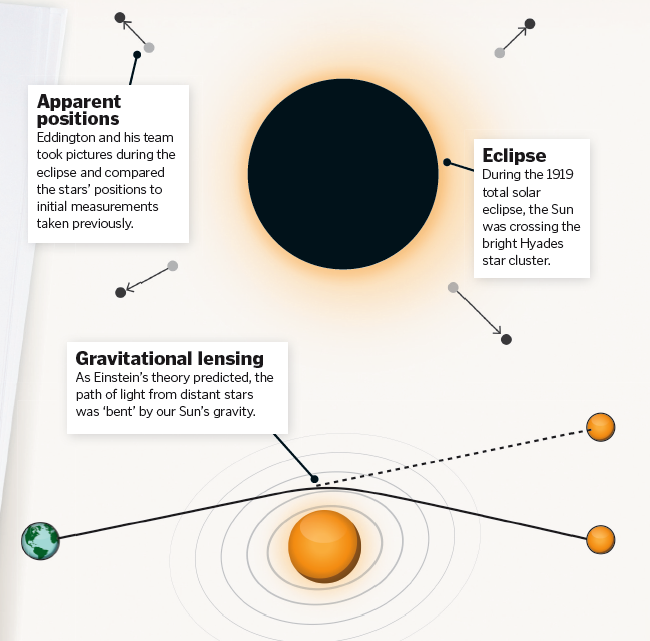
Scientific explanations in theoretical physics often remain just that, theoretical – but not all of them do. Albert Einstein published his general theory of relativity back in 1915, a criterion of which was that light bends near a massive gravitational force. However, Einstein was aware that should this or any of the other criteria required to support his revolutionary idea be disproven, then bang went the theory.
Einstein’s pioneering work remained a theory until an astronomer named Sir Arthur Eddington used an eclipse to prove light could be bent by gravitational forces. In order for Einstein’s theory to be correct, Eddington had to prove that the light had been bent by a source of intense gravity, such as the Sun.
A total solar eclipse in 1919 presented Eddington with a unique opportunity to witness the night sky during the daytime. After setting sail to Príncipe Island to get the best view of a predicted solar eclipse and test out Einstein’s theory, Eddington observed the locations of stars at night and then again under the false night of an eclipse. This meant that he could observe if the gravity of the Sun had altered the stars’ apparent positions, which in fact it had. This proved that light had been bent on its journey to Earth by way of the Sun’s gravity, meaning Einstein was correct.
The creation of graphene
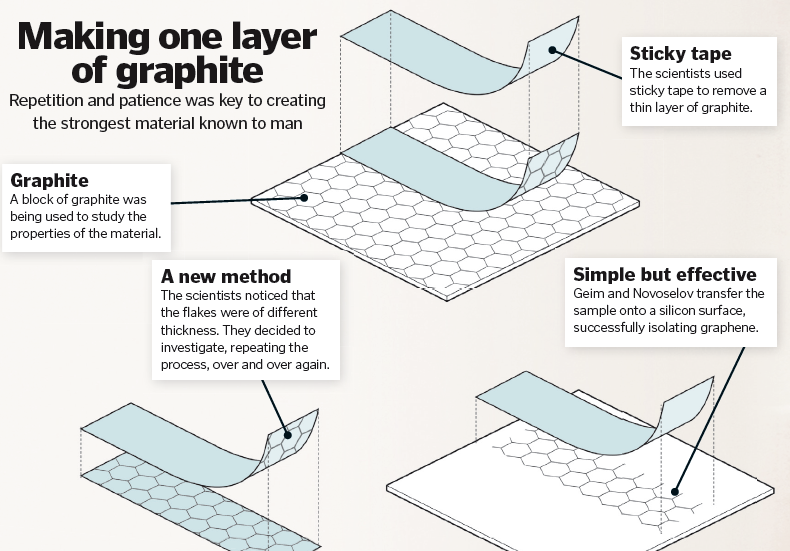
From theory to reality
In 1964, particle physicist Peter Higgs proposed a theory as to how particles have mass. He suggested that empty space is occupied by a field termed the Higgs field, where particles pass through it and either collect mass, like an electron or don’t interact with it at all and remain massless, such as a photon.
An analogy would be a person moving through a crowd of strangers versus a crowd of friends.
Moving through of crowd of strangers, you would pass easily without stopping, whereas surrounded by friends you might stop to talk, taking you longer to make your way through. In this case, your friends would be the Higgs boson. The Large Hadron Collider fires two beams of protons in opposite directions and accelerates them to near the speed of light so they collide to release the boson and other subatomic particles. This became a reality on 4 July 2012.
For more information about science and technology, visit our website now. If you have a tablet or smartphone, you can also download the latest digital version onto your iOS or Android device. To make sure you never miss an issue of How It Works magazine, subscribe today!
Enter our latest competition

Competition
Win a science kit bundle worth nearly £200!

- Next story Nasa is launching a satellite to watch the world’s ice and forests
- Previous story The placebo effect
Get the new issue

On sale now
Follow How It Works on twitter
Fast facts on instagram (@howitworksmag).

- The Magazine
- Stay Curious
- The Sciences
- Environment
- Planet Earth
10 Scientific Discoveries That Changed The World
Dna, gravity, and germ theory are a few of the key findings in history that forever shifted the course of human civilization. learn how these scientific discoveries changed the world..

The only constant is change. At least, that’s what the Greek philosopher Heraclitus is credited to have said. And while science and philosophy don’t always go hand in hand, there is some truth to Heraclitus’ notion. Change is inevitable and, in some cases, necessary for our species to evolve . While some change happens automatically, like the tides going in and out, some changes bloomed from scientific discoveries.
Using fire to cook food and keep warm propelled our ancestors toward the foundations of early settlements and continued the growth of civilization. Using fire to shape metals for weapons and building materials led to more and more discoveries and more and more advancements. While many advances shaped humanity, we’ve focused on ten significant scientific discoveries that changed the world.
The discovery of DNA didn’t so much change the world as it did our understanding of it — more so, our understanding of life. DNA is a term we’ve only started using in the 20th century, though its initial discovery dates back decades into the 19th century.
What Is DNA?
DNA is the molecule that encodes genetic information for all living things. It plays a key role in passing traits from parents to offspring and is the primary component of chromosomes in the cell nuclei of complex organisms.
Who Discovered DNA?
Many people think scientists James Watson and Francis Crick discovered DNA in the 1950s. Nope, not so fast. DNA was actually first discovered in 1869 by Swiss physician Friedrich Miescher . He identified what he referred to as “nuclein” in blood cells. Several other researchers have worked on projects around identifying DNA up until Watson and Crick.
What Does DNA Stand For?
The term nuclein eventually evolved into what we know as DNA, the shorthand for deoxyribonucleic acid. German biochemist Albrecht Kossel , who would later go on to win the Nobel Prize, is often credited with the name.
Levene’s Polynucleotide Model
Other scientists, such as Phoebus Levene , built on Miescher’s work over the years. Levene didn't know how DNA's nucleotide components were arranged. He proposed the polynucleotide model, correctly suggesting that nucleic acids are chains of nucleotides, each with a base, a sugar, and a phosphate group.
Watson and Crick's Double-Stranded Helix
Watson and Crick and “their” groundbreaking discovery in the field of genetics accurately identified DNA’s double-stranded helix structure, connected by hydrogen bonds. For their discovery, Watson and Crick won a Nobel Prize in 1962 and worldwide acclaim.
Though Watson and Crick won a Nobel Prize, years later, we’ve learned that the duo likely took research without permission from chemist Rosalind Franklin . Thanks to her research, the double helix structure was realized, though her Nobel Prize was not.
In 2014, Watson auctioned off his Nobel Prize medal for over $4 million. The buyer was a Russian billionaire who returned it to Watson a year later. In 2019, Watson was stripped of his honorary titles because of racist comments.
Read More: DNA in Unlikely Places Helps Piece Together Ancient Humans' Family Trees
2. Earth in Motion
While it may be common knowledge that Earth spins on an axis and revolves around the sun, at one point, this idea was extremely outlandish. How could the planet move and we not feel it? Thanks to a few clever scientists, the Earth in Motion theory became more than a wild idea.
What Is Earth in Motion?
Earth in motion refers to the understanding that Earth is not stationary but moves in different ways. Earth rotates on an axis and revolves around a star.
Earth’s Rotation
Earth rotates on its axis , which is an imaginary line running from the North Pole to the South Pole. This rotation is responsible for the day-night cycle, with one complete rotation taking about 24 hours.
Earth’s Revolution
Earth revolves around the Sun, completing one orbit approximately every 365 days. This revolution, combined with the tilt of the Earth's axis, leads to the changing seasons.
Who Discovered Earth's Motion?
The discovery and acceptance of Earth's motion was a gradual process involving several key figures in the history of science.
Aristarchus Hypothesis of Earth’s Motion
An ancient Greek astronomer, Aristarchus of Samos, was one of the first to suggest that Earth orbits the Sun . This view was not widely accepted in his time as it was believed Earth was the center of the Universe, and stars, planets, and the sun all revolved around our planet.
Copernicus Creates the First Model of Earth’s Motion
Mathematician and astronomer Nicolaus Copernicus is often credited with proposing the first heliocentric model of the universe. In 1543, he published his great work, On the Revolutions of the Heavenly Spheres , which explained his theories.
Among them was that day and night was created by the Earth spinning on its axis. Copernican heliocentrism replaced the conventionally accepted Ptolemaic theory , which asserted that the Earth was stationary. Copernicus’ work was largely unknown during his lifetime but later gained support.
Galileo Galilei’s Telescopic Observations
Galileo Galilei agreed with Copernicus’ theory and proved it through his telescopic observations. In 1610, he observed phases of Venus and the moons of Jupiter, which were strong evidence against the Earth-centered model of the universe.
Galileo agreed with Copernicus’ theory and proved it by using a telescope to confirm that the different phases Venus went through resulted from orbiting around the sun.
Johannes Kepler’s Planetary Laws
German mathematician Johannes Kepler formulated a series of laws detailing the orbits of planets around the Sun. These laws, which remain relevant today, provided mathematical equations for accurately predicting planetary movements in line with the Copernican theory.
Why Don’t We Feel Earth Spinning?
According to researchers at the California Institute of Technology (CalTech), Earth spins smoothly and at a consistent speed. If Earth were to change speeds at any time, we’d feel it.
Read More: Earth's Rotation Has Slowed Down Over Billions of Years
3. Electricity
Did benjamin franklin discover electricity.
It’s a common misconception that Ben Franklin discovered electricity with his famous kite experiment. But his 1752 experiment, which used a key and kite, instead demonstrated that lightning is a form of electricity . Another myth is that Franklin was struck by lightning. He wasn’t, but the storm did charge the kite.
Who First Observed Electricity?
Back in 600 B.C.E., it was the ancient Greek philosopher Thales of Miletus who first observed static electricity when fur was rubbed against fossilized tree resin, known as amber.
Who Invented Electricity?
British scientist and doctor William Gilbert coined the word “electric,” derived from the Greek word for amber. Regarded as the “father of electricity,” Gilbert was also the first person to use the terms magnetic pole, electric force, and electric attraction. In 1600, his six-volume book set, De Magnete , was published. Among other ideas, it included the hypothesis that Earth itself is a magnet.
Read More: Ben Franklin: Founding Father, Citizen Scientist
4. Germ Theory of Disease
What is the germ theory of disease.
Germ theory is a scientific principle in medicine that attributes the cause of many diseases to microorganisms, such as bacteria and viruses, that invade and multiply within the human body. This theory was a significant shift from previous beliefs about disease causation.
Who Invented the Germ Theory?
Louis Pasteur discovered germ theory when he demonstrated that living microorganisms caused fermentation , which could make milk and wine turn sour. From there, his experiments revealed that these microbes could be destroyed by heating them — a process we now know as pasteurization.
This advance was a game changer, saving people from getting sick from the bacteria in unpasteurized foods , such as eggs, milk, and cheeses. Before Pasteur, everyday people and scientists alike believed that disease came from inside the body.
Pasteur’s work proved that germ theory was true and that disease was the result of microorganisms attacking the body. Because of Pasteur, attitudes changed, and became more accepting of germ theory.
How Did Koch’s Postulates Contribute to Germ Theory?
The German physician and microbiologist Robert Koch played a crucial role in establishing a systematic methodology for proving the causal relationship between microbes and diseases .
He formulated Koch's postulates and applied these principles to identify the bacteria responsible for tuberculosis and cholera, among other diseases.
Together, Pasteur and Koch laid the foundation for bacteriology as a science and dramatically shifted the medical community's understanding of infectious diseases. Their work led to improved hygiene, the development of vaccines, and the advancement of public health measures.
Read More: Why Do Some People Get Sick All the Time, While Others Stay in Freakishly Good Health?
Who Discovered Gravity?
Isaac Newton didn’t really get hit on the head with an apple, as far as we know. But seeing an apple fall from a tree did spark an idea that would lead the mathematician and physicist to discover gravity at the age of just 23.
He pondered about how the force pulls objects straight to the ground, as opposed to following a curved path, like a fired cannonball. Gravity was the answer — a force that pulls objects toward each other.
How Does Gravity Work?
The greater the mass an object has, the greater the force or gravitational pull. When objects are farther apart, the weaker the force. Newton’s work and his understanding of gravity are used to explain everything from the trajectory of a baseball to the Earth’s orbit around the sun. But Newton’s discoveries didn’t stop there.
Newton’s Laws of Motion
In 1687, Newton published his book Principia , which expanded on his laws of universal gravitation and his three laws of motion. His work laid the foundation for modern physics.
Building on the discovery, advancements in the field of electricity continued.
In 1800, Italian physicist Alessandro Volta created the first voltaic pile , an early form of an electric battery.
Einstein’s Theory of General Relativity
In 1915, Einstein proposed the theory of general relativity . This theory redefined gravity not as a force but as a curvature of spacetime caused by the presence of mass and energy.
According to Einstein, massive objects cause a distortion in the fabric of space and time, similar to how a heavy ball placed on a trampoline causes it to warp. Other objects move along the curves in spacetime created by this distortion.
Both Newton and Einstein significantly advanced our understanding of gravity. Their theories marked critical milestones in the field of physics and have had far-reaching implications in science and technology.
Read More: 5 Eccentric Facts About Isaac Newton
6. Antibiotics
Much like Germ Theory revolutionized modern medicine, so too did the invention of antibiotics. This discovery would go on to save countless lives.
When Were Antibiotics Invented?
According to the Microbiology Society , humans have been using some form of antibiotics for millennia. It was only in recent history that humans realized that bacteria caused certain infections and that we could now provide readily available treatment.
In 1909, German physician Paul Ehrlich noticed that certain chemical dyes did not color certain bacteria cells as it did for others. Because of this, he believed that it would be possible to kill certain bacteria without killing the other cells around it. Ehrlich went on to discover the cure for syphilis, which many in the scientific community refer to as the first antibiotic. However, Ehrlich referred to his discovery as chemotherapy because it used chemicals to treat a disease. Ehrlich is referred to as the “Father of Immunology” for his discoveries.
Ukrainian-American microbiologist Selman Waksman coined the term “antibiotic” about 30 years later, according to the Microbiology Society.
Who Discovered Penicillin?
One of the most recognizable antibiotics known today is penicillin. Health professionals prescribe millions of patients with this antibiotic each year. However, one of the most well-known antibiotics was discovered by accident.
In 1928, after some time away from the lab, Alexander Fleming — a Scottish microbiologist — discovered that a fungus Penicillium notatum had contaminated a culture plate with Staph bacteria. Fleming noticed that the fungus had created bacteria-free areas on the plate. After multiple trials, Fleming was able to successfully prove that P. notatum prevented the growth of Staph. Soon the antibiotic was ready for mass production and helped save many lives during World War Two.
What Is Penicillin Used For?
Penicillin is used to treat infections caused by bacteria. The medication works by stopping and preventing the growth of bacteria.
Read More: Antibiotic-Resistant Bacteria: What They Are and How Scientists Are Combating Them
7. The Big Bang Theory
The Big Bang Theory is one of the most widely accepted theories on the beginning of the universe. The theory claims that about 13.7 billion years ago, all matter of the universe was condensed into one small point. After a massive explosion, the contents of the universe burst forth and expanded and continue to expand today.
Who Came Up With the Big Bang Theory?
This first mention of the Big Bang came from Georges Lemaître, a Belgian cosmologist and Catholic priest. Initially, in 1927, Lemaître published a paper about General Relativity and solutions to the equations around it. Though it mostly went unnoticed.
Though many scientists didn’t believe that the universe was expanding, a group of cosmologists was beginning to go against the grain. After Edwin Hubble noticed that galaxies further away from our own seemed to be pulling away faster than those closer to us, the idea of the universe expanding seemed to make more sense. Lemaître’s 1927 paper was recognized, and the term Big Bang appeared in Lemaître’s 1931 paper on the subject.
What Is the Hubble Space Telescope?
Edwin Hubble’s discovery that galaxies are moving away from our own, dubbed Hubble’s Law, is on a long list of his many discoveries. Though this discovery helped add evidence to the Big Bang Theory, this discovery was hindered by the same thing that had been distributing telescopes since their inception: Earth’s atmosphere. According to NASA , Earth’s atmosphere distorts light, limiting how far a telescope can see, even on a clear night.
Because of this, researchers, specifically Lyman Spitzer , suggested putting a telescope in space, just beyond Earth’s atmosphere and into its orbit. After a few attempts in the 1960s and 70s, NASA, along with contributions from the European Space Agency (ESA), launched a space telescope on April 24, 1990 . The Hubble Space Telescope, named for the pioneering cosmologist, became the strongest telescope known to humankind until the 2021 launch of the James Webb Space Telescope .
What Is The Cosmic Microwave Background?
The Big Bang emitted large amounts of primeval light , according to the ESA. Over time, this light “cooled” and was no longer visible. However, researchers are able to detect what is known as Cosmic Microwave Background (CMB), which is, according to the ESA, the cooled remnant of the first light to travel through the universe. Some researchers even refer to CMB as an echo of the Big Bang.
Read More: Did the Big Bang Happen More Than Once?
8. Vaccines
“An ounce of prevention is worth a pound of cure,” Benjamin Franklin once said. A statement that, at the time, applied to making towns safer against fires. However, the same statement can be true for health and wellness. The advent of vaccines has helped prevent several serious diseases and keep people safe. Thanks to vaccines, people rarely get diseases like polio, and smallpox has been eradicated .
What Is a Vaccine?
According to the Centers for Disease Control (CDC), a vaccine is a method of protection that introduces a small amount of disease to the human body so that the body can form an immune response should that disease try to enter the body again.
Basically, through a vaccine, the human body is exposed to a small out of a disease so that the immune system can build a defense against it.
When Was the First Vaccine Created?
According to the World Health Organization (WHO), Dr. Edward Jenner created the first vaccine in 1796 by using infected material from a cowpox sore — a disease similar to smallpox. He inoculated an 8-year-old boy named James Phipps with the matter and found that the boy, though he didn’t feel well at first, recovered from the illness.
A few months later, Jenner tested Phipps with material from a smallpox sore and found that Phipps did not get ill at all. From there, the smallpox vaccine prevented countless deaths in the centuries to come.
When Was the Polio Vaccine Invented?
From 1796 to 1945, doctors and scientists worked hard to create vaccines for other serious illnesses like the Spanish Flu, yellow fever, and influenza. One of these doctors was Jonas Salk. After Salk helped develop an influenza vaccine in 1945, he began working on the Polio vaccine. Between 1952 and 1955, Salk finished the vaccine, and clinical trials began. Salk’s vacation method required a needle and syringe, though, by 1960, Albert Sabin had created a different delivery method for the polio vaccine. Sabin’s version could be administered by drops or on a sugar cube.
Read More: The History of the Polio Vaccine
9. Evolution
What is evolution .
Evolution is a theory that suggests that organisms change and adapt to their environment on a genetic level from one generation to the next. This can take millions of years through methods such as natural selection. An animal’s color or beak may alter over time depending on the changes in their environment, helping them hide from predators or better capture prey.
Who Is the Father of Evolution?
After studying animals in the Galapagos , particularly the finches, a naturalist named Charles Darwin determined that the birds — who all resided on different Galapagos islands — were the same or similar species but had distinct characteristics. Darwin noted that the finches from each island had different beaks. These beaks helped the finches forage for their main food source on their specific island. Some had larger beaks for cracking open nuts and seeds, while others had smaller and more narrow beaks for finding insects.
These observations earned Charles Darwin the title of the Father of Evolution. Though the theory of evolution has changed since Darwin published On the Origin of Species in 1859, he helped lay the framework for modern scientists.
Is Evolution a Theory or Fact?
The long-held belief for thousands of years was that the world and all of its organisms were created by one power. But, as science has advanced, there is clear evidence to argue against that.
The answer to this question is complicated because evolution is both fact and theory. According to the National Center for Science Education , scientific understanding needs both theories and facts. There is proof that organisms have changed or evolved over time, and scientists now have the means to study and identify how those changes happen.
Read More : 7 Things You May Not Know About Charles Darwin
What Does CRISPR Stand For?
According to the National Human Genome Research Institute, CRISPR stands for Clustered Regularly Interspaced Short Palindromic Repeats. Researchers use this technology to modify the DNA of a living organism.
Who Discovered CRISPR?
There are several people involved and decades of research into the discovery of CRISPR . These researchers include Yoshizumi Ishino, Francisco Mojica, and the duo who recently won the Nobel Prize in Chemistry for CRISPR, Jennifer Doudna and Emmanuelle Charpentier.
What Is CRISPR?
CRISPR is a technology that can edit genes or even turn a gene “on” or “off.” Researchers have described CRISPR as a molecular scissors that clips apart DNA, then replaces, deletes, or modifies genes. According to a 2018 study, scientists can use this technology to help replace certain genes that may cause diseases such as cancer or heritable diseases like Duchenne muscular dystrophy — a degenerative disorder that can cause premature death.
How Does CRISPR Work?
In short, scientists use CRISPR technology to find specific pieces of DNA inside of a cell. Scientists then alter that piece of DNA or replace it with a different DNA sequence. CRISPR technology also ensures that the changed gene passes on to the next offspring through gene drive.
Read More: CRISPR Gene-Editing Technology Enters the Body — and Space
This article was originally published on Oct. 22, 2021 and has since been updated with new information from the Discover staff.
- earth science
Already a subscriber?
Register or Log In

Keep reading for as low as $1.99!
Sign up for our weekly science updates.
Save up to 40% off the cover price when you subscribe to Discover magazine.

- Virginia Beach
- History & facts
Famous people
- Famous landmarks
- AI interviews
- Science & Nature
- Tech & Business
Discover something new everyday
- Famous places
- Food & Drinks
- Tech & Business
History and facts
20 Groundbreaking Scientific Discoveries of All Time

See file page for creator info.
Read Next →

The Final Journey of Martin Luther: Examining His Last Days and Death
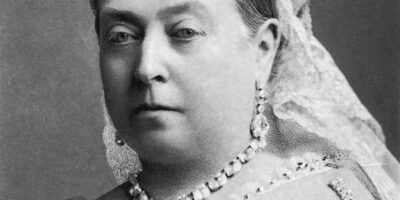
10 Things to Know About Queen Victoria’s Last Days and Death

Elizabeth I of England’s Death: Mysteries and Stories
1. discovery of penicillin.

2. Theory of Relativity

3. Discovery of the Structure of DNA

4. Theory of Evolution

5. Discovery of the Microscope

6. Development of the Periodic Table

7. Theory of Plate Tectonics

8. Discovery of the Higgs Boson

9. Theory of Quantum Mechanics

10. Discovery of Radioactivity

11. Determination of the Molecular Structure of Insulin

12. Discovery of the Neutron


13. Mapping the Human Genome

14. Development of CRISPR-Cas9 Gene Editing

15. Discovery of Black Holes

16. Identification of the Hubble Constant

17. Discovery of the Doppler Effect

18. Mapping the Brain

19. Discovery of the causal link between smoking and cancer

20. Confirmation of the Existence of Gravitational Waves

Planning a trip to Paris ? Get ready !
These are Amazon’s best-selling travel products that you may need for coming to Paris.
- The best travel book : Rick Steves – Paris 2023 – Learn more here
- Fodor’s Paris 2024 – Learn more here
Travel Gear
- Venture Pal Lightweight Backpack – Learn more here
- Samsonite Winfield 2 28″ Luggage – Learn more here
- Swig Savvy’s Stainless Steel Insulated Water Bottle – Learn more here
Check Amazon’s best-seller list for the most popular travel accessories. We sometimes read this list just to find out what new travel products people are buying.
Pamela is a writer with an insatiable wanderlust. Her storytelling captures the essence of every city, town, or hidden gem she researches or explores. With a background in literature, she diligently transports her readers to the heart of each destination. She writes for DW on numerous topics encouraging others to pack their bags and embark on their own adventures.
Hello & Welcome

Popular Articles

Top 20 Streets to See in Paris

Paris in two days

Top 15 Things to do Around the Eiffel Tower

The Best Way to Visit Paris Museums

Top 15 Fashion Stores in Le Marais
Visit europe with discover walks.
- Paris walking tours
- Montmartre walking tour
- Lisbon walking tours
- Prague walking tours
- Barcelona walking tours
- Private tours in Europe
- Privacy policy
© 2024 Charing Cross Corporation
We are a Parisian travel company so you will be getting tips on where to stay, what to see, restaurants and much more from local specialists!

No thanks, I’m not interested!

16 Groundbreaking Scientific Discoveries That Changed the World
Fred Miller | October 23, 2024 October 23, 2024 | Tech
Throughout history, certain scientific discoveries have transformed how we see the world. These breakthroughs reshaped entire fields and unlocked countless opportunities for innovation. They not only solved mysteries but also created the foundation for new technologies. Let’s dive into the discoveries that forever changed our understanding of the universe.
Theory of Relativity (Albert Einstein)
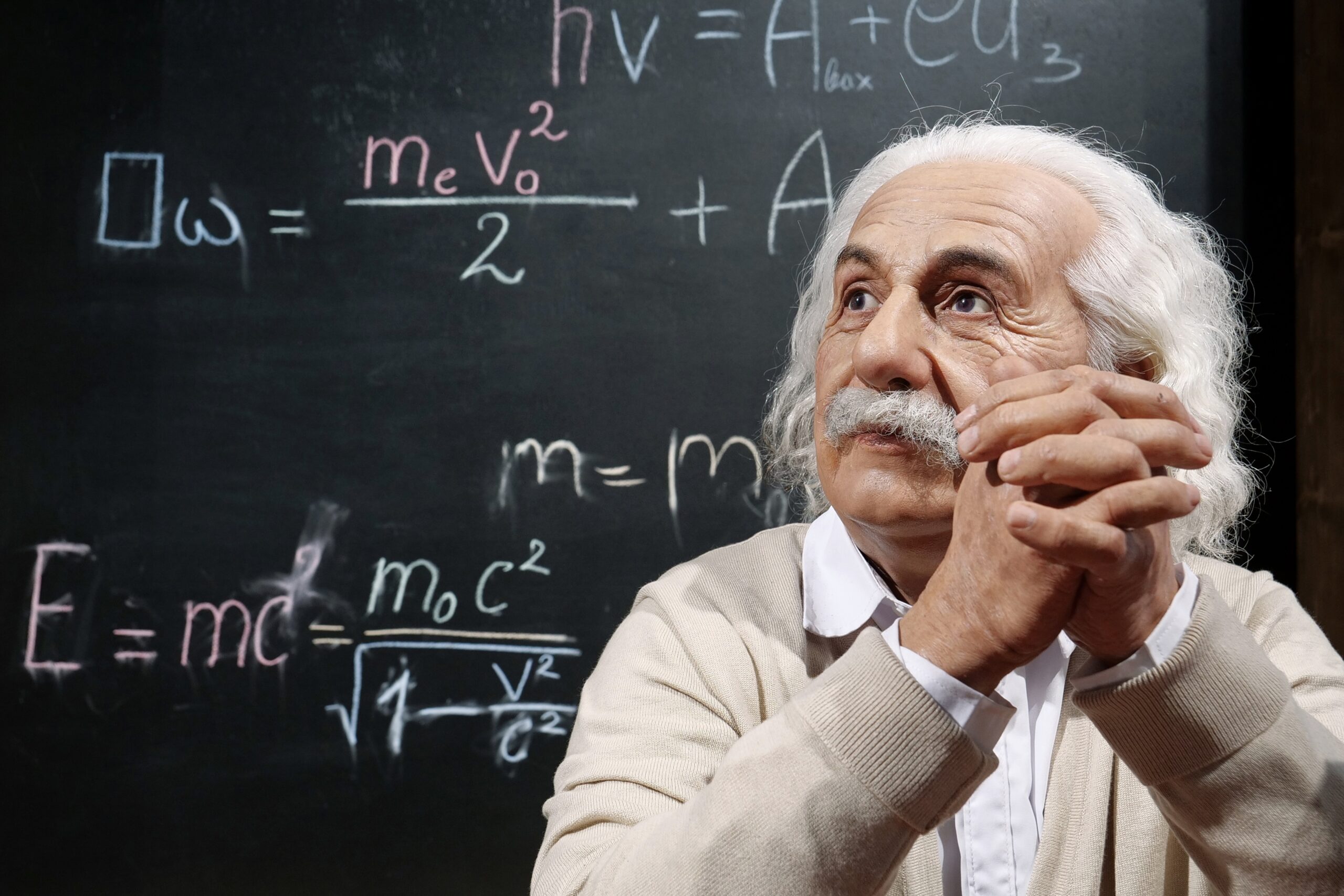
Albert Einstein’s theory of relativity, introduced in 1905 and expanded in 1915, changed our view of time, space, and gravity. It revealed that time and space are interconnected, and massive objects like planets bend spacetime. Special relativity explained that nothing can travel faster than light, leading to the famous equation E=mc². General relativity expanded on this, describing gravity as a warping of spacetime rather than a force. These ideas revolutionized physics and are essential for understanding everything from black holes to the expanding universe.
Discovery of Penicillin (Alexander Fleming)
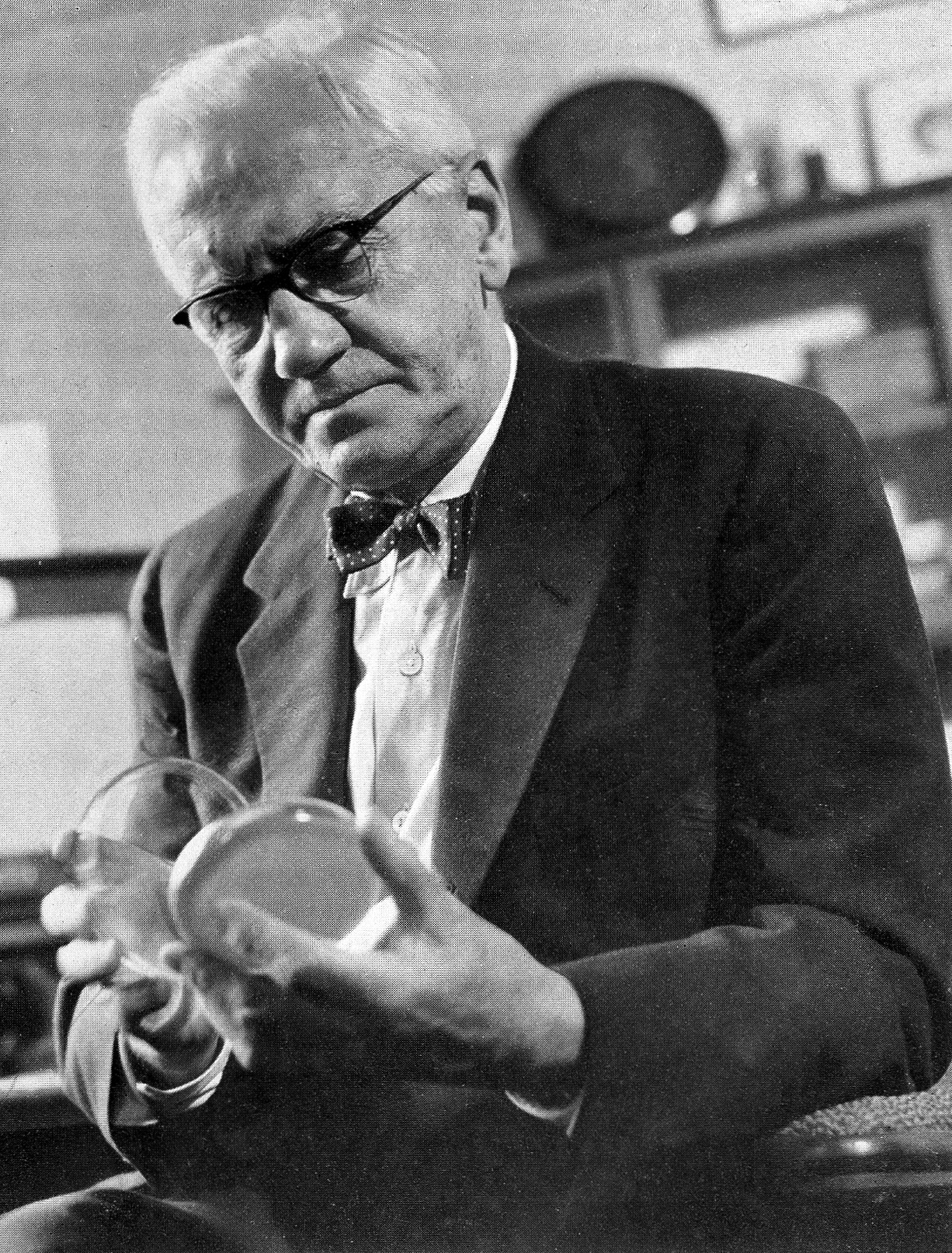
In 1928, Alexander Fleming discovered penicillin, the world’s first antibiotic. While studying bacteria, he noticed that mold, later identified as Penicillium notatum, had killed nearby bacteria in his petri dish. This discovery marked the beginning of modern antibiotics, revolutionizing medicine by enabling the treatment of bacterial infections. Before penicillin, infections like pneumonia or strep throat could be fatal. Fleming’s work paved the way for the development of more antibiotics, saving millions of lives and transforming medical treatments worldwide.
Laws of Motion and Universal Gravitation (Isaac Newton)
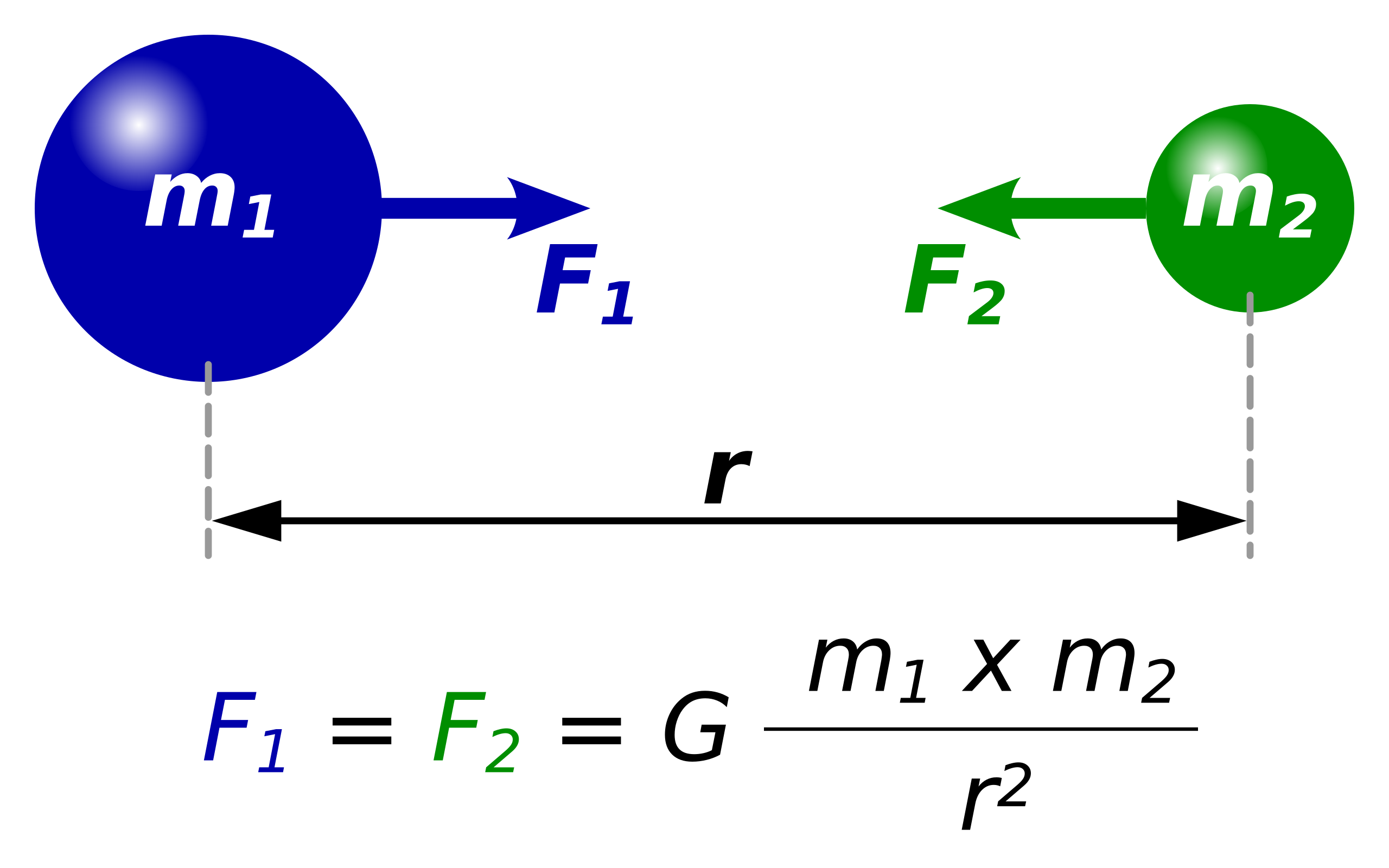
Isaac Newton’s laws of motion and universal gravitation, published in 1687, formed the foundation of classical physics. His three laws of motion describe how objects move when forces act on them, while the law of gravitation explains the attraction between masses. Newton’s work unified the understanding of forces on Earth and in space, showing that the same principles govern everything from falling apples to orbiting planets. These laws remain central to engineering, physics, and our understanding of the universe.
Germ Theory of Disease (Louis Pasteur, Robert Koch)
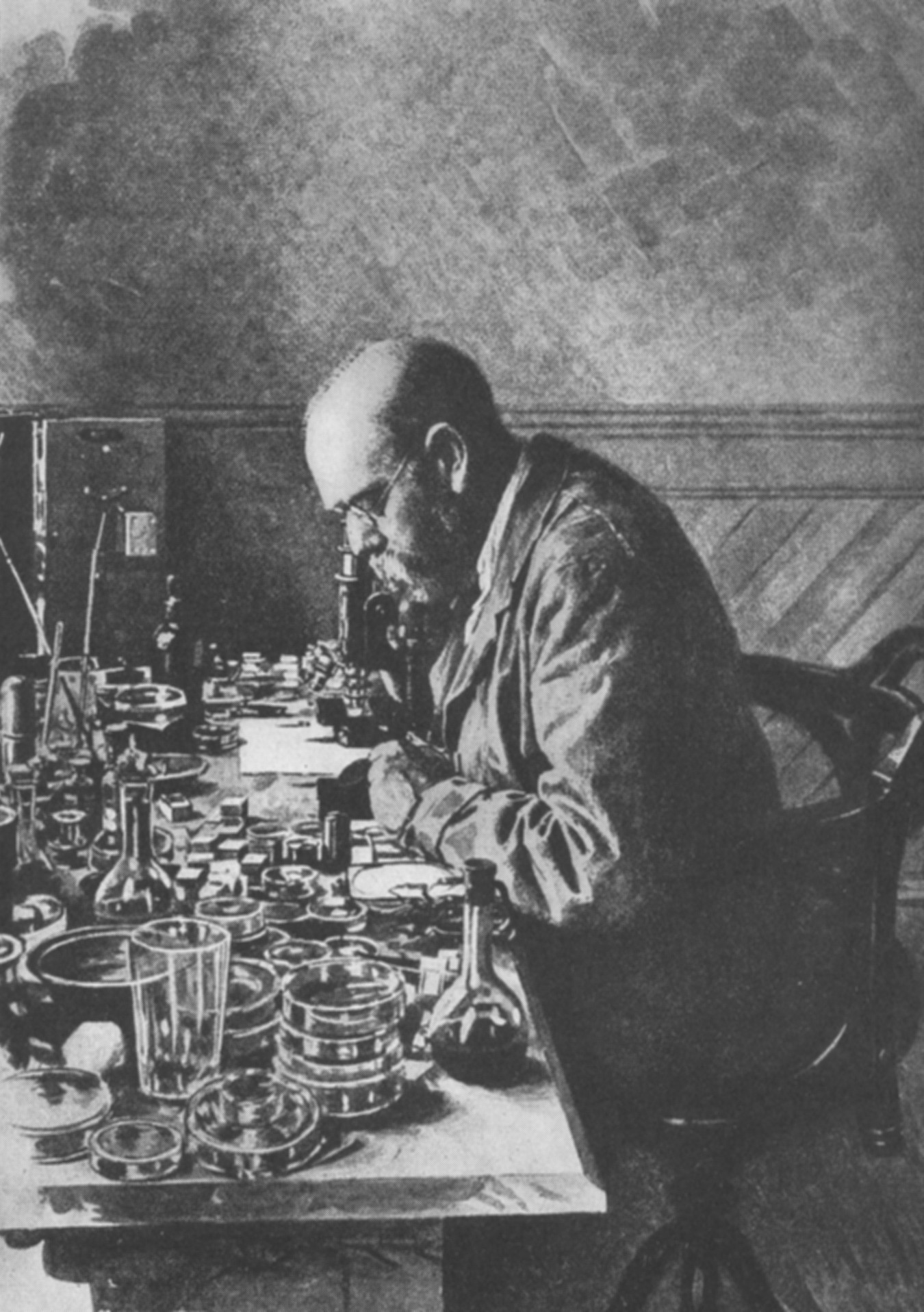
The germ theory of disease, developed by Louis Pasteur and Robert Koch in the 19th century, revolutionized medicine. It proved that microorganisms are the cause of many diseases, shifting the focus from “bad air” to pathogens like bacteria and viruses. Pasteur’s work in pasteurization and vaccines, along with Koch’s identification of disease-causing microbes, transformed public health. This discovery led to advancements in sterilization, hygiene, and vaccines, fundamentally changing how we prevent and treat diseases.
Evolution by Natural Selection (Charles Darwin)
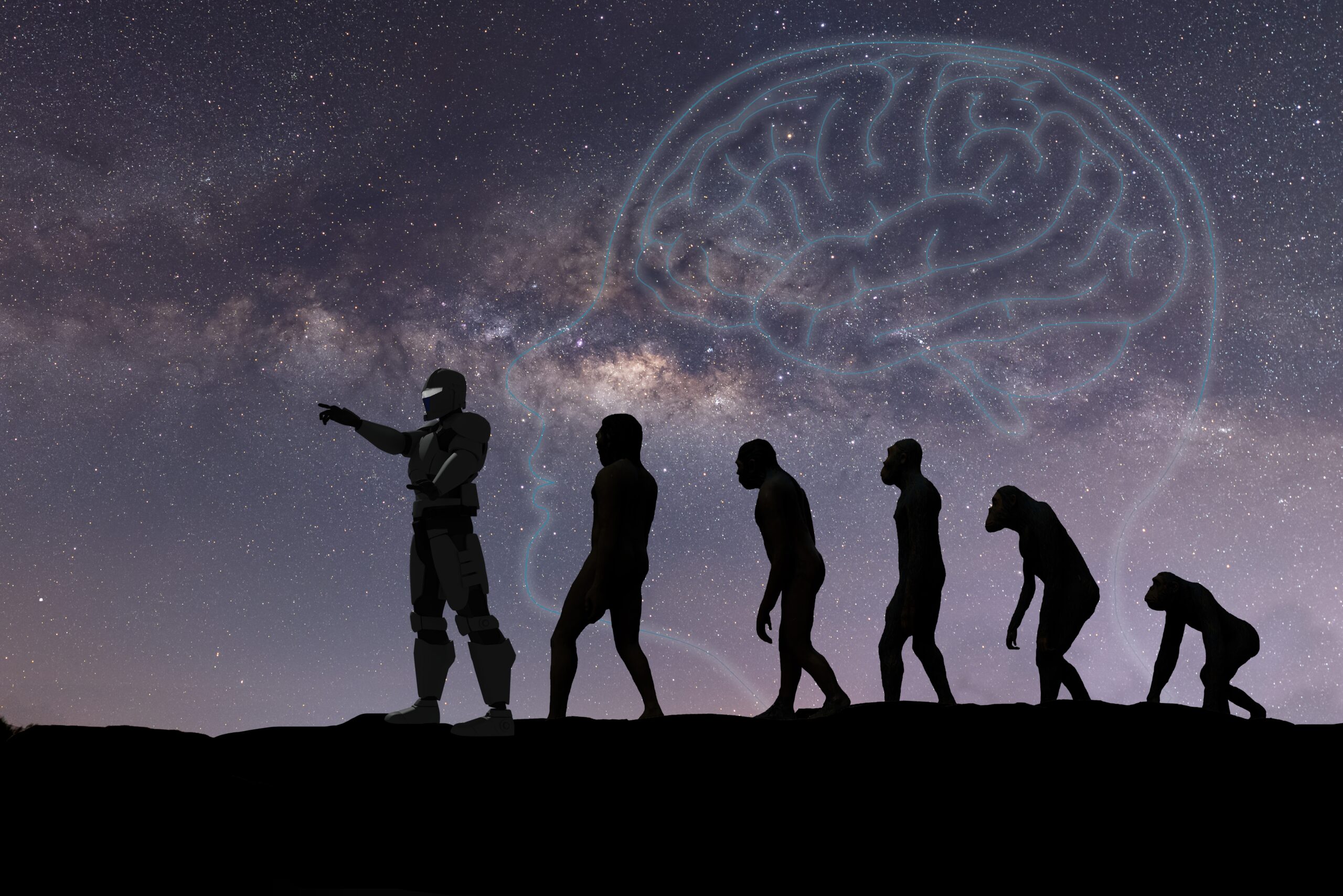
Charles Darwin’s theory of evolution by natural selection, introduced in 1859, explained how species change over time. Darwin proposed that individuals with traits better suited for survival in their environment pass those traits to future generations. This process drives the evolution of species. His work provided a scientific explanation for the diversity of life on Earth, challenging long-held beliefs. It laid the foundation for modern biology, influencing everything from genetics to ecology.
Quantum Mechanics (Max Planck, Werner Heisenberg)
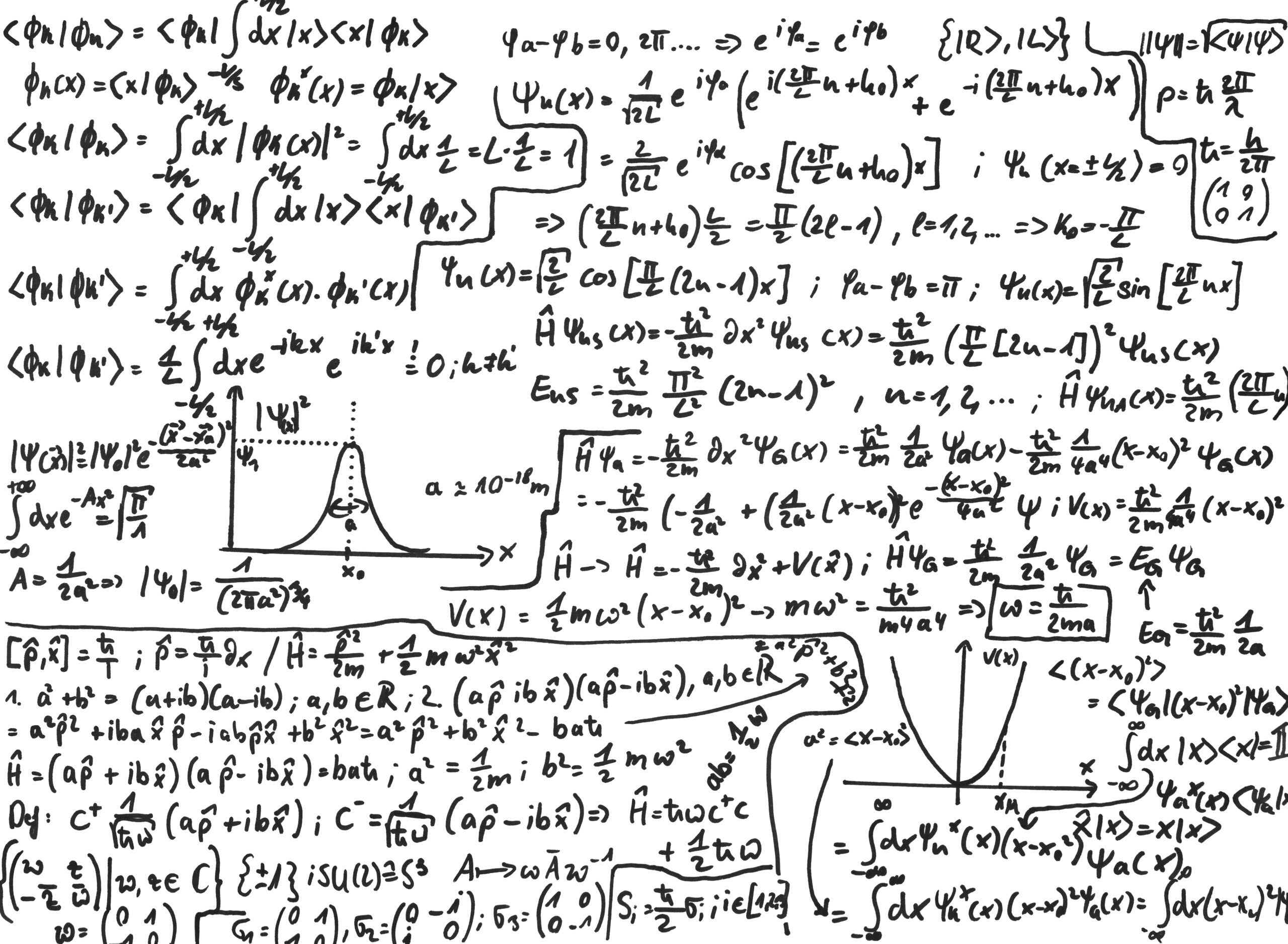
Quantum mechanics, developed by Max Planck, Werner Heisenberg, and others in the early 20th century, reshaped physics at the atomic level. This theory explains the behavior of particles like electrons, which act both as particles and waves. Planck introduced the idea that energy is quantized, while Heisenberg’s uncertainty principle stated that certain properties, like a particle’s position and momentum, cannot be known with absolute certainty. Quantum mechanics has paved the way for advancements in technology, including semiconductors and quantum computing.
The Heliocentric Model (Nicolaus Copernicus)
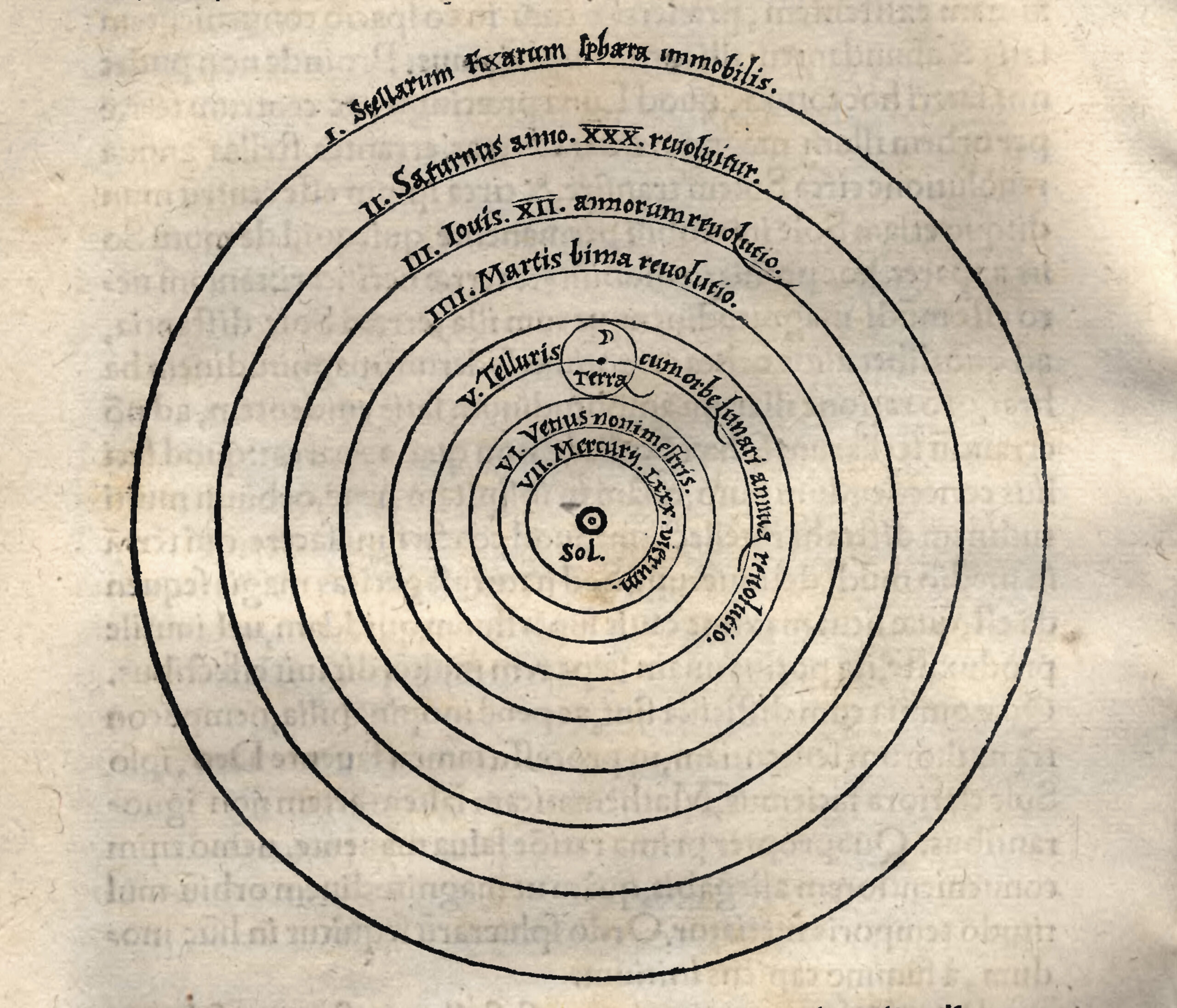
Nicolaus Copernicus’ heliocentric model, introduced in 1543, placed the Sun, not Earth, at the center of the solar system. This idea challenged the centuries-old belief that Earth was the center of the universe. Copernicus’ model simplified the explanation of planetary motion and marked a significant shift in astronomy. Although it faced resistance, it eventually led to further discoveries by scientists like Galileo and Kepler, helping to cement our understanding of the solar system and the universe.
The Periodic Table (Dmitri Mendeleev)
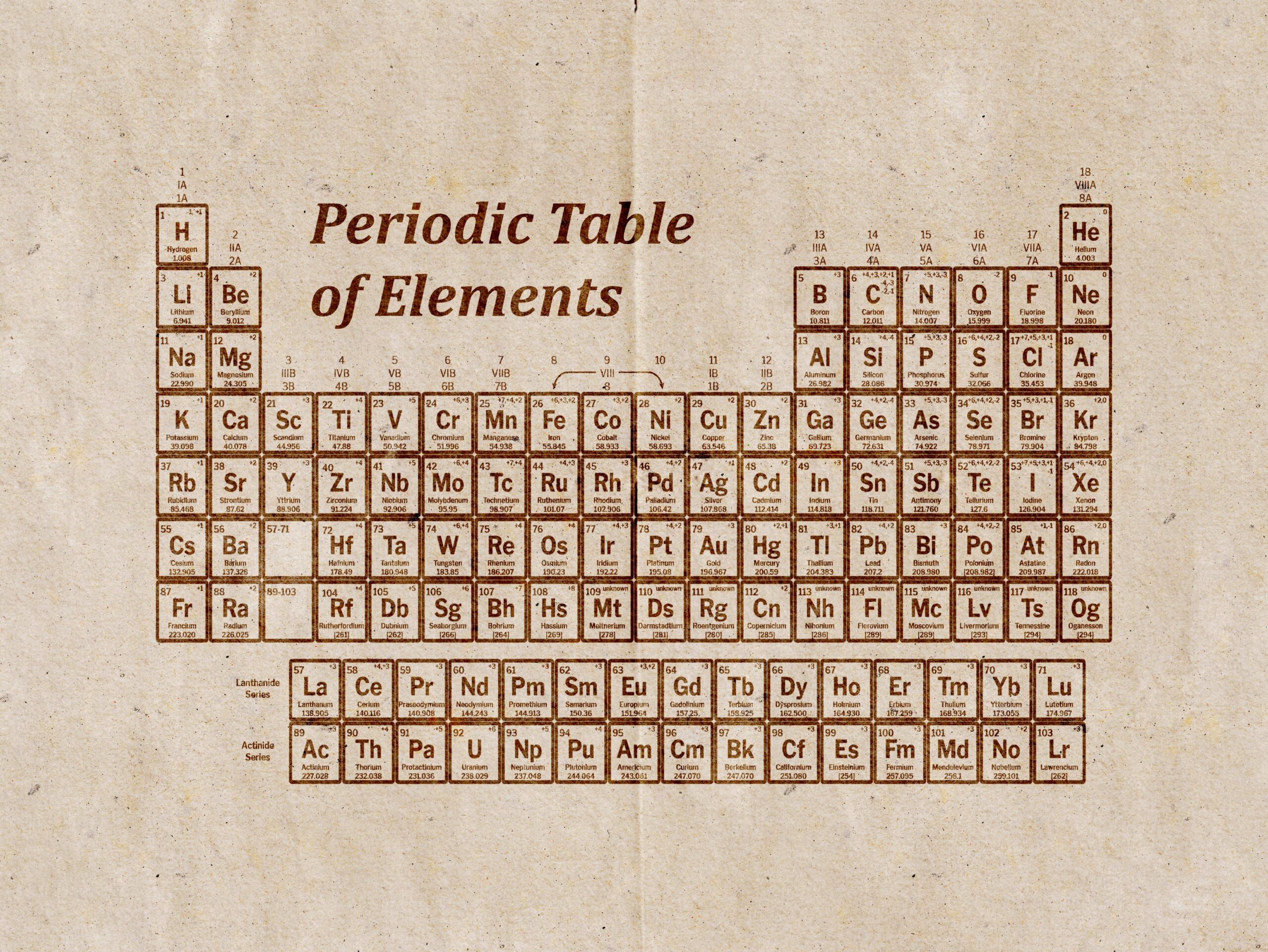
Dmitri Mendeleev’s periodic table, created in 1869, organized the known elements based on their atomic weights and properties. Mendeleev’s arrangement left gaps for elements that had not yet been discovered, and his predictions of these elements’ properties were remarkably accurate. The periodic table became an essential tool for chemists, helping to predict the behavior of elements and their compounds. It remains a cornerstone of chemistry, constantly evolving as new elements are discovered.
Electromagnetism (James Clerk Maxwell)
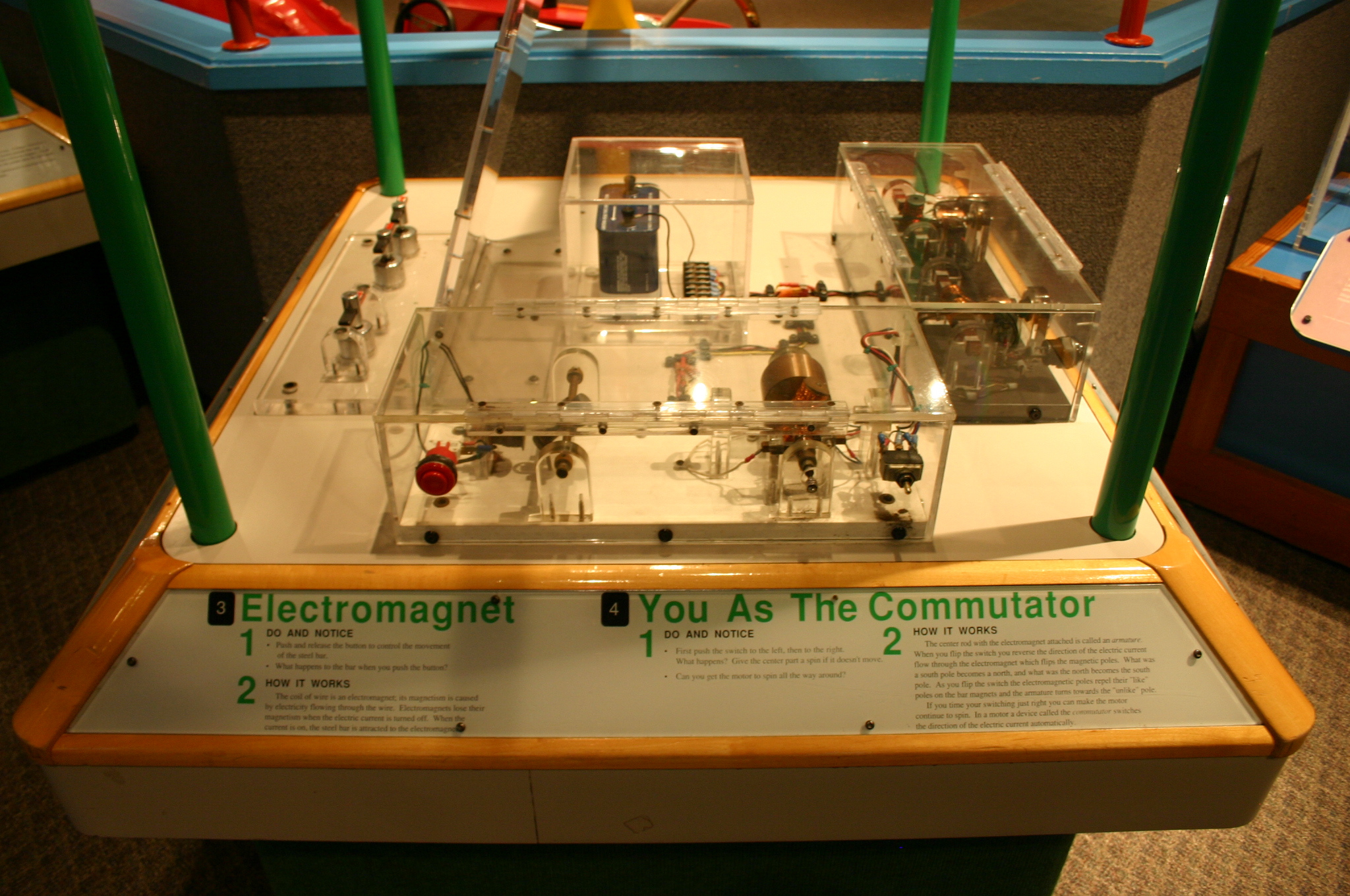
James Clerk Maxwell’s theory of electromagnetism, developed in the 19th century, unified electricity and magnetism into a single set of equations. His work showed that electric and magnetic fields travel as waves through space, giving rise to light and other forms of electromagnetic radiation. Maxwell’s equations laid the foundation for modern physics and telecommunications, impacting everything from radios to the development of wireless technologies. This discovery fundamentally changed how we understand the forces of nature.
The Big Bang Theory (Georges Lemaître)
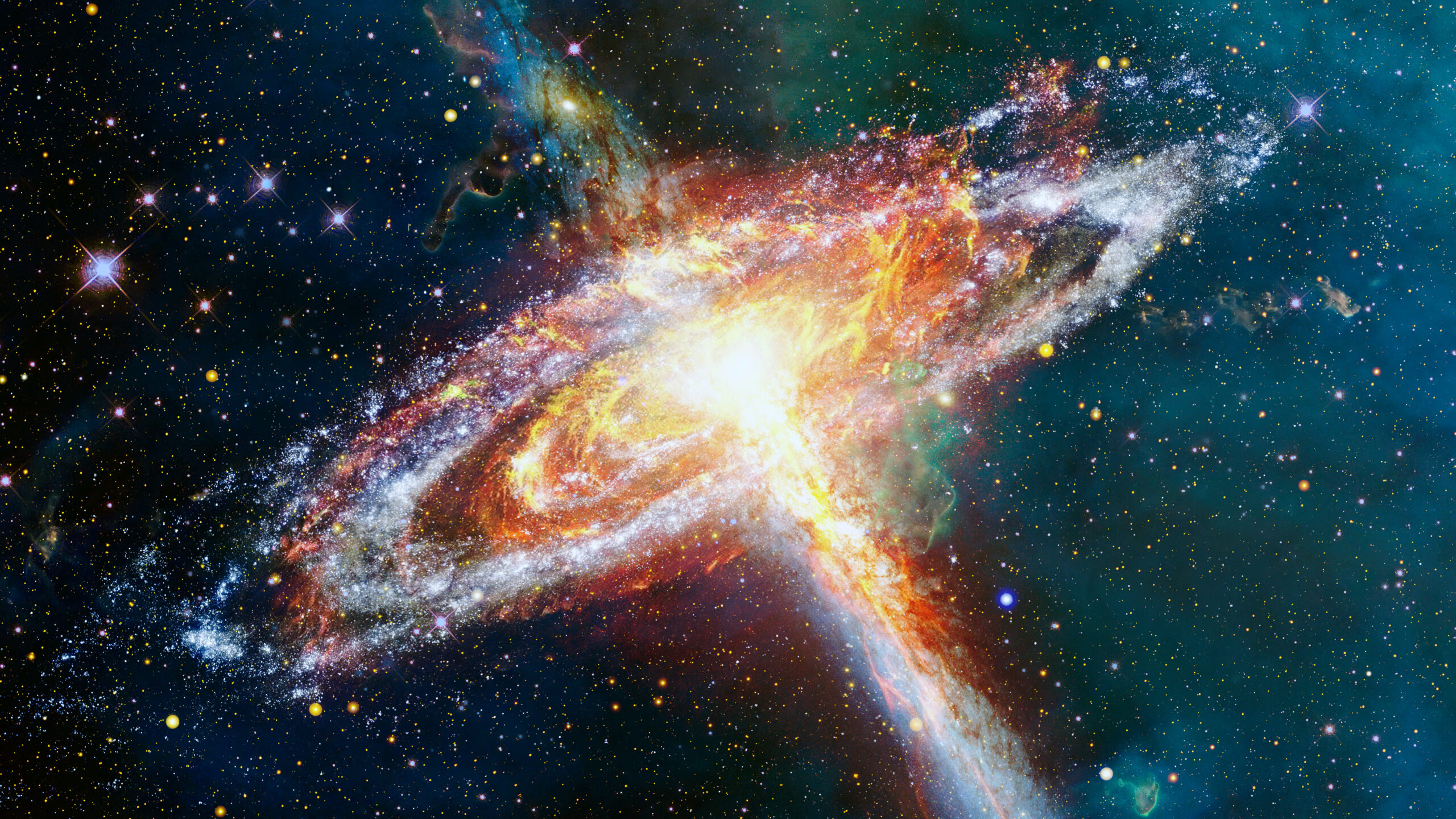
Georges Lemaître, a Belgian physicist, proposed the Big Bang theory in the 1920s, suggesting that the universe began from a single, dense point and has been expanding ever since. His work explained the observed redshift of galaxies, which supported the idea that the universe is growing. The Big Bang theory became the leading explanation for the origin of the universe, offering insights into the formation of galaxies, stars, and planets. Lemaître’s theory revolutionized cosmology and reshaped our understanding of the universe’s beginnings.
The Human Genome Project
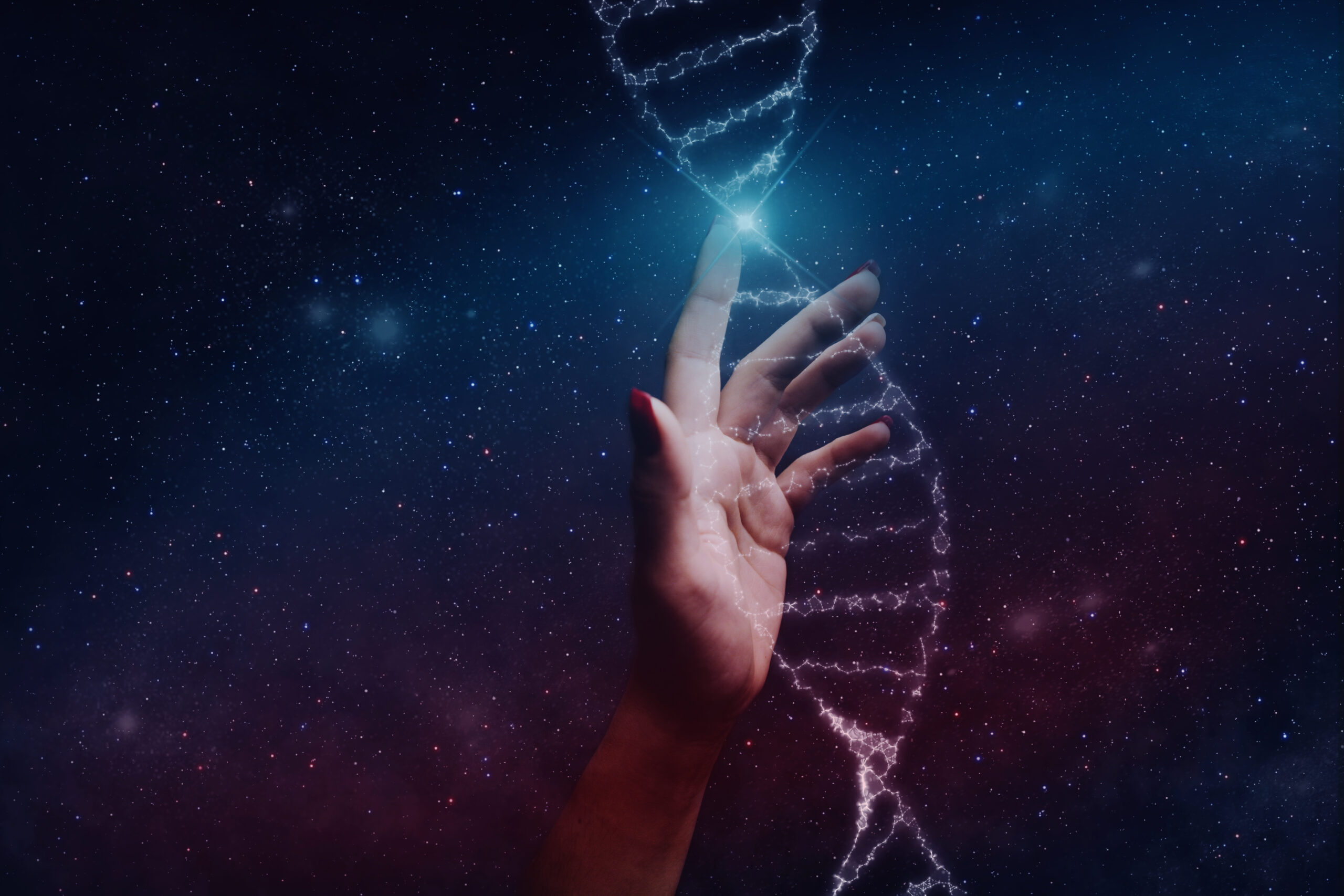
The Human Genome Project, completed in 2003, mapped the entire genetic code of humans, consisting of over 3 billion DNA base pairs. This international collaboration revealed the location and function of thousands of genes, providing new insights into hereditary diseases and human evolution. The project has paved the way for personalized medicine, allowing for targeted treatments based on a person’s genetic makeup. It was a monumental step in biology and medicine, opening doors to new research and medical advancements.
Plate Tectonics Theory (Alfred Wegener)
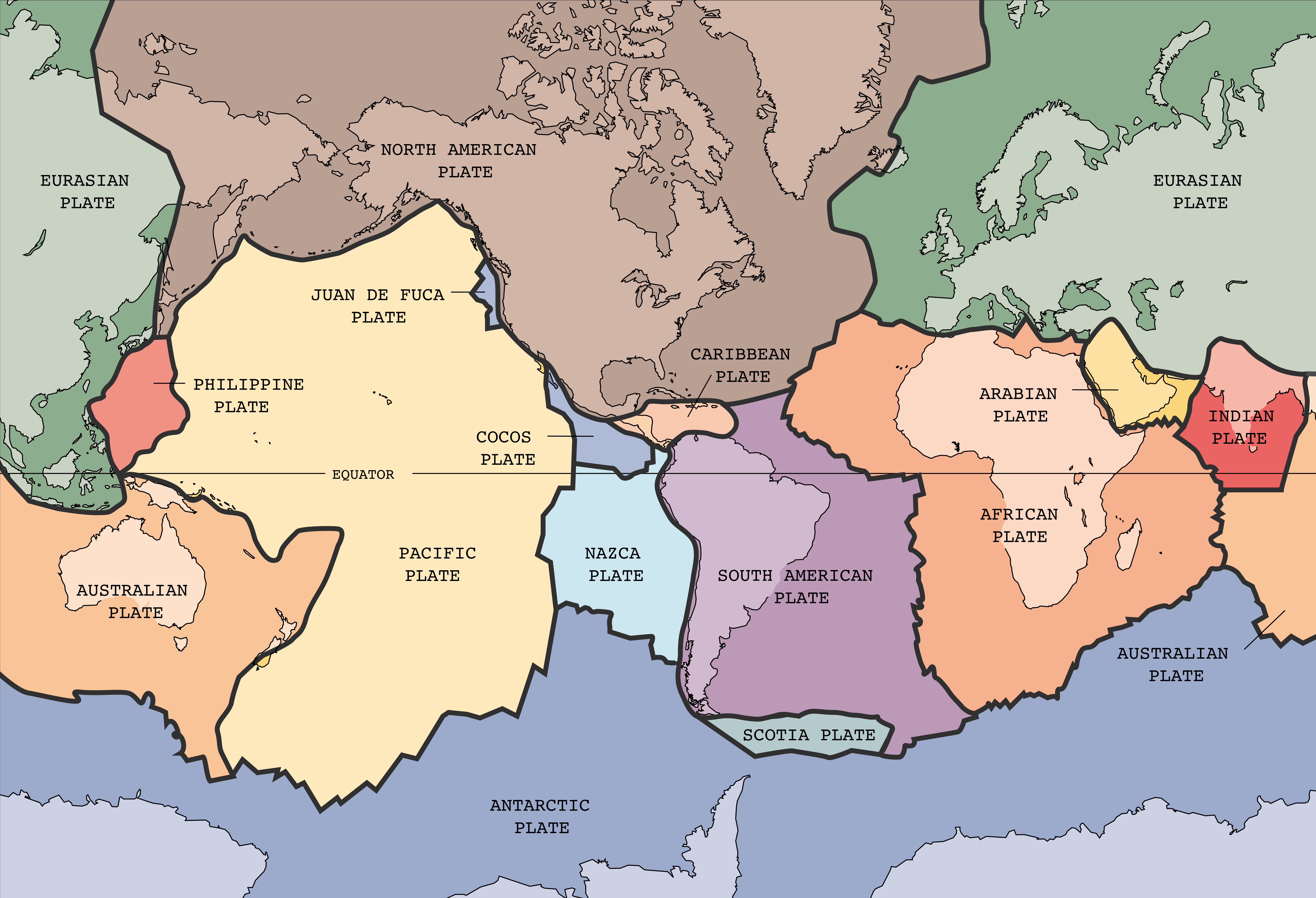
Alfred Wegener’s theory of plate tectonics, introduced in 1912, proposed that Earth’s continents move over time. Wegener suggested that the continents were once part of a supercontinent called Pangaea, which broke apart and drifted to their current positions. This theory explained phenomena like earthquakes, volcanic activity, and the formation of mountain ranges. Though initially controversial, plate tectonics is now the foundation of modern geology, giving scientists a better understanding of Earth’s dynamic processes.
Pasteurization (Louis Pasteur)
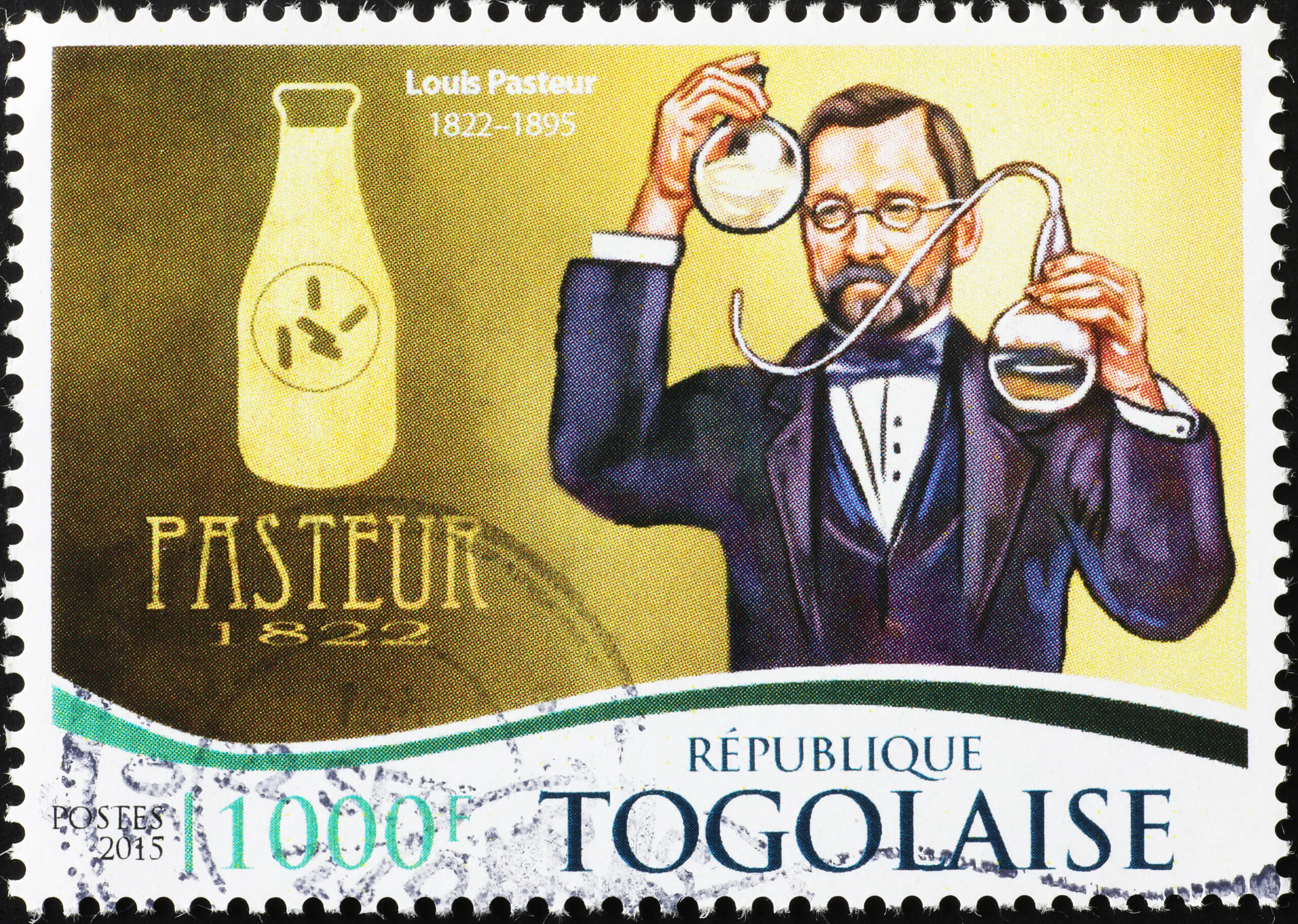
In the 19th century, Louis Pasteur developed the process of pasteurization to kill harmful bacteria in food and drinks, particularly milk. By heating liquids to a specific temperature and then cooling them rapidly, Pasteur made food safer to consume without compromising its nutritional value. This process has had a profound impact on public health, reducing the spread of diseases like tuberculosis and typhoid. Pasteurization remains a critical method in the food and beverage industry today.
Vaccination (Edward Jenner)

Edward Jenner’s discovery of vaccination in 1796 changed the course of medicine. By using material from cowpox to inoculate against smallpox, Jenner demonstrated that exposure to a less dangerous virus could protect against more severe diseases. His work laid the groundwork for modern immunology and has since saved millions of lives. Vaccination became a cornerstone of public health, leading to the eradication of smallpox and the prevention of many other infectious diseases.
X-rays (Wilhelm Roentgen)
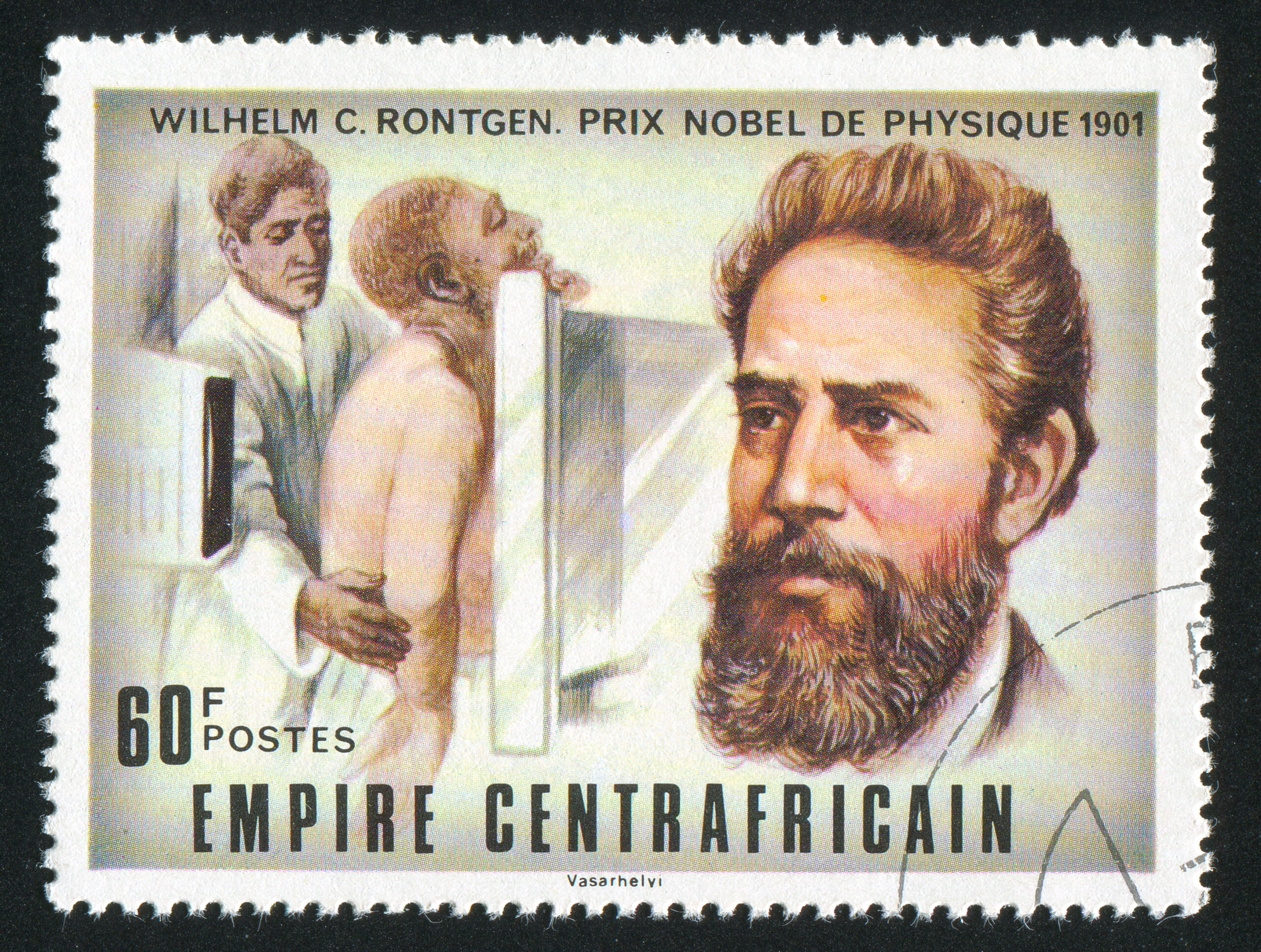
Wilhelm Roentgen’s discovery of X-rays in 1895 revolutionized medical diagnostics. Roentgen noticed that a new form of radiation could pass through solid objects and create images of bones and internal organs. This breakthrough allowed doctors to see inside the human body without surgery, greatly improving diagnostic techniques. X-rays became a vital tool in medicine, and Roentgen’s work laid the foundation for the development of other imaging technologies, such as CT scans and MRIs.
Radioactivity (Marie Curie)
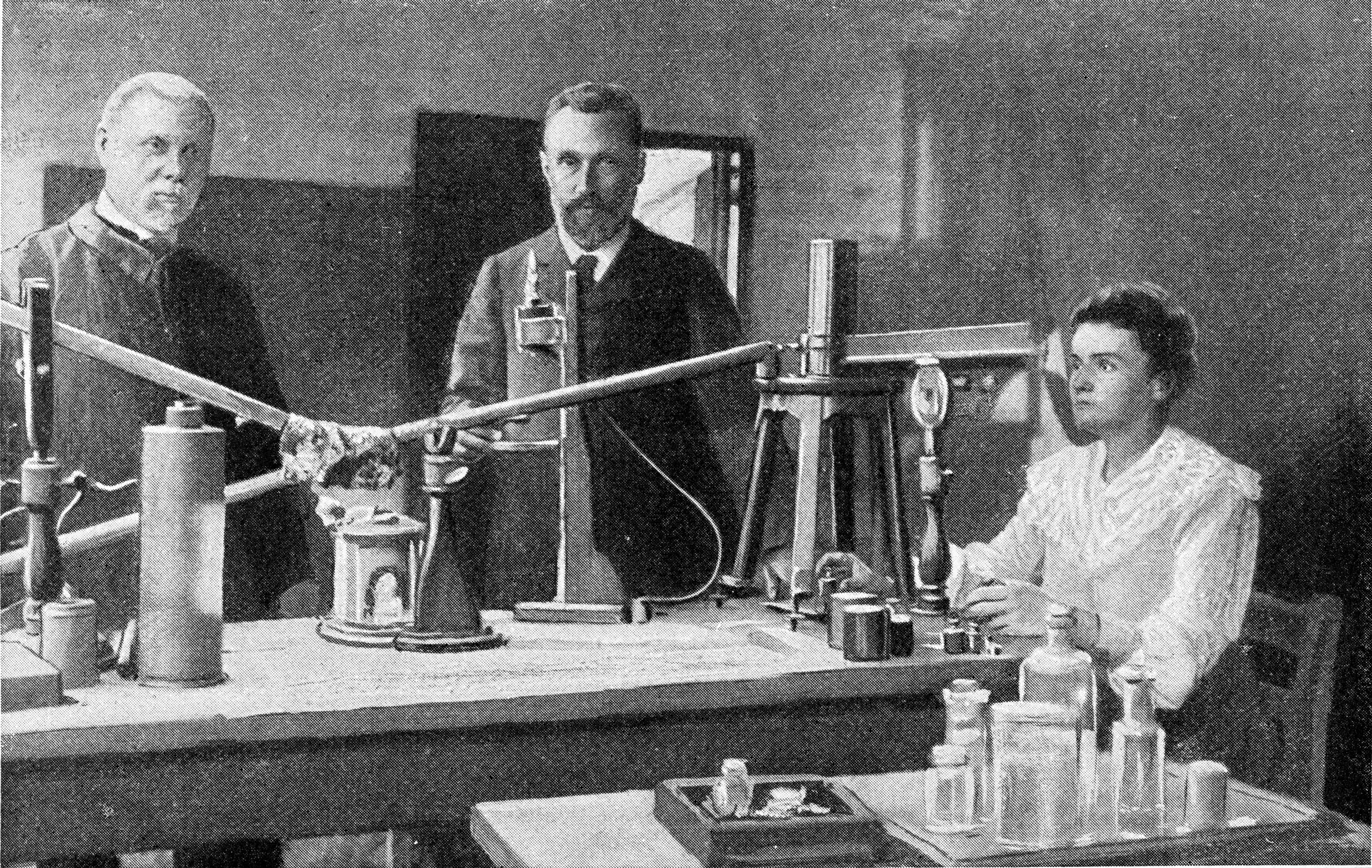
Marie Curie’s research on radioactivity in the late 19th and early 20th centuries was groundbreaking. Curie discovered two radioactive elements, polonium and radium, and showed that radioactivity is a property of certain atoms. Her work had far-reaching implications in physics, medicine, and nuclear science. Curie’s discoveries led to the development of cancer treatments, the use of radioactive isotopes in medical imaging, and advancements in nuclear energy. She remains one of the most influential scientists in history.
This article originally appeared on Rarest.org .
More from Rarest.org
7 Rare Vintage Puzzle Sets That Puzzle Enthusiasts Want

For puzzle enthusiasts, vintage sets offer more than just a fun challenge—they hold a sense of nostalgia and craftsmanship that modern puzzles often lack. Read More .
15 Prestigious Fountain Pen Brands Collectors Cherish

Fountain pens have long been treasured not only for their writing quality but also for their elegance and craftsmanship. Read More .
13 Overlooked Destinations in the Heart of Africa

Africa is home to some of the world’s most extraordinary and diverse landscapes, yet many of its hidden gems remain overlooked by travelers. Read More .
Fred Miller
17 largest islands in the world, 21 little-known forest creatures adapted to dense canopies, leave a comment cancel reply.
- Random article
- Teaching guide
- Privacy & cookies

by Chris Woodford . Last updated: January 6, 2023.
Photo: There are always new theories to test and experiments to try. Even when we've completely nailed how Earth works, there's still the rest of the Universe to explore! Fourier telescope experiment photo by courtesy of NASA .
1: Galileo demonstrates that objects fall at the same speed (1589)
Photo: Galileo proved that different things fall at the same speed.
2: Isaac Newton splits white light into colors (1672)
Artwork: A glass prism splits white light into a spectrum. Nature recreates Newton's famous experiment whenever you see a rainbow!
3: Henry Cavendish weighs the world (1798)
Artwork: Henry Cavendish's experiment seen from above. 1) Two small balls, connected by a stick, are suspended by a thread so they're free to rotate. 2) The balls are attracted by two much larger (more massive) balls, fixed in place. 3) A light beam shines from the side at a mirror (green), mounted so it moves with the small balls. The beam is reflected back onto a measuring scale. 4) As the two sets of balls attract, the mirror pivots, shifting the reflected beam along the scale, so allowing the movement to be measured.
4: Thomas Young proves light is a wave... or does he? (1803)
Artwork: Thomas Young's famous double-slit experiment proved that light behaved like a wave—at least, some of the time. Left: A laser (1) produces coherent (regular, in-step) light (2) that passes through a pair of slits (3) onto a screen (4). If Newton were completely correct, we'd expect to see a single bright area on the screen and darkness either side. What we actually see is shown on the right. Light appears to ripple out in waves from the two slits (5), producing a distinctive interference pattern of light and dark areas (6).
5: James Prescott Joule demonstrates the conservation of energy (1840)
Artwork: The "Mechanical Equivalent of Heat"—James Prescott Joule's famous experiment proving the law now known as the conservation of energy.
6: Hippolyte Fizeau measures the speed of light (1851)
Artwork: How Fizeau measured the speed of light.
7: Robert Millikan measures the charge on the electron (1909)
Artwork: How Millikan measured the charge on the electron. 1) Oil drops (yellow) are squirted into the experimental apparatus, which has a large positive plate (blue) on top and a large negative plate (red) beneath. 2) X rays (green) are fired in. 3) The X rays give the oil drops a negative electrical charge. 4) The negatively charged drops can be made to "float" in between the two plates so their weight (red) is exactly balanced by the upward electrical pull of the positive plate (blue). When these two forces are equal, we can easily calculate the charge on the drops, which is always a whole number multiple of the basic charge on the electron.
8: Ernest Rutherford (and associates) split the atom (1897–1932)
Artwork: Transmutation: When Rutherford fired alpha particles (helium nuclei) at nitrogen, he produced oxygen. As he later wrote: "We must conclude that the nitrogen atom is disintegrated under the intense forces developed in a close collision with a swift alpha particle, and that the hydrogen atom which is liberated formed a constituent part of the nitrogen nucleus." In other words, he had split one atom apart to make another one.
Artwork: In Rutherford's gold-foil experiment (also known as the Geiger-Marsden experiment), atoms in a sheet of gold foil (1) allow positively charged alpha particles to pass through them (2) as long as the particles are traveling clear of the nucleus. Any particles fired at the nucleus are deflected by its positive charge (3). Fired at exactly the right angle, they will bounce right back! While this experiment is not splitting any atoms, as such, it was a key part of the decades-long effort to understand what atoms are made of—and in that sense, it did help physicists to "split" (venture inside) the atom.
9: Enrico Fermi demonstrates the nuclear chain reaction (1942)
Artwork: The nuclear chain reaction that turns uranium-235 into uranium-236 with a huge release of energy.
10: Rosalind Franklin photographs DNA with X rays (1953)
Artwork: The double-helix structure of DNA. Photographed with X rays, these intertwined curves appear as an X shape. Studying the X pattern in one of Franklin's photos was an important clue that tipped off Crick and Watson about the double helix.
If you liked this article...
Don't want to read our articles try listening instead, find out more, on this website.
- Six Easy Pieces by Richard Feynman. Basic Books, 2011. This book isn't half as "easy" as the title suggests, but it does contain interesting introductions to some of the topics covered here, including the conservation of energy, the double-slit experiment, and quantum theory.
- The Oxford Handbook of the History of Physics by Jed Z. Buchwald and Robert Fox (eds). Oxford University Press, 2013/2017. A collection of twenty nine scholarly essays charting the history of physics from Galileo's gravity to the age of silicon chips.
- Great Experiments in Physics: Firsthand Accounts from Galileo to Einstein Edited by Maurice Shamos. Dover, 1959/1987. This is one of my favorite science books, ever. It's a great compilation of some classic physics experiments (including four of those listed here—the experiments by Henry Cavendish, Thomas Young, James Joule, and Robert Millikan) written by the experimenters themselves. A rare opportunity to read firsthand accounts of first-rate science!
Text copyright © Chris Woodford 2012, 2023. All rights reserved. Full copyright notice and terms of use .
Rate this page
Tell your friends, cite this page, more to explore on our website....
- Get the book
- Send feedback
10 Physics Experiments That Changed Our View Of the Universe
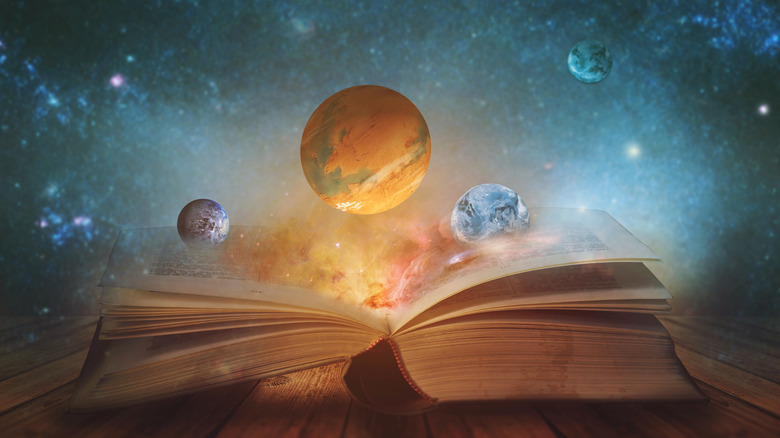
No one can question the impact of science on human civilization, and the importance of experimentation in science is equally undeniable. Some experiments confirm what we already know, others suggest a mechanism by which observed phenomena are driven.
For the latter type of experiment think of ancient Greek polymath Archimedes in the bathtub realizing that the displacement of water was directly related to the volume of an object placed in it, which legend suggests led to him running down the street naked yelling "Eureka!" — something we now know probably didn't happen.
Most scientific research is based on investigating "known unknowns" — scientists observe something, develop a hypothesis to be tested, and then design experiments to test this. But other experiments have a more profound effect on our understanding, suggesting things we had no idea about — the "unknown unknowns."
Throughout the history of science, there have been experiments in all the major disciplines that have delivered paradigm-shifting or even status quo-shattering results.
But when it comes to our understanding of the Universe arguably no field of science has delivered more results that fundamentally shifted our understanding of the universe than physics — encompassing astronomy, perhaps the earliest science, particle physics, nuclear physics, cosmology, and quantum mechanics. Some experiments are performed physically, while others are performed hypothetically in some of history's greatest minds.
These physics experiments fundamentally changed how we view the universe and our place within it.
The Earth moves from the center of the Universe
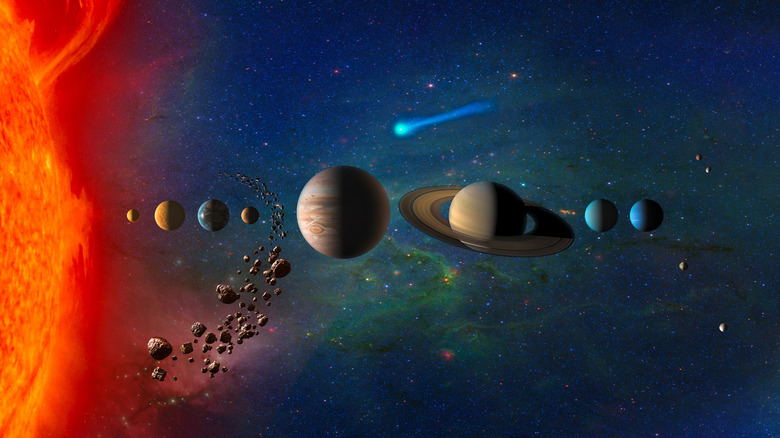
The idea that the Earth orbits the sun along with the rest of the planets may not seem particularly controversial, but the fact that we do not occupy a unique perspective or privileged position in the universe caused major waves in the 1600s when it finally began to gain traction.
Though the concept of a spherical Earth revolving around a "central fire" had planted the seeds of heliocentrism as early as the 5th Century BC via the musings of philosophers Philolaus and Hicetas, something extended upon by Aristarchus of Samos two centuries later, from the 2nd Century AD scientific thought had been dominated by the geocentric, or Earth-centered, theory of Claudius Ptolemy of Alexandria .
This would be the case for almost 1,400 years until the publication of Nicolaus Copernicus's De revolutionibus orbium coelestium libri VI or "Six Books Concerning the Revolutions of the Heavenly Orbs" in 1543, which put heliocentrism back on the table.
It was Italian natural philosopher, astronomer, and mathematician Galileo Galilei that would make the experimental steps that saw the so-called Copernican model of a sun-centric solar system eventually accepted as the accurate version of space at a local scale.
In 1610, using his telescope Galileo observed the planet Venus , discovering that it has phases just like the moon.
Galileo reasoned that these phases could only be explained by Venus going around the sun, upon occasion passing behind and beyond our star rather than revolving around the Earth.
The concept that the Earth was not the center of the cosmos would enrage the church which believed it contradicted scripture. This led to the inquisition process being brought against Galileo resulting in him being gagged against speaking on or writing about heliocentrism.
The nature of color: Netwon splits light

Though Sir Issac Newton's laws of motion and his contributions to the theory of gravity are widely regarded as his crowning achievements, the great passion of the author of Principia Mathematica was optics.
In the early 17th Century, when optics was growing as a field in physics with the development of instruments like the microscope, Newton decided to investigate the nature of light, in turn discovering how color arises.
The experiment devised by Newton to do this was devilishly simple. The physicist pushed a small pinhole through his blinds to allow a small beam of sunlight through. He found that when refracted by a prism this light changed into an oblong made up of different colors. Newton found that no matter the shape or size of the hole he cut and thus the shape of the beam of sunlight, the refracted light remains an oblong block of the same colors in the same order.
Even more surprisingly, he found that if he introduced a second black he could change the rainbow back into white light.
This showed white light from the sun was made of a miscellany of different colors. Delving deeper still, Newton found that red or blue light, when refracted by a prism, remained unchanged.
Perhaps the most important discovery this experiment yielded was the fact that the angle of the refraction of light depended on its color, the first hint that colors of light have their own frequency and wavelength.
To the heart of the atom: The Geiger-Marsden experiment

The concept of an atom — the point at which matter cannon longer be cut — dates back to the ancient Greeks, with the word itself derived from the Greek word "atomos" meaning "indivisible." Until 1897, scientists believed that atoms had no internal structure and were the smallest units of matter. That was before the discovery of a small negatively charged particle — the electron — by Joseph John Thomson.
In 1904, J.J Thomspon suggested that these particles were embedded in a positively charged substance much like fruit dispersed in plum pudding in his appropriately named plum-pudding model of the atom.
This model was overturned by the Geiger-Marsden experiment , also known as the gold foil experiment or the α-particle scattering experiments, pioneered by Ernest Rutherford and conducted by his protégés, Ernest Marsden and Hans Geiger.
Firing α-particles — which we now know are identical to a helium-4 nucleus — emitted by a radioactive source at a thin sheet of gold foil Rutherford reasoned that if the plum-pudding model of the atom was correct these traveling particles would experience the tiniest of deflections. This is due to the fact that an α-particle is about 7,000 times more massive than an electron.
The 1911 experiments showed that occasionally α-particles experienced a large deflection. While only one in 20,000 alpha particles had been deflected 45° or more this was enough to spark a major rethink of the atom and unveiled the presence of the atomic nucleus.
Rutherford compared the results to firing a 15-inch shell at a sheet of tissue paper and having it bounce back directly at you!
This revealed that the majority of the matter in an atom was concentrated at its center. Rutherford proposed a model of the atom with electrons orbiting a massive positively charged nucleus.
This model in time would be overturned, but it represented a vital step in discovering the proton and the neutron and unveiling atomic structure.
The Twin Paradox: Time is relative (so is space)
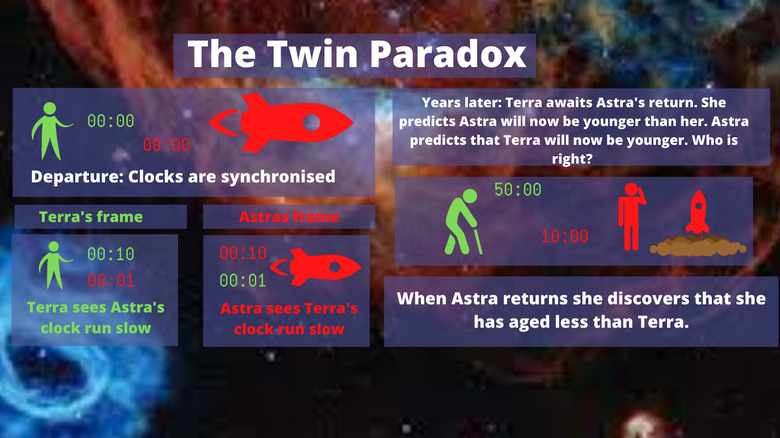
For Newton, the concept of space was fairly simple. A stage upon which the events of the Universe simply unfold. But, over the course of the first two decades of the 20th Century, Albert Einstein would shatter the notion of prosaic space, showing space itself to be a player in the events of the Universe, both directing the action and being influenced by other actors such as mass. This in itself would have been revolutionary, but Einstein didn't stop there, he showed time and space to be a single entity with the 4th dimension of time just as subject to change as space depending on the circumstance of the observer.
While Einstein became a master of the Gedankenexperiment — or thought experiment — to develop the theory of special and then general relativity, there is one thought experiment above all others that perhaps best exemplifies Einstein's groundbreaking approach to time, the so-called "twin paradox."
The twin paradox expresses the idea that "moving clocks run slow" and the concept of time dilation. It imagines twin sisters — Terra and Astra — the latter of whom blasts off from Earth in a rocket headed for a distant star system. Terra waits on Earth and from her reference frame, she will see Astra's moving clock running slow.
But, here's where the paradox element is introduced.
The paradox element

In Astra's reference frame, it isn't her clock that is moving, it's Terra's. That means she sees Terra's clock running slower than hers. So the question is, who is right? When the sisters meet up again upon Astra's return to Earth after many years, who is older?
The sisters discover that Terra has aged while Astra has retained her youth, and the reason for this is one of the key aspects of special relativity, it only applies to non-inertial reference frames — reference frames that don't accelerate. During Astra's trip through the cosmos, there are various times when she has to accelerate, which also includes changing directions.
The difference in age between Terra and Astra depends on factors such as her speed, how long she was away, and how many times she had to change speeds or directions.
The effect of time dilation is no longer restricted to thought experiments. Physicists have measured its effect on short-lived called Muons. When created by cosmic rays hitting the upper atmosphere these particles should exist for just 2.2 microseconds. Even when factoring in time dilation and the incredible velocity of muons–-0.98c or 98% the speed of light–-very few of these particles should survive long enough to strike the surface of our planet. But thanks to time-dilation, just like Astra retaining her youth, many of these particles do survive long enough to reach the surface of the planet.
What is light? The double-slit experiment
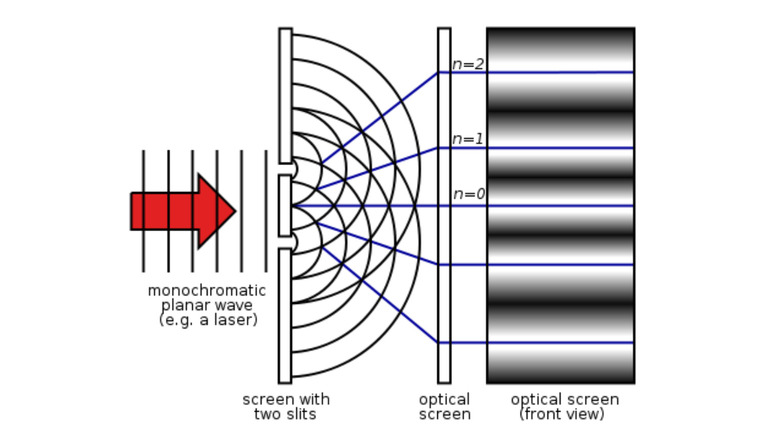
The splitting of light as it passed through a prism was the beginning of our investigation into this fundamental aspect of reality. For decades the argument raged amongst physicists as to whether light was a particle or wave. The double-slit experiment proved light is neither a particle, nor a wave, but has properties of both.
The double-slit experiment begins with monochromatic light — light of one wavelength and thus color — shining through two slits with a width separated by a distance similar to its wavelength.
As the wave passes through both slits, it splits into two new waves — just like water waves do as they encounter a rock. These two waves then interfere with each other, where a peak meets a trough, they will cancel each other out — so-called destructive interference. However, where a peak meets a peak the waves are reinforced — constructive interference — and the points with the brightest light.
On a second wall behind the screen, the light creates a stripy pattern, called an interference pattern. This demonstrates the wave nature of light, but there is more to this experiment.
If the light sent through the slits is reduced in intensity to one photon at a time, we see a particle-like distribution building on the screen. But, as the particles pile up, an interference pattern begins to build up like the photons are interfering with themselves.
This demonstrated that while a photon was detected as having the properties of a particle, interference unique to a wave appeared passing through the double-slit, thus revealing that the photon has properties of a particle and a wave.
Particle wave daulity in matter: The double-slit experiment part 2
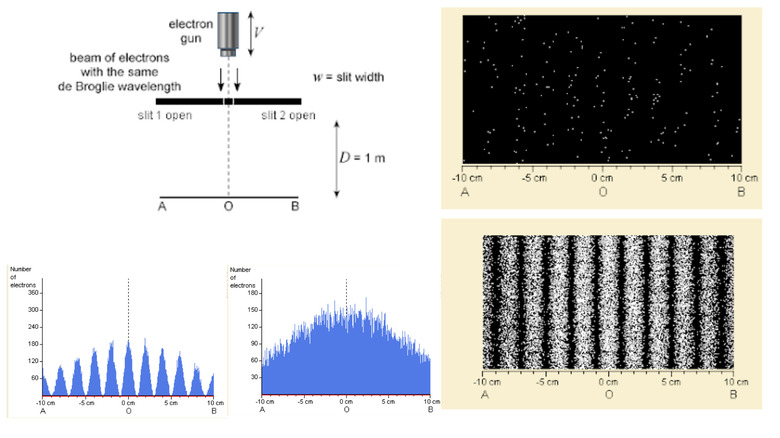
Physicists weren't done with the double-slit experiment. It had already revealed the particle-wave duality of light, but researchers were determined to run the experiment with another particle , replacing light with electrons — tiny negatively charged fundamental particles of matter.
Using an electron gun to fire particles through the double-slit portion to a fluorescent screen or another type of particle detector, the electrons seem to appear randomly.
As more electrons come through the slits, an interference pattern — bands of dark "hits" and light misses — develops just as we see with the photons implying that the electrons are traveling just like photons do — like waves.
This interference pattern disappears if the experiment is run again, but this time with one of the slits closed, which leads to a pile-up of hits on the screen just like we would expect with bullets.
Re-rerunning the experiment with both slits open and the electrons dripping through one at a time we find that the interference pattern begins to emerge again. This implies that like the photons the electrons are interfering with themselves as they pass through the double slits.
The consequence of this is we were forced to abandon the classic idea of a particle possessing a single defined trajectory through space. The particle can be considered passing through each slit causing constructive and destructive interference. It also shows that matter — like light — exhibits particle-wave duality .
Quantum Entanglement: Investigating spooky action at a distance
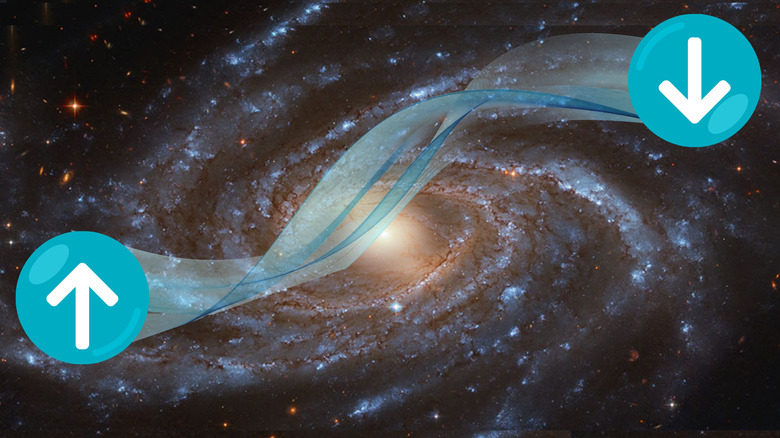
Any scientific phenomenon that stunned Albert Einstein must be revolutionary. The concept of entanglement is the idea that two particles can be linked in such a way that changing one instantly changes the other. But, what troubled Einstein was the fact that this change would happen instantaneously even if the particles are at opposite ends of the Universe.
This challenges the ideas in physics of local realism — the concepts that the cause of a physical change must be local and that the properties of objects are real and exist in our physical universe independent of our minds. These challenges led Einstein to describe entanglement as "spooky action at a distance" and resulted in him spending the last years of his life devising thought experiments that would show the theory of quantum physics was incomplete with hidden variables explaining the nature of entanglement.
A physical experiment would finally validate the non-local nature of entanglement. In the 1960s physicist, John Bell devised a test called Bell's Inequality to hunt for hidden variables.
The aim was to test three assumptions; locality, realism, and freedom of choice — the idea that physicists can make measurements freely without the influence of hidden variables. Experiments to test Bell's Inequality have shown that when particles are entangled, the outcomes of measurements are more statistically correlated than would be expected in non-quantum systems described by classical physics.
Most physicists believe that entanglement violates either the first or second principle of Bell's Inequality. What is certain is that a change in an entangled particle causes an instantaneous change in its partner.
The cat, the box, and the poison
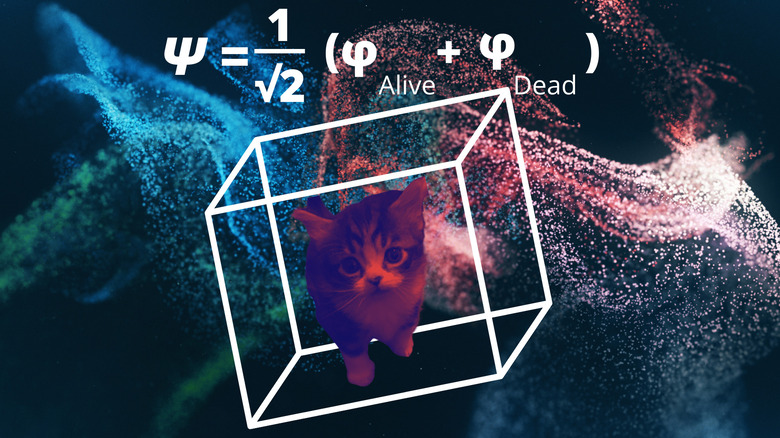
The rules of the subatomic world described by quantum physics are weird. Scientists would describe this as counterintuitive and perhaps one thought experiment above all others perfectly exemplifies this weirdness.
In quantum mechanics, the physics of the very small, possible states of a system is determined by wave functions that can overlap. This means that a quantum system modeled by waves can be described as existing in multiple states at one time — a superposition — with these states collapsing and taking a single value when measured or forced to interact with another system.
Part of what is known as the Copenhagen interpretation of quantum mechanics, Erwin Schrödinger wanted to show the flaws in this theory and inadvertently created one of the most talked-about thought experiments of all time — Schrödinger's cat.
Schrödinger suggested placing a cat in a box with a diabolical device — a vial of deadly poison that would break upon the decay of an atomic nucleus. Because the decay of an atom is a completely random process, there is no way of determining if this has happened without opening the box.
That meant that if we treat the box as a quantum system, Schrödinger's cat is in the ultimate superposition — being both dead and alive at the same time. The situation would only resolve upon the opening of the box when the wavefunction of the system collapses and the cat is found to be either dead or alive.
What is the Cosmic Microwave Background?
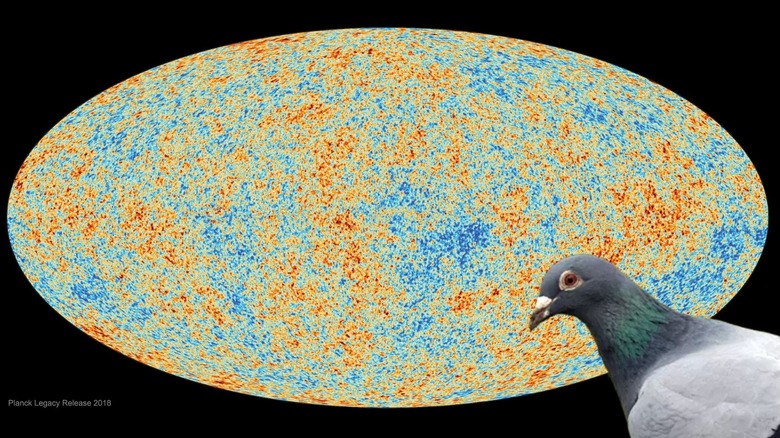
The cosmic microwave background (CMB) is radiation left over from an event shortly after the big bang called " the last scattering ." This was the point, around 14 billion years ago, at which the Universe had cooled enough to allow electrons to join protons to form the first atoms.
As a consequence of this, photons were no longer endlessly scattered by free electrons and were suddenly permitted to freely travel the Universe. In other words, the Universe went from opaque to transparent. Radiation from this point should have a uniform temperature and some by spread through the Universe in a highly-uniform way.
Until 1965, Bob Dicke and his Princeton University team had been diligently searching for evidence of this "cosmic fossil" frozen into the Universe. But, unbeknownst to them, another team, just 50 or so miles away in New Jersey had already detected the CMB, they just didn't know it yet.
Astronomers Arno Penzias and Robert Wilson were having problems with the Holmdel Horn Antenna – a microwave radio telescope and satellite communication system–at Bell Labs. The duo was attempting to use the sensitive instrument to search for hydrogen in the Milky Way but they were picking up the same buzz from all areas of the sky. The duo attempted to rid themselves of this "background noise" several times trying to limit everything that occurred to them that could be the cause of this static.
Diving deeper
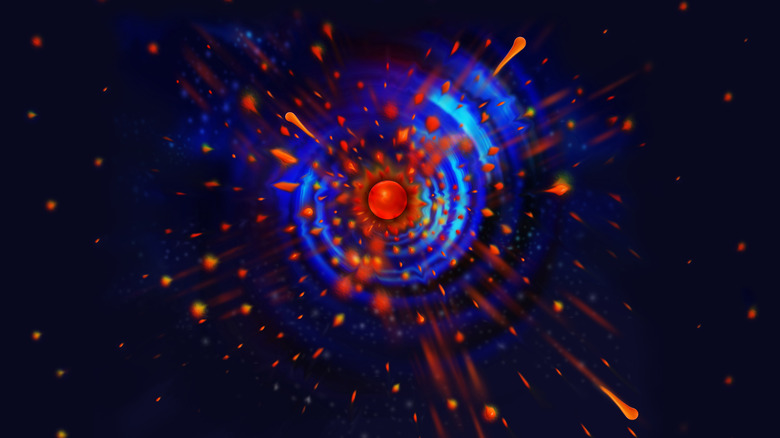
This involved eliminating badly insulated wires and even involved crawling into the horn-shaped antenna to remove what they described as "white dielectric material"–pigeon droppings to you and me–left by roosting birds. Penzias and Wilson finally determined that the signal was not coming from Earth. It was only when communicating with Dicke at Princeton that Penzias and Wilson realized what they had found. After a brief phone conversation with the Bell Labs team, Dicke's words to his team said it all: "Well, boys, we've been scooped."
Arno Penzias and Robert Wilson would share the 1978 Nobel Prize in Physics for their discovery of the CMB with Pyotr Leonidovich Kapitsa "for his basic inventions and discoveries in the area of low-temperature physics.
We now know the CMB fills the Universe with a uniform temperature of 2.7 K–less than three degrees above absolute zero, and at one point bits effects could be seen in every living room in the U.S. According to NASA , the CMB was "responsible for a sizeable amount of static on your television set–well, before the days of cable. Turn your television to an "in-between" channel, and part of the static you'll see is the afterglow of the big bang."
The CMB revealed conclusively that the Universe had undergone a period of rapid expansion in its early history confirming the Big Bang model of cosmology beyond doubt. But the expanding Universe was yet to deliver its greatest blow to our understanding of the cosmos.
What is dark energy? The Universe is expanding... and it's accelerating
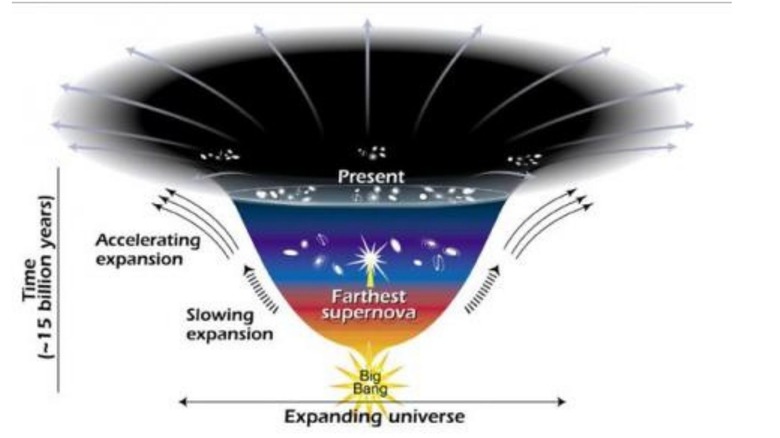
At the beginning of the 20th Century, Edwin Hubble discovered from the observed relation between distance and recession velocity of galaxies that the universe is expanding.
Until 1929 , and the publication of Hubble's short paper, "A relation between distance and radial velocity among extra-galactic nebulae," the common consensus in science was that the universe was static and unchanging. Albert Einstein had even added a factor called the cosmological constant — represented by the Greek letter Lambda — into his equations of the universe to ensure it remained static.
But, if this revelation was a surprise to the scientific community, the discovery in 1998 that this universal expansion is accelerating came as a complete shock. To see why this is, imagine giving a swing a push and then watching it gradually slow. As it is about to stop suddenly it begins to speed up again, accelerating despite no added force.
That's what the findings from astronomers that examined distant type Ia supernova — known as "standard candles" because of how their uniform light output makes them excellent distance measures — imply is happening with the Universe. Despite slowing after the initial rapid expansion of the Big Bang, the very fabric of space is again accelerating in its expansion.
This led to the introduction of " dark energy " as a placeholder for whatever force is driving this accelerating expansion. Independently confirmed since the initial supernova observations, NASA now estimates dark energy to account for 68 percent of the Universe's matter/energy content.
And the effect of dark energy is now described by the reintroduced cosmological constant — still represented by lambda — rescued from the science dustbin with a new purpose.
Infinite Worlds: Discovering exoplanets
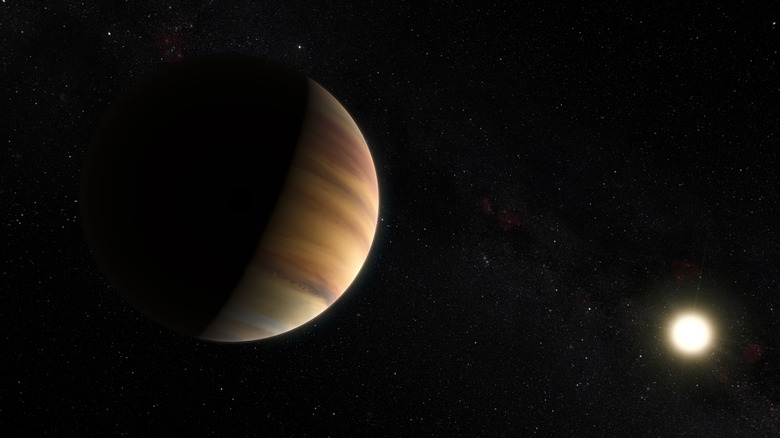
For as long as humanity has known that the stars are bodies just like the sun we have wondered about the planets that could orbit these distant stellar bodies and if they could potentially harbor life just as Earth does.
Yet, despite astronomy's long history and its status as arguably the first science, the discovery of the first planet outside the solar system — an extrasolar planet or exoplanet — would take until the end of the 20th century.
Two major "firsts" in terms of exoplanet discoveries both occurred in the 1990s. In January 1992 astronomers Dale Frail and Aleksander Wolszczan announced the discovery of two rocky planets and a possible third orbiting a pulsar — PSR B1257+12 — located almost 2,000 light-years from Earth.
Pulsars are rapidly rotating neutron stars and blast out powerful radiation, meaning that the three planets around PSR B1257+12 could not possibly support life.
The discoveries will continue

In 1995, Michel Mayor and Didier Queloz discovered 51 Pegasi b — a so-called hot Jupiter exoplanet so close to its star that it has a scorching hot surface temperature of 1,000–1,800 degrees Fahrenheit and completes an orbit in just four days.
The duo, who shared the 2019 Nobel Prize in Physics for the discovery, located the planet using a detection method called the radial velocity technique . This measures the tiny wobble that an orbiting planet causes in its host star. The tiny movement causes a slight shift in the wavelength of light emitted by the star.
This makes light from the star redder if it is tugged away, or bluer if it is tugged towards Earth, which astronomers can use to infer the presence of a planet.
Since the discovery of the first exoplanet humanity hasn't looked back. NASA's exoplanet catalog now numbers over 4,800 confirmed worlds beyond the solar system — a testament to the power of detection methods that can pinpoint the tiniest of signals.
Of these, NASA says 927 planets have been discovered using the radial velocity method. This makes it the second most successful exoplanet detection method after the transit method — which measures tiny dips in light as a planet passes across the face of its star — which has been used to find 3854 exoplanets according to NASA.
With the event of the James Webb Space Telescope (JWST) the golden age of exoplanet science has truly begun.
Recommended
20 Scientific Discoveries That Changed the World
by English Plus | Apr 9, 2023 | Science Spotlights

Introduction
Heliocentrism – the discovery that the sun is at the center of the solar system, not the earth, revolutionized our understanding of the universe..
- Newton’s Laws of Motion – Isaac Newton’s laws of motion provided a foundation for modern physics and allowed for the development of engineering and technology.
- Evolution by Natural Selection – Charles Darwin’s theory of evolution by natural selection explained how living organisms change over time and revolutionized our understanding of biology.
- Germ Theory – The discovery that diseases are caused by microorganisms like bacteria and viruses transformed medicine and public health.
- Quantum Mechanics – The development of quantum mechanics revolutionized our understanding of physics and led to many modern technologies.
- Electricity – The discovery of electricity and the development of electrical technology have transformed the world, from lighting to communication to transportation.
- Relativity – Albert Einstein’s theories of relativity revolutionized our understanding of space, time, and gravity.
- DNA Structure – The discovery of the double helix structure of DNA laid the foundation for modern genetics and our understanding of heredity.
- Periodic Table – The development of the periodic table of elements organized our understanding of the natural world and provided a basis for modern chemistry.
- Penicillin – The discovery of penicillin and other antibiotics transformed medicine and saved countless lives.
- Plate Tectonics – The theory of plate tectonics explained the movement of the Earth’s continents and revolutionized our understanding of geology.
- Atomic Bomb – The development of the atomic bomb during World War II led to the nuclear age and changed international politics and warfare.
- Vaccination – The development of vaccines has saved countless lives and eradicated many deadly diseases.
- MRI – The development of magnetic resonance imaging (MRI) transformed medical imaging and diagnosis.
- Universal Gravitation – Isaac Newton’s theory of universal gravitation explained the motion of celestial bodies and revolutionized our understanding of astronomy.
- The Big Bang – The discovery of the Big Bang theory explained the origins of the universe and led to many modern cosmological theories.
- Genetics – The study of genetics has led to many advances in medicine, agriculture, and biotechnology.
- Green Revolution – The development of new agricultural technologies and crop varieties led to the Green Revolution, which transformed global food production.
- Artificial Intelligence – The development of artificial intelligence and machine learning is transforming many fields, from finance to medicine to transportation.
- Climate Change – The discovery of anthropogenic climate change has transformed our understanding of the Earth’s environment and led to many efforts to reduce greenhouse gas emissions and combat global warming.
Throughout history, science has been the driving force behind some of the most significant changes in the world. From the discovery of electricity to the development of quantum mechanics, scientific breakthroughs have revolutionized our understanding of the universe and transformed the way we live our lives. In this article, we will explore the 20 scientific discoveries that changed the world, from the laws of motion to the structure of DNA. Each of these discoveries has played a critical role in shaping the world we live in today.

For centuries, people believed that the Earth was the center of the universe. It wasn’t until the 16th century that a revolutionary idea emerged: the sun, not the Earth, was at the center of the solar system. This idea, known as heliocentrism, was a major turning point in the history of science, and it transformed our understanding of the universe.
The idea of heliocentrism had been proposed by a number of ancient Greek philosophers, including Aristarchus of Samos. However, it wasn’t until the 16th century that a serious challenge to the geocentric model of the universe was mounted. In 1543, the Polish astronomer Nicolaus Copernicus published a book called “On the Revolutions of the Celestial Spheres” in which he presented a heliocentric model of the universe. According to Copernicus, the sun was at the center of the solar system, and the planets orbited around it in circular paths.
Copernicus’s ideas were not immediately accepted, and many people were deeply attached to the geocentric model of the universe. However, over time, more and more evidence began to accumulate in support of heliocentrism. One of the most significant pieces of evidence came from the observations of the Italian astronomer Galileo Galilei, who used a telescope to observe the moons of Jupiter. Galileo’s observations showed that the moons of Jupiter orbited around Jupiter, not the Earth, which was a powerful demonstration of the fact that not everything in the universe revolved around the Earth.
Despite the mounting evidence in support of heliocentrism, it took some time for the new model of the universe to gain acceptance. The Catholic Church, in particular, was resistant to the idea, as it challenged the traditional teachings of the church. In 1616, the Catholic Church banned the idea of heliocentrism, and Copernicus’s book was placed on the Index of Forbidden Books. Galileo was later tried by the Inquisition for his support of heliocentrism and was placed under house arrest for the rest of his life.
Despite the resistance it faced, heliocentrism eventually became the accepted model of the universe. Today, we know that the sun is at the center of the solar system, and the planets orbit around it in elliptical paths. This model has been supported by a wealth of evidence, including observations of the motions of the planets, the behavior of comets, and the study of the cosmic microwave background radiation.
The discovery of heliocentrism was a major turning point in the history of science. It challenged traditional ideas about the universe and revolutionized our understanding of our place in it. Today, we continue to build on the work of Copernicus, Galileo, and other pioneers of heliocentrism, exploring the mysteries of the universe and pushing the boundaries of human knowledge.
Newton’s Laws of Motion – Isaac Newton’s laws of motion provided a foundation for modern physics and allowed for the development of engineering and technology

Isaac Newton’s laws of motion are some of the most important and influential concepts in the history of science. These laws describe the behavior of objects in motion and provide a foundation for modern physics. They also played a crucial role in the development of engineering and technology.
Newton’s first law of motion states that an object at rest will remain at rest, and an object in motion will remain in motion, at a constant velocity, unless acted upon by an external force. This law describes the concept of inertia, which is the tendency of an object to resist changes in its motion. It also implies that force is necessary to change an object’s motion.
Newton’s second law of motion states that the force applied to an object is equal to the product of its mass and acceleration. This law provides a quantitative measure of force and is fundamental to the study of mechanics. It also allows for the calculation of the force required to produce a certain amount of acceleration.
Newton’s third law of motion states that for every action, there is an equal and opposite reaction. This law describes the relationship between two interacting objects and the forces they exert on each other. It is essential to understanding the behavior of systems with multiple interacting objects.
Together, Newton’s laws of motion provided a foundation for modern physics and allowed for the development of engineering and technology. These laws allowed engineers to calculate the forces required to move objects, build machines that could produce and control motion, and develop technologies like airplanes and automobiles.
For example, Newton’s laws of motion played a crucial role in the development of the steam engine. Engineers used the laws to calculate the amount of force required to move a piston and developed systems that could convert the motion of the piston into useful work. The steam engine revolutionized transportation, manufacturing, and other industries and paved the way for the development of modern technologies.
In addition to their practical applications, Newton’s laws of motion also had a profound impact on our understanding of the universe. They provided a framework for understanding the behavior of celestial bodies and allowed scientists to make accurate predictions about the motion of planets and other objects in space.
Overall, Isaac Newton’s laws of motion are one of the most important and influential concepts in the history of science. They provided a foundation for modern physics and allowed for the development of engineering and technology. Today, these laws continue to play a crucial role in our understanding of the universe and the technologies we rely on every day.
Evolution by Natural Selection – Charles Darwin’s theory of evolution by natural selection explained how living organisms change over time and revolutionized our understanding of biology

Charles Darwin’s theory of evolution by natural selection is one of the most important and influential ideas in the history of science. This theory explains how living organisms change over time and how new species emerge through a process of natural selection. Darwin’s theory of evolution revolutionized our understanding of biology and provided a foundation for the study of life on Earth.
Darwin’s theory of evolution by natural selection is based on the idea that living organisms are subject to variations or differences in traits. Some of these variations may be beneficial, allowing the organism to survive and reproduce more effectively in its environment. Over time, these advantageous traits become more common in the population, as organisms with these traits are more likely to survive and pass on their genes to their offspring.
The process of natural selection can lead to the formation of new species, as populations of organisms become isolated from each other and begin to diverge in their traits. This can lead to the development of new species that are better adapted to their environments.
Darwin’s theory of evolution by natural selection was a major departure from traditional ideas about the origin of species. Prior to Darwin, most scientists believed that species were created in their current form by a divine creator. Darwin’s theory challenged this idea and provided a naturalistic explanation for the diversity of life on Earth.
Darwin’s theory of evolution has been supported by a wealth of evidence, including the fossil record, comparative anatomy, and molecular biology. The fossil record shows the gradual changes in organisms over time, while comparative anatomy provides evidence for the evolution of structures with different functions from a common ancestor. Molecular biology has also revealed the relationships between different species based on their genetic code, providing further evidence for the evolution of species.
Darwin’s theory of evolution by natural selection has had a profound impact on our understanding of biology and the natural world. It has provided a framework for understanding the diversity of life on Earth and has led to many important discoveries in genetics, ecology, and other fields. It has also led to many practical applications, such as the development of new agricultural technologies and the understanding of the evolution of disease-causing organisms.
In conclusion, Charles Darwin’s theory of evolution by natural selection is one of the most important and influential ideas in the history of science. This theory has revolutionized our understanding of biology and the natural world and has led to many important discoveries and practical applications. Today, we continue to build on Darwin’s legacy, exploring the mysteries of life on Earth and pushing the boundaries of human knowledge.
Germ Theory – The discovery that diseases are caused by microorganisms like bacteria and viruses transformed medicine and public health

For much of human history, people believed that diseases were caused by supernatural forces, bad air, or other non-scientific explanations. It wasn’t until the late 19th century that the germ theory of disease emerged, which revolutionized our understanding of medicine and public health. This theory stated that diseases were caused by microorganisms like bacteria and viruses, and it provided a foundation for modern medical practice.
The germ theory of disease was developed by a number of scientists in the late 19th century, including Louis Pasteur, Robert Koch, and Joseph Lister. These scientists conducted experiments and made observations that demonstrated the role of microorganisms in causing diseases. They showed that infectious diseases like cholera, tuberculosis, and smallpox were caused by bacteria and viruses, and they developed techniques for preventing and treating these diseases.
One of the key discoveries of the germ theory was that diseases were caused by specific microorganisms. This allowed scientists to identify the specific pathogens responsible for different diseases and develop targeted treatments and vaccines. For example, the development of vaccines for diseases like smallpox, polio, and measles has saved countless lives and prevented the spread of these deadly diseases.
The germ theory also led to the development of new hygiene practices, such as hand washing and sterilization, which have become standard in modern medicine. These practices have reduced the spread of infectious diseases and have led to significant improvements in public health.
The impact of the germ theory of disease can be seen in the decline of mortality rates from infectious diseases in the 20th century. Prior to the discovery of germ theory, infectious diseases were a major cause of death, particularly in urban areas. However, the development of vaccines, antibiotics, and other treatments based on the germ theory has dramatically reduced the incidence and severity of infectious diseases.
Despite the significant advances made in medicine and public health as a result of the germ theory, there are still many challenges to be addressed. New diseases continue to emerge, and existing diseases are becoming more resistant to antibiotics and other treatments. However, the germ theory provides a framework for understanding the causes of these diseases and developing new treatments and preventive measures.
In conclusion, the discovery of the germ theory of disease transformed medicine and public health. This theory demonstrated that diseases are caused by microorganisms like bacteria and viruses, and it provided a foundation for targeted treatments, vaccines, and hygiene practices. Today, the germ theory continues to shape our understanding of infectious diseases and guide our efforts to prevent and treat them.
Quantum Mechanics – The development of quantum mechanics revolutionized our understanding of physics and led to many modern technologies

Quantum mechanics is one of the most revolutionary and fundamental fields of modern physics. It describes the behavior of particles on the atomic and subatomic scale and has led to many breakthroughs in technology, from transistors to lasers to medical imaging devices. Quantum mechanics has transformed our understanding of the universe and has opened up new possibilities for scientific discovery and technological innovation.
The development of quantum mechanics began in the early 20th century, with the work of scientists like Max Planck, Albert Einstein, and Niels Bohr. These scientists were trying to understand the behavior of light and matter on the atomic and subatomic level, where classical physics no longer applied. They discovered that particles like electrons and photons behaved like both waves and particles, and that their behavior was governed by probabilities rather than definite outcomes.
One of the key concepts in quantum mechanics is superposition, which states that a particle can exist in multiple states or locations simultaneously. This concept has led to the development of quantum computing, which takes advantage of the ability of particles to exist in multiple states to perform computations faster than classical computers.
Another important concept in quantum mechanics is entanglement, which describes the phenomenon where particles can become correlated in such a way that the state of one particle is dependent on the state of another, even if they are separated by great distances. This concept has led to the development of quantum cryptography, which uses the principles of quantum mechanics to create secure communication channels.
The development of quantum mechanics has also led to many practical applications in technology. For example, the development of the laser, which uses the principles of quantum mechanics to create a coherent beam of light, has revolutionized many fields, from telecommunications to medicine. Medical imaging technologies like magnetic resonance imaging (MRI) and positron emission tomography (PET) also rely on the principles of quantum mechanics.
In addition to its practical applications, quantum mechanics has transformed our understanding of the universe. It has led to the development of new theories of the behavior of matter and energy on the atomic and subatomic level, such as quantum electrodynamics and quantum field theory. These theories have allowed scientists to make accurate predictions about the behavior of particles and have led to many important discoveries, such as the discovery of the Higgs boson particle.
Overall, the development of quantum mechanics has revolutionized our understanding of physics and has led to many important technological and scientific breakthroughs. Today, quantum mechanics continues to be a field of active research and development, with the potential to transform many more areas of science and technology in the future.
Electricity – The discovery of electricity and the development of electrical technology have transformed the world, from lighting to communication to transportation

The discovery of electricity and the development of electrical technology have transformed the world in countless ways. From lighting to communication to transportation, electricity has become an essential part of modern life, and its impact can be felt in every corner of the globe.
The discovery of electricity can be traced back to the ancient Greeks, who discovered that rubbing fur on amber would cause it to attract lightweight objects like feathers. However, it wasn’t until the 18th and 19th centuries that scientists began to understand the nature of electricity and how it could be harnessed for practical use.
One of the key breakthroughs in the development of electrical technology was the invention of the battery by Alessandro Volta in 1800. This allowed for the storage of electrical energy and made it possible to use electricity for practical purposes. This was followed by the invention of the electric motor by Michael Faraday in 1821, which allowed for the conversion of electrical energy into mechanical energy.
The development of electrical technology has led to many practical applications, from lighting to communication to transportation. One of the earliest and most important uses of electricity was in lighting, with the invention of the incandescent light bulb by Thomas Edison in 1879. This allowed for the widespread adoption of electric lighting, which replaced the use of gas lamps and candles.
Electricity has also revolutionized communication, with the invention of the telegraph by Samuel Morse in 1837 and the telephone by Alexander Graham Bell in 1876. These inventions made it possible to communicate over long distances, and paved the way for modern telecommunications.
In transportation, the development of electric motors has led to the widespread adoption of electric vehicles, which are cleaner and more efficient than traditional gasoline-powered vehicles. Electric motors are also used in trains, elevators, and other forms of transportation.
The development of electrical technology has also had a profound impact on industry, allowing for the automation of manufacturing processes and the development of new materials and products. It has also led to the development of new technologies like computers and the internet, which have transformed the way we live and work.
Overall, the discovery of electricity and the development of electrical technology have transformed the world in countless ways. From lighting to communication to transportation, electricity has become an essential part of modern life, and its impact will continue to be felt for generations to come.
Relativity – Albert Einstein’s theories of relativity revolutionized our understanding of space, time, and gravity

Albert Einstein’s theories of relativity, first published in the early 20th century, revolutionized our understanding of space, time, and gravity. These theories challenged traditional notions of physics and opened up new avenues of research and discovery, from the study of black holes to the development of GPS technology.
Einstein’s theory of special relativity, published in 1905, fundamentally changed our understanding of space and time. The theory proposed that the speed of light is constant, regardless of the observer’s motion. This meant that time and space were not fixed and absolute, but rather were relative to the observer’s frame of reference. The theory also proposed that energy and mass were equivalent, and that the total amount of energy and mass in the universe was constant.
Einstein’s theory of general relativity, published in 1915, built on the ideas of special relativity and proposed a new understanding of gravity. According to general relativity, gravity is not a force between two objects, but rather a curvature of space-time caused by the presence of mass and energy. This theory explained many previously unexplained phenomena, such as the precession of Mercury’s orbit and the bending of starlight near massive objects.
The theories of relativity have led to many practical applications, from the development of nuclear energy to the study of black holes. The equations of relativity were used to develop the atomic bomb during World War II, and the principles of relativity are used in modern particle accelerators and other scientific instruments.
One of the most important applications of relativity is in the development of GPS technology. The GPS system relies on precise timing signals sent from satellites in orbit around the Earth. Because of the time dilation effects predicted by relativity, the clocks on the satellites must be adjusted to account for the different gravitational forces at their altitude compared to the Earth’s surface. Without the principles of relativity, the GPS system would not be accurate enough for many of its practical applications, such as navigation and surveying.
Overall, Albert Einstein’s theories of relativity revolutionized our understanding of space, time, and gravity. These theories challenged traditional notions of physics and opened up new avenues of research and discovery, leading to many practical applications and technological advancements. The principles of relativity continue to shape our understanding of the universe and guide our efforts to explore and understand it.
DNA Structure – The discovery of the double helix structure of DNA laid the foundation for modern genetics and our understanding of heredity

The discovery of the structure of DNA, the molecule that carries genetic information in living organisms, was a major breakthrough in the field of genetics. The discovery of the double helix structure of DNA by James Watson and Francis Crick in 1953 revolutionized our understanding of heredity and laid the foundation for modern genetics.
Prior to the discovery of the structure of DNA, scientists knew that genetic information was carried in cells, but they did not know how it was organized or transmitted. The discovery of the double helix structure of DNA provided a framework for understanding how genetic information is stored, transmitted, and expressed.
The double helix structure of DNA consists of two strands of nucleotides, each made up of a sugar, a phosphate group, and a nitrogenous base. The nitrogenous bases on each strand are complementary, with adenine pairing with thymine and guanine pairing with cytosine. This complementary base pairing allows for the accurate replication of DNA during cell division, ensuring that genetic information is passed on accurately from one generation to the next.
The discovery of the structure of DNA has had profound implications for many fields of science, from medicine to agriculture to biotechnology. The understanding of the structure of DNA has led to the development of techniques for manipulating and modifying DNA, such as genetic engineering and gene therapy.
The study of genetics has also led to many important discoveries about the role of genes in human health and disease. For example, the discovery of the genetic mutations that cause diseases like cystic fibrosis and Huntington’s disease has led to the development of new treatments and therapies for these conditions.
The understanding of the structure of DNA has also had important implications for the study of evolution and the diversity of life on Earth. By comparing the DNA sequences of different organisms, scientists can trace the evolutionary history of species and better understand the relationships between different groups of organisms.
In conclusion, the discovery of the double helix structure of DNA by James Watson and Francis Crick laid the foundation for modern genetics and our understanding of heredity. The understanding of the structure of DNA has had profound implications for many fields of science, from medicine to agriculture to biotechnology. Today, the study of genetics continues to be a field of active research and discovery, with the potential to transform many areas of science and medicine in the future.
Periodic Table – The development of the periodic table of elements organized our understanding of the natural world and provided a basis for modern chemistry

The periodic table of elements is one of the most important and fundamental tools in the field of chemistry. It organizes the elements based on their atomic structure and properties, and provides a framework for understanding the behavior of atoms and molecules.
The development of the periodic table began in the 19th century, with the work of scientists like John Newlands and Dmitri Mendeleev. These scientists were trying to understand the behavior of elements and how they related to each other.
Mendeleev was the first to organize the elements into a periodic table, which he published in 1869. His table arranged the elements in order of increasing atomic mass, and grouped them based on their chemical and physical properties. Mendeleev also predicted the existence and properties of elements that had not yet been discovered, based on gaps in the periodic table.
Today, the periodic table is a fundamental tool in the field of chemistry, and is used to predict the behavior of atoms and molecules in a wide range of applications, from materials science to drug discovery. The periodic table has also led to many important discoveries in the field of chemistry, from the development of new materials to the discovery of new elements.
One of the most important applications of the periodic table is in the study of chemical reactions. By understanding the properties of different elements and how they interact with each other, scientists can predict the outcome of chemical reactions and design new molecules and materials with specific properties.
The periodic table has also played a crucial role in the development of modern technology, from the production of semiconductors to the design of new pharmaceuticals. Many of the elements on the periodic table have important industrial applications, from the use of copper in electrical wiring to the use of platinum in catalytic converters.
Overall, the development of the periodic table of elements was a major milestone in the history of science, and has had a profound impact on our understanding of the natural world and the behavior of atoms and molecules. Today, the periodic table continues to be an essential tool in the field of chemistry, guiding research and discovery in a wide range of applications.
Penicillin – The discovery of penicillin and other antibiotics transformed medicine and saved countless lives

The discovery of penicillin, the first antibiotic, was a major breakthrough in the field of medicine. Before the discovery of antibiotics, bacterial infections were a leading cause of death, and there were few effective treatments for these infections.
The discovery of penicillin is credited to Alexander Fleming, a Scottish microbiologist who noticed that a mold growing in one of his petri dishes had killed the bacteria growing around it. He named the mold Penicillium and isolated the active ingredient, which he called penicillin.
Penicillin was first used to treat infections during World War II, and was quickly recognized as a life-saving treatment for a wide range of bacterial infections. The development of other antibiotics soon followed, and these drugs transformed medicine and saved countless lives.
Antibiotics work by targeting and killing the bacteria that cause infections. They do this by interfering with the bacterial cell wall or by disrupting other essential processes within the bacteria. This allows the body’s immune system to fight off the infection and heal more quickly.
The discovery of antibiotics had a profound impact on public health, allowing for the treatment of previously deadly infections like pneumonia, tuberculosis, and meningitis. It also had important implications for surgery, allowing for the use of antibiotics to prevent infections and improve patient outcomes.
However, the overuse and misuse of antibiotics has led to the development of antibiotic-resistant bacteria, which are a growing public health threat. The use of antibiotics in agriculture and animal husbandry has also contributed to the development of antibiotic-resistant bacteria.
Today, the development of new antibiotics is a major area of research and discovery, with the potential to transform the treatment of bacterial infections and save countless lives. The discovery of penicillin and other antibiotics is a testament to the power of scientific discovery and innovation in transforming the world and improving public health.
In conclusion, the discovery of penicillin and other antibiotics transformed medicine and saved countless lives. The development of antibiotics was a major breakthrough in the treatment of bacterial infections, allowing for the treatment of previously deadly diseases and improving public health. Today, the development of new antibiotics continues to be an important area of research and discovery, with the potential to further transform medicine and improve patient outcomes.
Plate Tectonics – The theory of plate tectonics explained the movement of the Earth’s continents and revolutionized our understanding of geology

The theory of plate tectonics is one of the most important and fundamental concepts in the field of geology. It explains how the Earth’s continents move and interact with each other, and provides a framework for understanding many geological phenomena, from earthquakes to volcanoes to mountain building.
The theory of plate tectonics began to emerge in the 20th century, with the work of scientists like Alfred Wegener and Harry Hess. Wegener proposed the theory of continental drift, which suggested that the Earth’s continents had once been joined together in a single supercontinent and had gradually moved apart over time. Hess proposed the theory of seafloor spreading, which explained how new oceanic crust was formed at mid-ocean ridges and gradually moved away from these ridges, carrying the continents with them.
The theory of plate tectonics combines these two theories, and explains how the Earth’s lithosphere, or outermost layer, is made up of a series of plates that move and interact with each other. These plates are constantly in motion, driven by the movement of the underlying mantle, and can move apart, collide, or slide past each other.
The movement of these plates has many important geological consequences, from the formation of mountains and oceanic trenches to the occurrence of earthquakes and volcanic eruptions. The theory of plate tectonics has also had important implications for the study of the Earth’s history, allowing scientists to understand how the Earth’s continents have moved and changed over time.
Today, the theory of plate tectonics is a fundamental concept in the field of geology, guiding research and discovery in a wide range of applications. It has important implications for many fields of science, from the study of earthquakes and volcanoes to the exploration of mineral resources.
In conclusion, the theory of plate tectonics explained the movement of the Earth’s continents and revolutionized our understanding of geology. The theory provides a framework for understanding many geological phenomena, from mountain building to the occurrence of earthquakes and volcanic eruptions. Today, the theory of plate tectonics continues to be an essential tool in the field of geology, guiding research and discovery in a wide range of applications.
Atomic Bomb – The development of the atomic bomb during World War II led to the nuclear age and changed international politics and warfare

The development of the atomic bomb during World War II was one of the most significant and controversial events in modern history. The bomb, which was developed as part of the Manhattan Project, was the first nuclear weapon to be used in warfare, and had a profound impact on international politics and military strategy.
The atomic bomb was developed in response to the threat of Nazi Germany developing its own nuclear weapons. The Manhattan Project, led by American physicist Robert Oppenheimer, brought together some of the world’s top scientists to develop the bomb, which was first tested in July 1945.
The atomic bomb was first used in warfare on August 6, 1945, when the United States dropped a bomb on the Japanese city of Hiroshima. The bomb killed an estimated 140,000 people, and led to Japan’s surrender a few days later. A second bomb was dropped on the city of Nagasaki on August 9, killing an estimated 70,000 people.
The development and use of the atomic bomb had a profound impact on international politics and military strategy. The bomb ushered in the nuclear age, and led to a new era of competition between the United States and the Soviet Union, known as the Cold War.
The threat of nuclear war shaped international politics for decades, and led to the development of nuclear arms control treaties and agreements. The use of nuclear weapons in warfare has been a topic of heated debate ever since, with many arguing that the use of nuclear weapons is never justified due to their devastating effects on human life and the environment.
The development of the atomic bomb also had important implications for science and technology. The development of nuclear energy led to the creation of nuclear power plants, which provide a significant source of energy in many parts of the world.
In conclusion, the development of the atomic bomb during World War II was a significant event in modern history, which changed international politics and warfare. The bomb ushered in the nuclear age and led to a new era of competition between major powers. The use of nuclear weapons in warfare has been a topic of heated debate ever since, and the development of nuclear energy has had important implications for science and technology.
Vaccination – The development of vaccines has saved countless lives and eradicated many deadly diseases

Vaccines are one of the most important and effective public health tools in human history. They have helped to prevent the spread of many deadly diseases, and have saved countless lives around the world.
The development of vaccines began in the late 18th century, when English physician Edward Jenner discovered that inoculating people with cowpox, a less severe disease, could protect them from smallpox, a deadly disease that had killed millions of people. Jenner’s discovery laid the foundation for the development of modern vaccines, and led to the eradication of smallpox in 1979.
Since Jenner’s discovery, vaccines have been developed to prevent a wide range of diseases, from polio and measles to influenza and COVID-19. Vaccines work by introducing a small amount of a disease-causing pathogen into the body, which stimulates the immune system to produce antibodies to fight the disease.
Vaccines have had a profound impact on public health, and have saved countless lives around the world. They have helped to eradicate deadly diseases like smallpox, and have dramatically reduced the incidence of many other diseases, like polio and measles.
However, the use of vaccines has also been a topic of controversy and debate. Some people are hesitant to vaccinate themselves or their children due to concerns about vaccine safety or efficacy. The spread of misinformation and anti-vaccine sentiment has also contributed to vaccine hesitancy in some communities.
Despite these challenges, vaccines remain one of the most important and effective tools in public health. They have the potential to prevent the spread of many deadly diseases and to save countless lives around the world.
In conclusion, the development of vaccines has saved countless lives and eradicated many deadly diseases. Vaccines are one of the most important and effective public health tools in human history, and have had a profound impact on public health around the world. While vaccine hesitancy remains a challenge, vaccines remain an essential tool in the fight against infectious diseases.
MRI – The development of magnetic resonance imaging (MRI) transformed medical imaging and diagnosis

Magnetic resonance imaging (MRI) is a medical imaging technique that uses powerful magnets and radio waves to create detailed images of the body’s internal structures. Since its development in the 1970s, MRI has revolutionized medical imaging and diagnosis, providing doctors with a non-invasive and highly accurate tool for diagnosing a wide range of conditions.
MRI works by using powerful magnets to align the protons in the body’s tissues, and then using radio waves to cause these protons to emit signals that are picked up by the MRI machine. These signals are then used to create detailed images of the body’s internal structures, including the brain, spinal cord, and internal organs.
The development of MRI has had a profound impact on medical diagnosis and treatment. It allows doctors to see inside the body without the need for invasive procedures like surgery, and provides highly detailed images that can reveal even subtle abnormalities or changes in the body’s tissues.
MRI is used to diagnose a wide range of conditions, from brain tumors and spinal cord injuries to joint problems and cardiovascular disease. It is also used to guide the treatment of these conditions, allowing doctors to plan and monitor surgical procedures or radiation therapy.
One of the most important benefits of MRI is its ability to detect diseases and conditions at an early stage, when they are most treatable. MRI can detect tumors and other abnormalities long before they cause symptoms, allowing doctors to intervene and begin treatment before the disease has a chance to progress.
Despite its many benefits, MRI has some limitations and risks. The strong magnetic fields used in MRI can be dangerous for people with certain types of metal implants, and the procedure can be expensive and time-consuming. However, these risks are generally outweighed by the benefits of MRI in diagnosing and treating a wide range of medical conditions.
In conclusion, the development of magnetic resonance imaging (MRI) has transformed medical imaging and diagnosis, providing doctors with a non-invasive and highly accurate tool for diagnosing and treating a wide range of conditions. MRI allows doctors to see inside the body without the need for invasive procedures, and provides highly detailed images that can reveal even subtle abnormalities or changes in the body’s tissues. Despite its limitations and risks, MRI remains an essential tool in modern medicine, and has the potential to improve patient outcomes and save lives.
Universal Gravitation – Isaac Newton’s theory of universal gravitation explained the motion of celestial bodies and revolutionized our understanding of astronomy

Isaac Newton’s theory of universal gravitation is one of the most important and fundamental concepts in the field of astronomy. It explains how all objects in the universe are attracted to each other, and provides a framework for understanding the motion of celestial bodies.
Newton’s theory of universal gravitation, published in his book “Mathematical Principles of Natural Philosophy” in 1687, states that every object in the universe is attracted to every other object by a force called gravity. The strength of this force is proportional to the mass of the objects and inversely proportional to the square of the distance between them.
This theory explained many of the observed phenomena in astronomy, including the motion of the planets around the sun, the orbits of comets, and the behavior of the moons of Jupiter. It also provided a theoretical foundation for the laws of motion that Newton had developed earlier, and helped to establish the field of classical mechanics.
Newton’s theory of universal gravitation revolutionized our understanding of astronomy, providing a unifying framework for understanding the motion of celestial bodies. It allowed astronomers to make more accurate predictions about the behavior of planets and other objects in the solar system, and laid the foundation for many of the discoveries that followed.
Today, the theory of universal gravitation remains an essential tool in the study of astronomy, guiding research and discovery in a wide range of applications. It has important implications for many fields of science, from the study of black holes and other exotic objects to the exploration of the origins of the universe itself.
In conclusion, Isaac Newton’s theory of universal gravitation explained the motion of celestial bodies and revolutionized our understanding of astronomy. The theory provides a unifying framework for understanding the behavior of planets, comets, and other objects in the solar system, and has important implications for many fields of science. Today, the theory of universal gravitation remains an essential tool in the study of astronomy, guiding research and discovery in a wide range of applications.
The Big Bang – The discovery of the Big Bang theory explained the origins of the universe and led to many modern cosmological theories

The Big Bang theory is the prevailing cosmological model for the observable universe, explaining how the universe began and evolved over billions of years. The theory states that the universe began as a singularity, an infinitely dense and hot point in space, and has been expanding and cooling ever since.
The Big Bang theory was first proposed in the early 20th century, based on observations of the expansion of the universe and the cosmic microwave background radiation. It was later refined with the discovery of cosmic microwave background radiation, a faint glow of radiation that fills the entire universe and provides evidence for the Big Bang.
The Big Bang theory has had a profound impact on our understanding of the universe and has led to many modern cosmological theories. It explains many of the observed phenomena in the universe, such as the cosmic microwave background radiation and the abundance of light elements, and has provided a framework for understanding the evolution of the universe.
One of the most important implications of the Big Bang theory is the concept of cosmic inflation, a period of rapid expansion of the universe that occurred shortly after the Big Bang. This period of rapid expansion explains many of the observed features of the universe, including its large-scale structure and the distribution of galaxies.
The Big Bang theory has also led to many important discoveries and advances in our understanding of the universe. It has provided a framework for the study of the origins and evolution of the universe, and has led to the development of many new technologies and observational techniques, including the Hubble Space Telescope and the Large Hadron Collider.
Despite its many successes, the Big Bang theory is not without controversy and open questions. Some physicists have proposed alternative theories, such as the steady-state theory or the cyclic model, which seek to explain the origins and evolution of the universe in different ways.
In conclusion, the discovery of the Big Bang theory explained the origins of the universe and led to many modern cosmological theories. The theory has had a profound impact on our understanding of the universe, providing a framework for the study of its origins and evolution. Despite ongoing debate and open questions, the Big Bang theory remains the prevailing cosmological model for the observable universe, guiding research and discovery in the field of cosmology.
Genetics – The study of genetics has led to many advances in medicine, agriculture, and biotechnology

Genetics is the study of genes, heredity, and variation in living organisms. The field of genetics has had a profound impact on our understanding of biology and has led to many important discoveries and advances in medicine, agriculture, and biotechnology.
The study of genetics began in the 19th century, with the work of Gregor Mendel, who discovered the principles of inheritance and the basic laws of genetics. Since then, advances in molecular biology and biotechnology have revolutionized our understanding of genetics and allowed us to study genes and their functions in much greater detail.
One of the most important applications of genetics is in the field of medicine. The study of genetics has helped us to understand the genetic basis of many diseases, from cystic fibrosis and sickle cell anemia to cancer and Alzheimer’s disease. This understanding has led to the development of many new diagnostic tests and treatments for these conditions, including targeted therapies and gene therapies.
Genetics has also had a significant impact on agriculture, allowing us to breed crops and livestock for specific traits and to increase food production. The study of genetics has helped us to develop crops that are more resistant to pests and diseases, that have improved nutritional profiles, and that can be grown in a wider range of environments.
In biotechnology, genetics has been instrumental in the development of new drugs, vaccines, and other medical treatments. It has also led to the development of new technologies, such as genetic engineering and gene editing, which have the potential to transform many fields of science and medicine.
Despite the many benefits of genetics, the field is not without controversy and ethical concerns. Issues like genetic testing and genetic modification raise questions about privacy, informed consent, and the potential unintended consequences of manipulating genes.
In conclusion, the study of genetics has led to many advances in medicine, agriculture, and biotechnology. The field has revolutionized our understanding of genes and their functions, and has provided us with important tools and techniques for understanding and manipulating genes. Despite ongoing ethical debates and concerns, genetics remains an essential field of study with the potential to improve human health and well-being.
Green Revolution – The development of new agricultural technologies and crop varieties led to the Green Revolution, which transformed global food production

The Green Revolution refers to a period of rapid agricultural development and increased food production that occurred in the mid-20th century. The Green Revolution was made possible by the development of new agricultural technologies and crop varieties, which allowed farmers to produce more food using less land, water, and labor.
The Green Revolution began in the 1940s and 1950s, when scientists developed new crop varieties that were more productive and resistant to pests and diseases. These new crop varieties were then combined with new farming techniques, such as the use of fertilizers and irrigation, to increase yields and improve efficiency.
The Green Revolution had a profound impact on global food production, helping to alleviate hunger and improve the standard of living for millions of people around the world. It also had important environmental implications, as it allowed farmers to produce more food on less land, reducing pressure on natural ecosystems.
One of the most important developments of the Green Revolution was the introduction of high-yielding wheat and rice varieties. These new varieties were more productive and resistant to pests and diseases, and helped to increase food production in countries like India and Mexico, which had struggled with food shortages and famine.
The Green Revolution also led to the development of new farming techniques and technologies, such as precision agriculture and genetically modified crops, which continue to improve food production and efficiency today. These new technologies have allowed farmers to produce more food using fewer resources, reducing the environmental impact of agriculture and helping to ensure food security for future generations.
Despite its many successes, the Green Revolution has also faced criticism and controversy. Some have argued that the focus on high-yielding crop varieties and intensive farming techniques has led to environmental degradation and the loss of biodiversity. Others have pointed out that the benefits of the Green Revolution have not been evenly distributed, with some farmers and regions benefiting more than others.
In conclusion, the development of new agricultural technologies and crop varieties led to the Green Revolution, which transformed global food production. The Green Revolution had a profound impact on global food security, helping to alleviate hunger and improve the standard of living for millions of people around the world. Despite ongoing controversy and criticism, the Green Revolution remains an important chapter in the history of agriculture and a powerful example of the potential of science and technology to improve human well-being.
Artificial Intelligence – The development of artificial intelligence and machine learning is transforming many fields, from finance to medicine to transportation

Artificial intelligence (AI) is the development of computer systems that can perform tasks that normally require human intelligence, such as learning, reasoning, and problem-solving. Machine learning, a subset of AI, allows computer systems to improve their performance on a task by learning from data and experience.
The development of AI and machine learning has had a profound impact on many fields, transforming the way we work, learn, and interact with technology. In finance, AI and machine learning are being used to develop new investment strategies, detect fraud and money laundering, and improve customer service and support.
In medicine, AI and machine learning are being used to develop new diagnostic tools and treatments, improve patient outcomes, and reduce healthcare costs. AI-powered systems can analyze large amounts of medical data and identify patterns and insights that would be difficult for humans to detect.
In transportation, AI and machine learning are being used to develop self-driving cars and other autonomous vehicles, improving safety and efficiency on the roads. AI-powered systems can analyze traffic patterns and optimize routes in real-time, reducing congestion and travel time.
The impact of AI and machine learning is not limited to these fields alone. It has the potential to transform many other areas, such as education, manufacturing, and even art and entertainment.
Despite its many benefits, the development of AI and machine learning also raises important ethical concerns. Issues such as data privacy, bias in decision-making, and the potential impact on employment and the workforce are all important considerations for the responsible development and use of AI and machine learning technologies.
In conclusion, the development of artificial intelligence and machine learning is transforming many fields, from finance to medicine to transportation. The potential of these technologies to improve efficiency, safety, and outcomes is immense, but it is important to approach their development and use with caution and consideration for the potential ethical implications. As AI and machine learning continue to evolve and improve, they have the potential to shape the future of many industries and aspects of human life.
Climate Change – The discovery of anthropogenic climate change has transformed our understanding of the Earth’s environment and led to many efforts to reduce greenhouse gas emissions and combat global warming

Climate change refers to long-term changes in the Earth’s climate, including changes in temperature, precipitation patterns, and sea level. The discovery of anthropogenic, or human-caused, climate change has transformed our understanding of the Earth’s environment and has spurred efforts to reduce greenhouse gas emissions and mitigate the impacts of global warming.
The science behind climate change is based on decades of research and observation by scientists around the world. The main cause of climate change is the emission of greenhouse gases, such as carbon dioxide, methane, and nitrous oxide, which trap heat in the Earth’s atmosphere and cause the planet’s temperature to rise.
The effects of climate change are already being felt around the world, with rising temperatures, more frequent and severe weather events, and changes in ecosystems and wildlife populations. These impacts are expected to worsen in the coming decades if greenhouse gas emissions continue to rise unchecked.
Efforts to combat climate change and reduce greenhouse gas emissions have taken many forms. Governments around the world have implemented policies and regulations to reduce emissions, such as carbon pricing and renewable energy targets. Many businesses have also taken steps to reduce their carbon footprint, such as investing in renewable energy and reducing waste and emissions in their operations.
Individuals can also take action to reduce their carbon footprint and contribute to the fight against climate change. This can include simple actions such as using energy-efficient appliances and reducing meat consumption, as well as more involved actions such as driving less or using public transportation.
While the fight against climate change is ongoing, there have been many encouraging developments in recent years. The cost of renewable energy has fallen dramatically, making it increasingly competitive with fossil fuels. Many countries and businesses have set ambitious targets to reduce emissions and transition to a low-carbon economy.
In conclusion, the discovery of anthropogenic climate change has transformed our understanding of the Earth’s environment and has spurred many efforts to reduce greenhouse gas emissions and combat global warming. While the challenges of climate change are significant, there are many reasons for optimism, including the falling cost of renewable energy and the growing awareness and action on the part of individuals, businesses, and governments around the world. By working together and taking action, we can build a more sustainable and resilient future for ourselves and for future generations.
Science has played a critical role in shaping the world we live in today. Each of the 20 scientific discoveries we have explored in this article has revolutionized our understanding of the universe and transformed the way we live our lives. From the development of antibiotics to the study of genetics, these discoveries have had a profound impact on medicine, agriculture, biotechnology, and many other fields. As we continue to push the boundaries of science, who knows what discoveries will shape our future?
- Heliocentrism : The theory that the sun is at the center of the solar system.
- Isaac Newton : An English physicist and mathematician who developed the laws of motion and universal gravitation.
- Evolution : The process by which living organisms change over time.
- Germ Theory : The theory that diseases are caused by microorganisms such as bacteria and viruses.
- Quantum Mechanics : The branch of physics that studies the behavior of particles at the atomic and subatomic level.
- Electricity : The flow of electric charge through a conductor.
- Relativity : The theory of Albert Einstein that explains the behavior of objects in motion.
- DNA : The molecule that contains genetic information in living organisms.
- Periodic Table : A table that organizes the elements according to their atomic structure and chemical properties.
- Penicillin : An antibiotic drug that is effective against many types of bacteria.
- Plate Tectonics : The theory that explains the movement of the Earth’s crust and the formation of continents and oceans.
- Atomic Bomb : A weapon that uses nuclear reactions to release a large amount of energy.
- Vaccination : The process of administering a vaccine to stimulate the body’s immune system against a specific disease.
- MRI : Magnetic resonance imaging, a medical imaging technique that uses magnetic fields and radio waves to produce images of the body’s internal structures.
- Universal Gravitation : The theory that explains the gravitational attraction between objects in the universe.
- Big Bang : The theory that the universe began with a massive explosion around 14 billion years ago.
- Genetics : The study of heredity and the variation of inherited traits in living organisms.
- Green Revolution : A period of agricultural development in the mid-20th century that led to increased food production.
- Artificial Intelligence : The development of computer systems that can perform tasks that require human intelligence.
- Climate Change : Long-term changes in the Earth’s climate, including rising temperatures and changes in precipitation patterns.
- Solar System : The collection of planets, moons, and other objects that orbit around the sun.
- Gravity : The force that attracts objects with mass to each other.
- Energy : The ability to do work or cause change.
- Newton’s Laws : Three fundamental laws that describe the behavior of objects in motion.
- Theory of Evolution : The scientific theory that explains how living organisms change over time through the process of natural selection.
- Microorganisms : Tiny living organisms that are too small to be seen with the naked eye.
- Subatomic Particles : The particles that make up atoms, such as protons, neutrons, and electrons.
- Electromagnetic Radiation : Energy that travels through space as waves, such as light and radio waves.
- Space-Time : The four-dimensional continuum that combines the concepts of space and time.
- Double Helix : The twisted ladder shape of DNA.
- Chemical Elements : The basic building blocks of matter, such as hydrogen, oxygen, and carbon.
- Antibiotics : Drugs that are used to treat bacterial infections.
- Continental Drift : The gradual movement of the Earth’s continents over time.
- Nuclear Energy : The energy that is released by nuclear reactions.
- Immune System : The body’s defense against disease and infection.
- Diagnostic Tools : Medical tools used to diagnose and treat diseases and conditions.
- Renewable Energy : Energy sources that can be replenished naturally, such as solar and wind power.
- Precision Agriculture : Farming techniques that use technology to optimize crop yields and efficiency.
- Autonomous Vehicles : Vehicles that can operate without human intervention, such as self-driving cars.
- Anthropogenic : Caused or produced by human activity.
- Greenhouse Gas : A gas that contributes to the greenhouse effect, such as carbon dioxide or methane.
- Global Warming : The long-term trend of rising temperatures on Earth, primarily caused by human activity.
- Climate : The long-term pattern of weather in a particular area or region.
- Solar Radiation : Energy from the sun that is emitted as electromagnetic radiation.
- Kinetic Energy : The energy of an object in motion.
- Thermodynamics : The branch of physics that studies the relationship between heat, energy, and work.
- Mutation : A change in the genetic material of an organism.
- Chemical Bond : The force that holds atoms together in a molecule.
- Fossil Fuels : Non-renewable energy sources such as coal, oil, and natural gas.
- Gene : A segment of DNA that codes for a particular trait or function.
- Green Energy : Energy sources that are environmentally friendly and sustainable, such as wind and solar power.
- Ecosystem : A community of living and non-living things in a particular environment.
- Solar Power : Energy from the sun that is harnessed and converted into electricity.
- Photosynthesis : The process by which plants convert sunlight into energy and produce oxygen.
- Non-Renewable Energy : Energy sources that cannot be replenished, such as fossil fuels.
- Robotics : The development and use of robots in industry and other fields.
- Biotechnology : The use of living organisms or their products to create useful products or processes.
- Cybersecurity : The protection of computer systems and networks from unauthorized access or attack.
- Alternative Energy : Energy sources that are not based on fossil fuels, such as wind, solar, and hydropower.
- Nuclear Power : Energy produced by nuclear reactions, often used to generate electricity.
- Natural Selection : The process by which traits that are beneficial to survival and reproduction become more common in a population over time.
- Photosphere : The outermost layer of the sun’s atmosphere that emits visible light.
- Black Hole : An area of space where gravity is so strong that nothing, not even light, can escape.
- Exoplanet : A planet that orbits a star other than our sun.
- Dark Matter : A hypothetical form of matter that does not interact with light and cannot be directly observed.
- Galaxies : Large collections of stars, gas, and dust held together by gravity.
- Gravitational Waves : Ripples in the fabric of space-time caused by the movement of massive objects.
- Quantum Entanglement : A phenomenon where two particles become linked in such a way that the state of one particle affects the state of the other, regardless of distance.
- Nanotechnology : The development and use of materials and devices on the scale of nanometers.
- Genome : The complete set of genetic material in an organism.
- Stem Cells : Undifferentiated cells that have the potential to develop into many different types of cells in the body.
- Neuroplasticity : The ability of the brain to adapt and change throughout a person’s lifetime.
- Precision Medicine : Medical treatments that are tailored to an individual’s genetic and other unique characteristics.
- Synthetic Biology : The design and construction of new biological systems or parts that do not exist in nature.
- Virtual Reality : A computer-generated simulation of a three-dimensional environment that can be interacted with.
- Augmented Reality : A technology that overlays digital information onto the real world.
- Machine Learning : A subset of artificial intelligence that enables computer systems to learn and make predictions based on data without being explicitly programmed.
- Quantum Computing : The use of quantum mechanics to perform computations and solve problems faster than traditional computers.
- Cyber-Physical Systems : Integrated systems that combine physical and digital components to interact with each other and their environment.
- Internet of Things (IoT) : The network of physical objects, devices, vehicles, buildings, and other items that are embedded with electronics, sensors, and software, and are connected to the internet.
- Blockchain : A decentralized, digital ledger that records transactions securely and transparently.
- Cryptocurrency : A digital or virtual currency that uses cryptography for security and operates independently of a central bank.
- Biomechanics : The study of the mechanical principles of living organisms and their movement.
- Smart Grid : An electricity grid that uses digital communication technology to detect and respond to changes in supply and demand.
- Wearable Technology : Devices that can be worn on the body, such as smartwatches and fitness trackers, that can collect and transmit data.
- Cloud Computing : The delivery of computing services, including servers, storage, databases, and software, over the internet.
- 3D Printing : The process of creating a physical object from a digital model by building up layers of material.
- Autonomous Systems : Systems that can operate independently without human intervention, such as drones and robots.
- Synthetic Intelligence : Artificial intelligence systems that can mimic human thought and decision-making.
- Quantum Cryptography : A secure communication method that uses quantum mechanics to generate and transmit cryptographic keys.
- Cyberwarfare : The use of computer technology to launch attacks on other nations or organizations.
- Machine Vision : The ability of computer systems to interpret and understand visual information from the environment.
- Brain-Computer Interfaces : Devices that allow the brain to communicate directly with a computer or other electronic device.
- Personalized Nutrition : Nutrition plans that are tailored to an individual’s genetic and other unique characteristics.
- Artificial Photosynthesis : The development of technology that uses sunlight to convert carbon dioxide into fuel or other useful chemicals.
- Carbon Capture : The process of capturing and storing carbon dioxide from industrial processes to reduce greenhouse gas emissions.
- Virtual Assistants : Software that can perform tasks or provide information for users, such as Apple’s Siri or Amazon’s Alexa.
- Robotics Process Automation : The use of software to automate repetitive tasks and improve efficiency in business processes.
- Human Augmentation : The use of technology to enhance human abilities, such as prosthetic limbs or neural implants.

Get Vocabulary Voyages E-Book for Free!
Build your vocabulary today in the context of 40 beautiful stories about profound words with interactive elements, QR codes, exercises and more, for FREE ! You will get the FULL E-Book not just a preview!
I will also be sending you the weekly digest to share with you the latest content I add here on the website.
So what are you waiting for? Sign up today and get your weekly dose of English Plus content!
You have Successfully Subscribed!
We respect your privacy. Unsubscribe at anytime.
Submit a Comment Cancel reply
Your email address will not be published. Required fields are marked *
Submit Comment
This site uses Akismet to reduce spam. Learn how your comment data is processed .
English Plus
You may also like.

Aerodynamics: Understanding How Planes Fly
by English Plus | Nov 28, 2024
Explore the science of aerodynamics and discover how planes achieve flight. Learn about lift, drag, thrust, and the principles that keep aircraft in the sky.

Exploring Synthetic Biology: Designing and Building New Biological Parts
by English Plus | Nov 21, 2024
Discover the fascinating world of synthetic biology, where science meets engineering to design and construct new biological parts for medicine, agriculture, and more.

Nuclear Fusion: Unlocking the Sun’s Power on Earth
by English Plus | Nov 14, 2024
Discover nuclear fusion, the energy process that powers the sun, and learn how scientists are working to harness this clean, limitless energy source here on Earth.
Recent Posts

Ocean Currents: Understanding the Earth’s Conveyor Belt
Dec 13, 2024 | Planet Earth
Dive into the world of ocean currents, often called the Earth’s conveyor belt. Discover their role in climate regulation, marine ecosystems, and global weather patterns.

Are Bacteria Always Harmful?
Dec 12, 2024 | Fact or Fiction
Discover the truth behind the statement “Bacteria are always harmful.” Learn about the essential roles beneficial bacteria play in our health, environment, and industry.

Creating Opportunities: Lessons from Chris Grosser’s Famous Quote
Dec 11, 2024 | Quotes
Discover the meaning and practical insights behind Chris Grosser’s quote “Opportunities don’t happen, you create them.” Learn how to take control of your future and create opportunities for success.

Is the Customer Always Right? Unpacking the Famous Business Proverb
Dec 10, 2024 | Proverbs
Explore the origins, meaning, and relevance of the proverb “The customer is always right” in today’s business world. Discover when it applies, when it doesn’t, and how it impacts customer service and employee morale.

Develop a Thick Skin: Survive Rejection, Criticism, and the Cold Shoulder
Dec 9, 2024 | Editorial
Learn how to develop resilience against criticism, rejection, and dismissiveness in our latest editorial. Discover practical strategies to stay creative, learn from feedback, and keep moving forward with a healthy, balanced mindset.

Speak Up Series Episode 1
Dec 9, 2024 | Speak Up
Learn how to master real-life English conversations with confidence in this first episode of Speak Up! From greetings to small talk, ordering food, and giving directions, this episode is packed with practical tips to enhance your English fluency.
- Crossword Puzzles in Context (175)
- A Very Short History of the World (16)
- Beyond Earth (3)
- Big Ideas Explained (13)
- Business Spotlights (46)
- Career Insights (42)
- Common Mistakes in English (19)
- Creative Writing Tips (34)
- Cultural English (7)
- Cultural Insights (41)
- Curriculum Development (4)
- Did You Know (52)
- Editorial (25)
- Education Policy (4)
- Education Spotlights (42)
- Educational Technology (11)
- English Expressions (67)
- English For Specific Purposes (3)
- English Plus Multimedia (4)
- English Usage (14)
- Fact or Fiction (35)
- Flash Facts (54)
- Focus on Business (8)
- Focus on Grammar (8)
- Focus on Literature (7)
- Focus on Skills (7)
- Focus on Speaking (7)
- Focus on Vocabulary (8)
- Focus on Writing (7)
- Frequently Asked Questions (38)
- General Spotlights (20)
- Gods and Heroes (39)
- Grammar And Vocabulary (6)
- Grammar Galaxy (2)
- Great Stories (34)
- Health and Fitness (47)
- Her Story (3)
- Higher Education (2)
- History Spotlights (47)
- Idiomatic Expressions (8)
- Immortal People (38)
- Know Yourself (62)
- Language Learning Strategies (5)
- Learning and the Brain (12)
- Lessons from Everything (4)
- Let's Get Creative (1)
- Lifelines (22)
- Listening and Speaking (3)
- Literary Echoes (58)
- Magazine Series (1)
- Mysteries Revealed (40)
- Parent and Community (14)
- Planet Earth (37)
- Podcasting (2)
- Poetry Shorts (40)
- Polyglot (1)
- Proverbs (103)
- Countries (15)
- Grammar (18)
- History (16)
- Literature (18)
- Science (19)
- Trivia (18)
- Vocabulary (17)
- Quotes (102)
- Reading and Writing (3)
- Science Spotlights (65)
- Short Introductions (184)
- Social Spotlights (67)
- Spotlights Shorts (45)
- Teacher Development (4)
- Teaching Strategies (1)
- The Journey Within (59)
- Arts and Literature (6)
- Immortal Books (14)
- Immortals (6)
- Ink & Ashes (1)
- Literary Spotlights (3)
- Myths and Legends (17)
- NonFiction (1)
- Phoenix Poetry (3)
- Poet Diary (1)
- Poetry for Everyone (6)
- Project Orpheus (1)
- Short Stories (4)
- Short Stories for Everyone (5)
- Writing Tips and Techniques (9)
- Top Ten (12)
- War and Peace (31)
- Word Power Shorts (64)
- 101 Series (1)
- Academy (4)
- Ask Danny (1)
- Bonus Episodes (1)
- Business English (44)
- Common Mistakes (7)
- Discussions (5)
- Down to Business (3)
- Education for All (1)
- English Express (21)
- English in Context (1)
- English Plus in Action (1)
- English Plus Show (1)
- Fantastic Guest (6)
- Grammar (41)
- History (22)
- Know Thyself (2)
- Let's Talk Literature (5)
- Magazine Spotlights (1)
- Masterclass (3)
- Mythical Mayhem (1)
- Mythology (20)
- Our Story (1)
- Podumentary (2)
- Poetry (33)
- Premium Episodes (5)
- Modern Business Essentials (10)
- On The Wrong Side of History (10)
- Roberto in America (2)
- Skills We All Need (1)
- Speak Up (1)
- The Lies We Still Believe (3)
- Unlock English Grammar (3)
- Pronunciation (4)
- Science (20)
- Society and Culture (9)
- Stories (35)
- Technology (1)
- The Daily Digest (50)
- The Story of Us (3)
- The Universe (1)
- Vocabulary Building (114)
- Vocabulary in Context (2)
- Vocabulary Voyages (3)
- Word Power (91)
- Writing (4)
- Featured Articles (15)
- Focus on Listening (20)
- Red Dead Redemption (1)
- The Last of Us (2)
- The Odyssey (1)
- Miscellaneous (1)
- Old Audio Series (6)
- Real Conversations (7)
- Super Special Posts (1)
- A Forgotten Christmas Story Series (1)
Pin It on Pinterest

IMAGES
COMMENTS
Oct 10, 2019 · Working together at what is now Case Western Reserve University in Ohio, Albert Michelson and Edward W. Morley set out to prove this ether’s existence. What followed is arguably the most famous failed experiment in history. The scientists’ hypothesis was thus: As Earth orbits the sun, it constantly plows through ether, generating an ether wind.
Oct 18, 2024 · One of the most famous experiments in physics is also one that illustrates, with disturbing simplicity, the bizarreness of the quantum world. The experiment consisted of two slits, through which ...
Sep 10, 2018 · By the late 1930s, scientists Howard Florey and Ernst Boris Chain had managed to isolate and purify penicillin, and the antibiotic was available as an injection by 1941. It is estimated that this discovery has saved up to 200 million lives to date. Pasteur uncovers the origin of cells
Jan 18, 2024 · The answer to this question is complicated because evolution is both fact and theory. According to the National Center for Science Education, scientific understanding needs both theories and facts. There is proof that organisms have changed or evolved over time, and scientists now have the means to study and identify how those changes happen.
Nov 12, 2023 · Christian Doppler’s discovery of the Doppler effect in the 19th century laid the foundation for understanding various phenomena in physics and astronomy. The Doppler effect describes the change in frequency of a wave as an object moves relative to an observer. This effect explains why the pitch of a siren appears to change as a vehicle passes by.
Oct 23, 2024 · Albert Einstein’s theory of relativity, introduced in 1905 and expanded in 1915, changed our view of time, space, and gravity. It revealed that time and space are interconnected, and massive objects like planets bend spacetime. Special relativity explained that nothing can travel faster than light, leading to the famous equation E=mc².
Jan 6, 2023 · The atom-splitting experiments included J.J. Thomson's discovery of the electron in 1897, Ernest Rutherford and Frederick Soddy's "transmutation" experiments (converting atoms into other atoms), James Chadwick's 1932 discovery of the neutron, and one of the most famous experiments of them all: the 1909 Geiger-Marsden or gold-foil experiment.
Thomson's experiments with cathode rays (1897): J. J. Thomson's cathode ray tube experiments (discovers the electron and its negative charge). Eötvös experiment (1909): Loránd Eötvös publishes the result of the second series of experiments, clearly demonstrating that inertial and gravitational mass are one and the same.
Jun 3, 2022 · Throughout the history of science, there have been experiments in all the major disciplines that have delivered paradigm-shifting or even status quo-shattering results. Advertisement
Apr 9, 2023 · The science behind climate change is based on decades of research and observation by scientists around the world. The main cause of climate change is the emission of greenhouse gases, such as carbon dioxide, methane, and nitrous oxide, which trap heat in the Earth’s atmosphere and cause the planet’s temperature to rise.